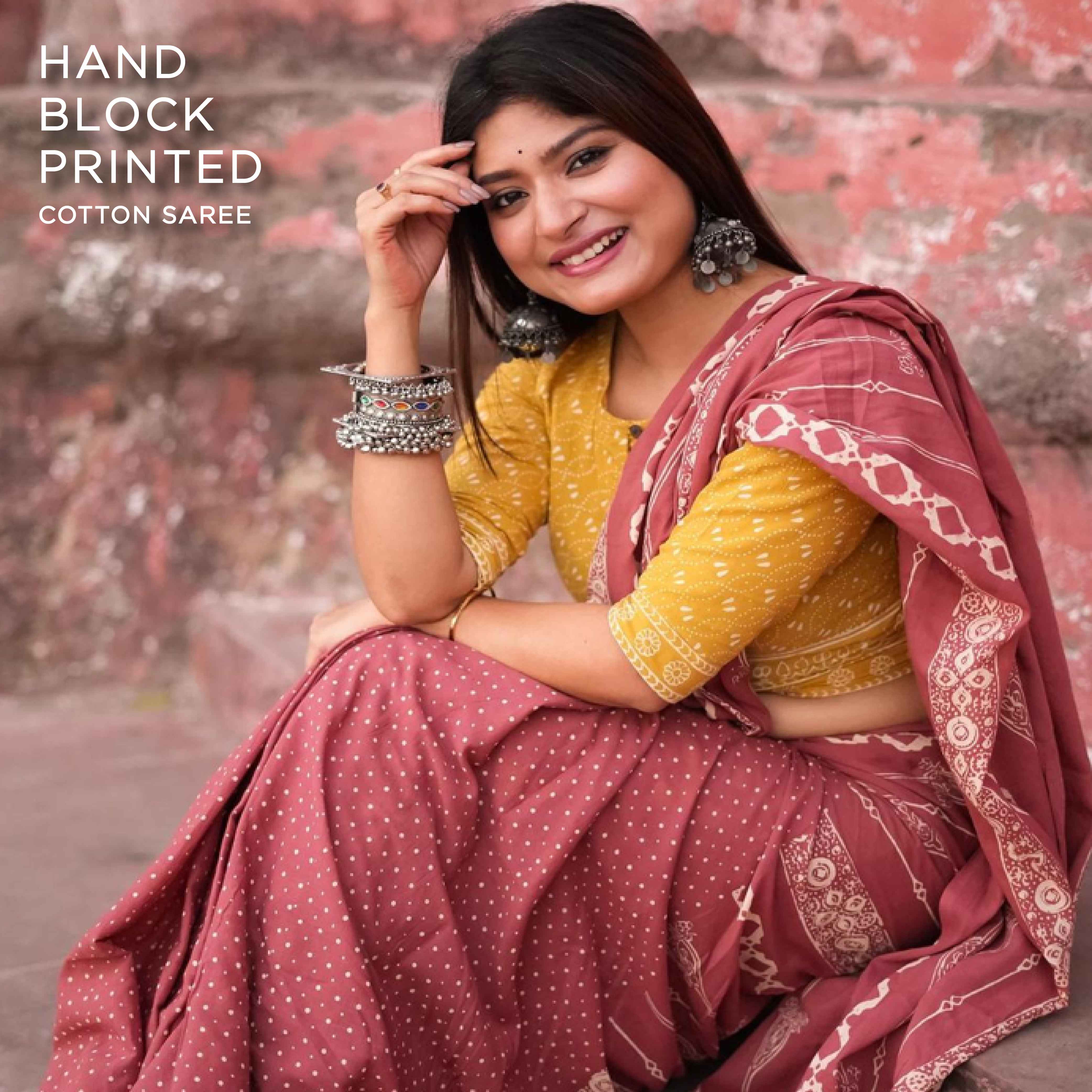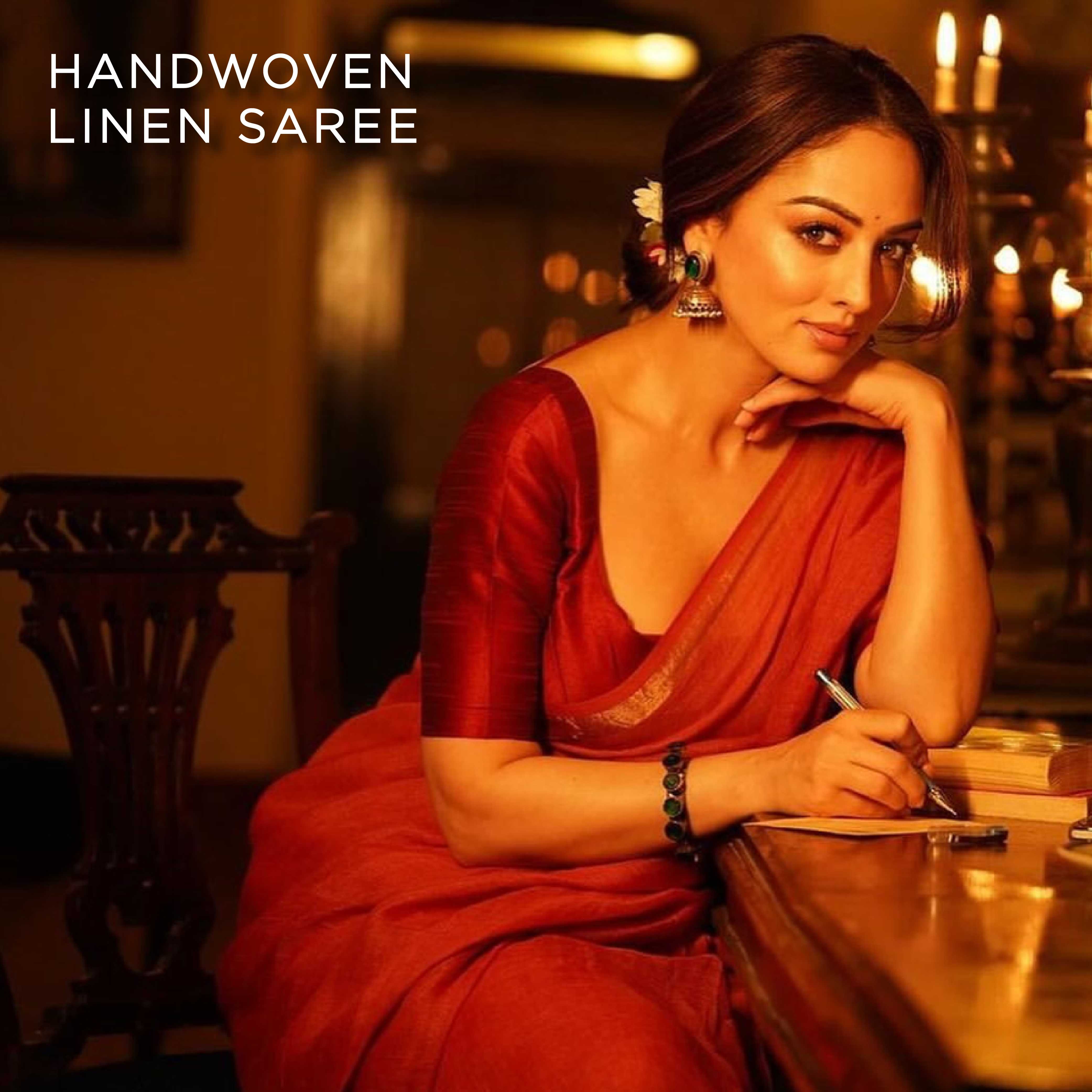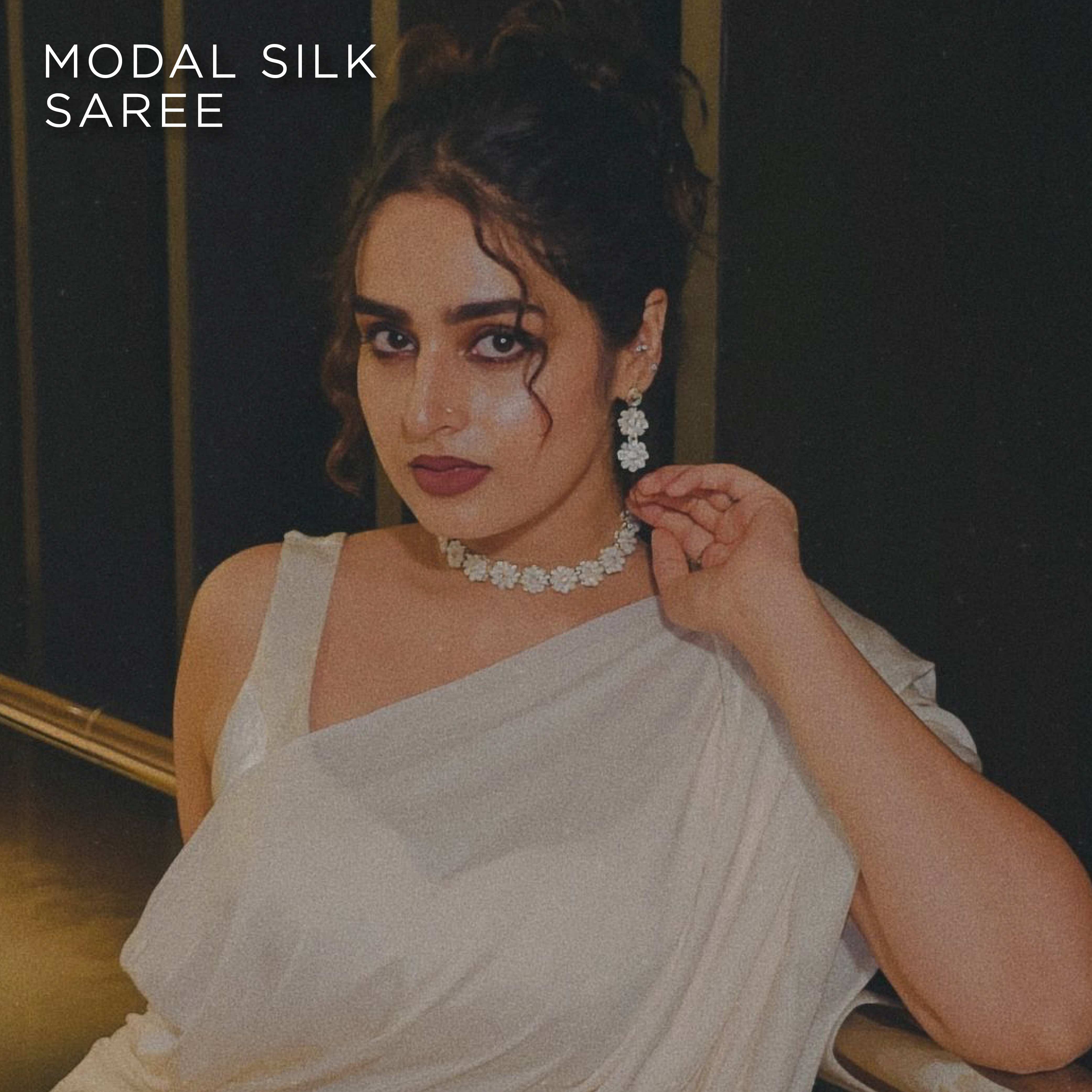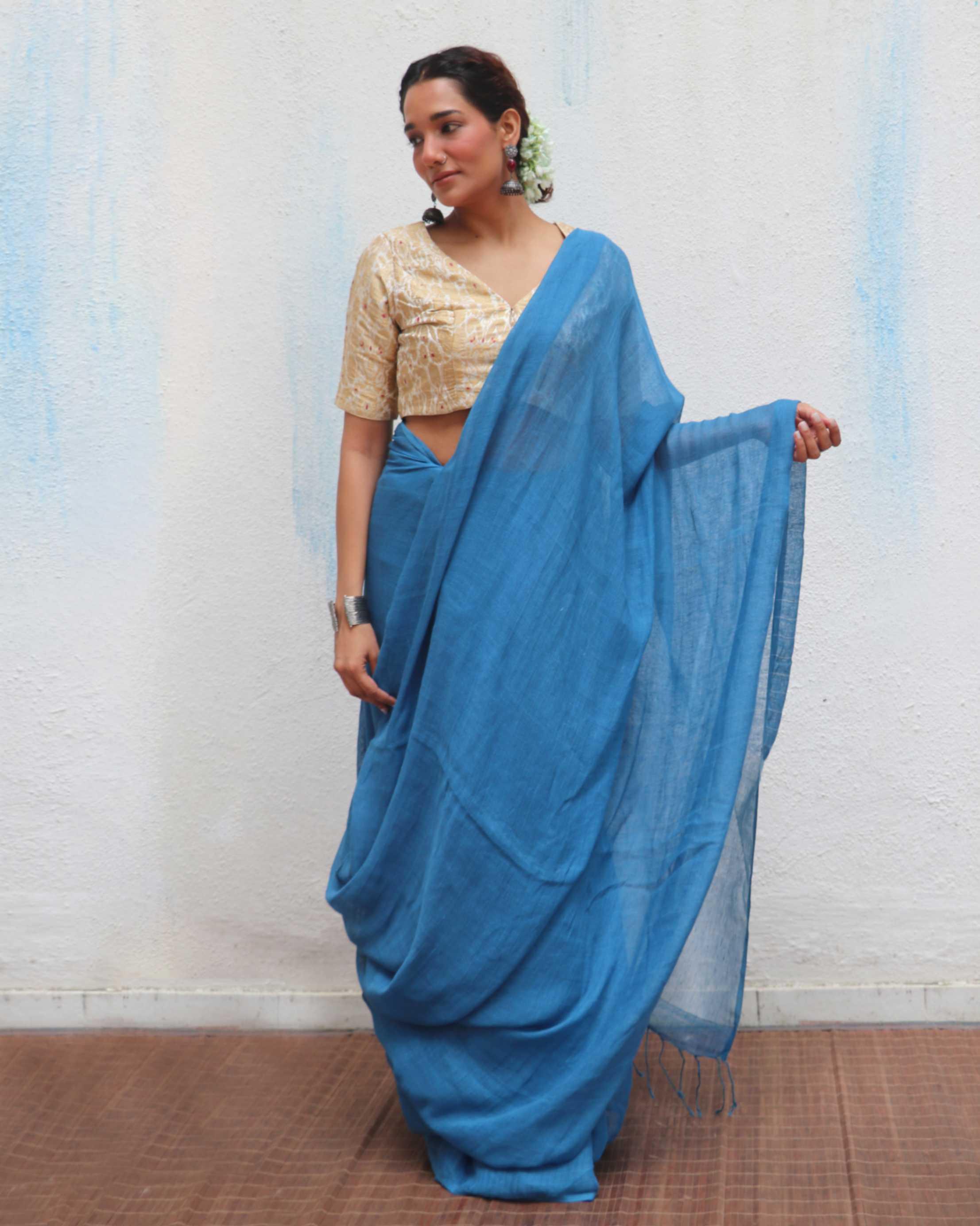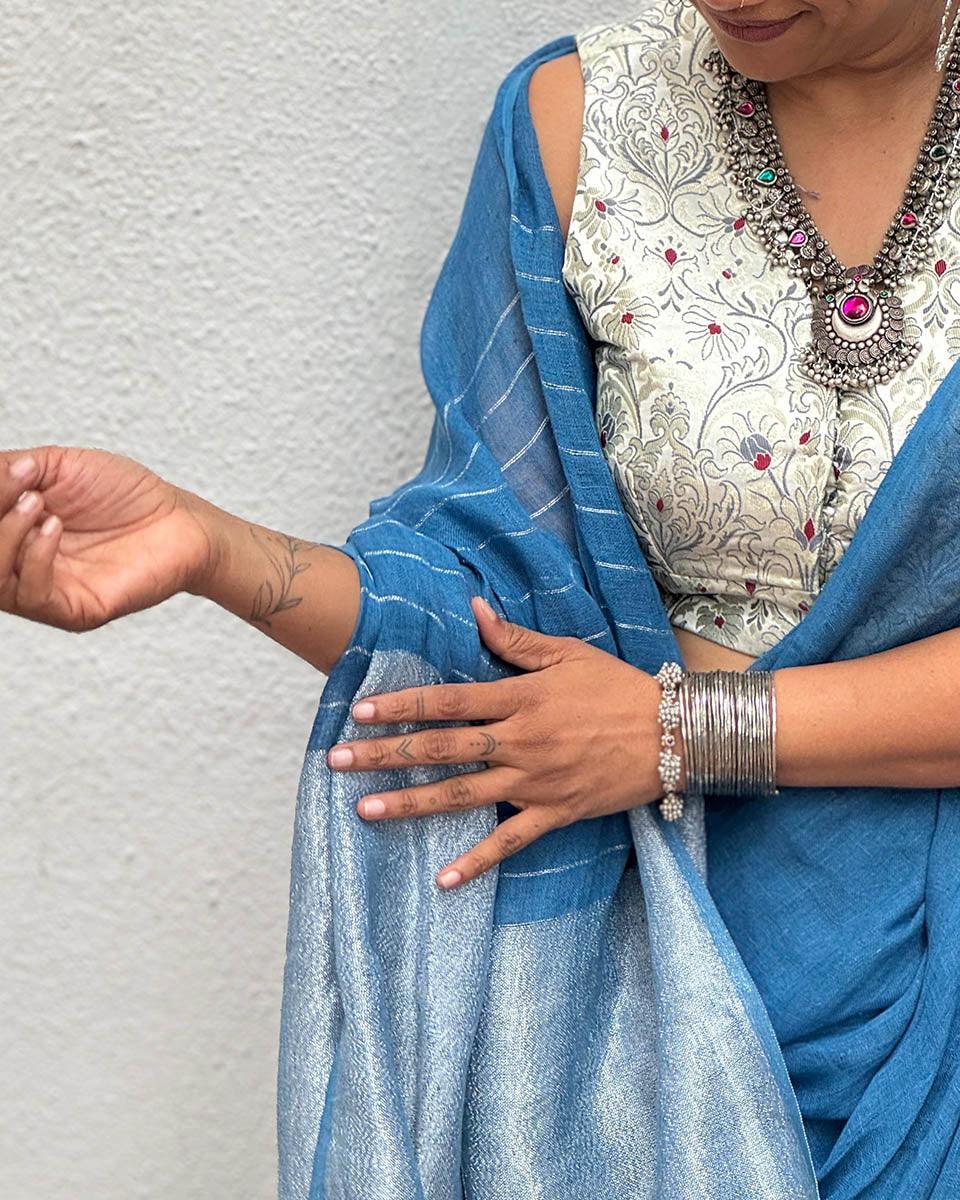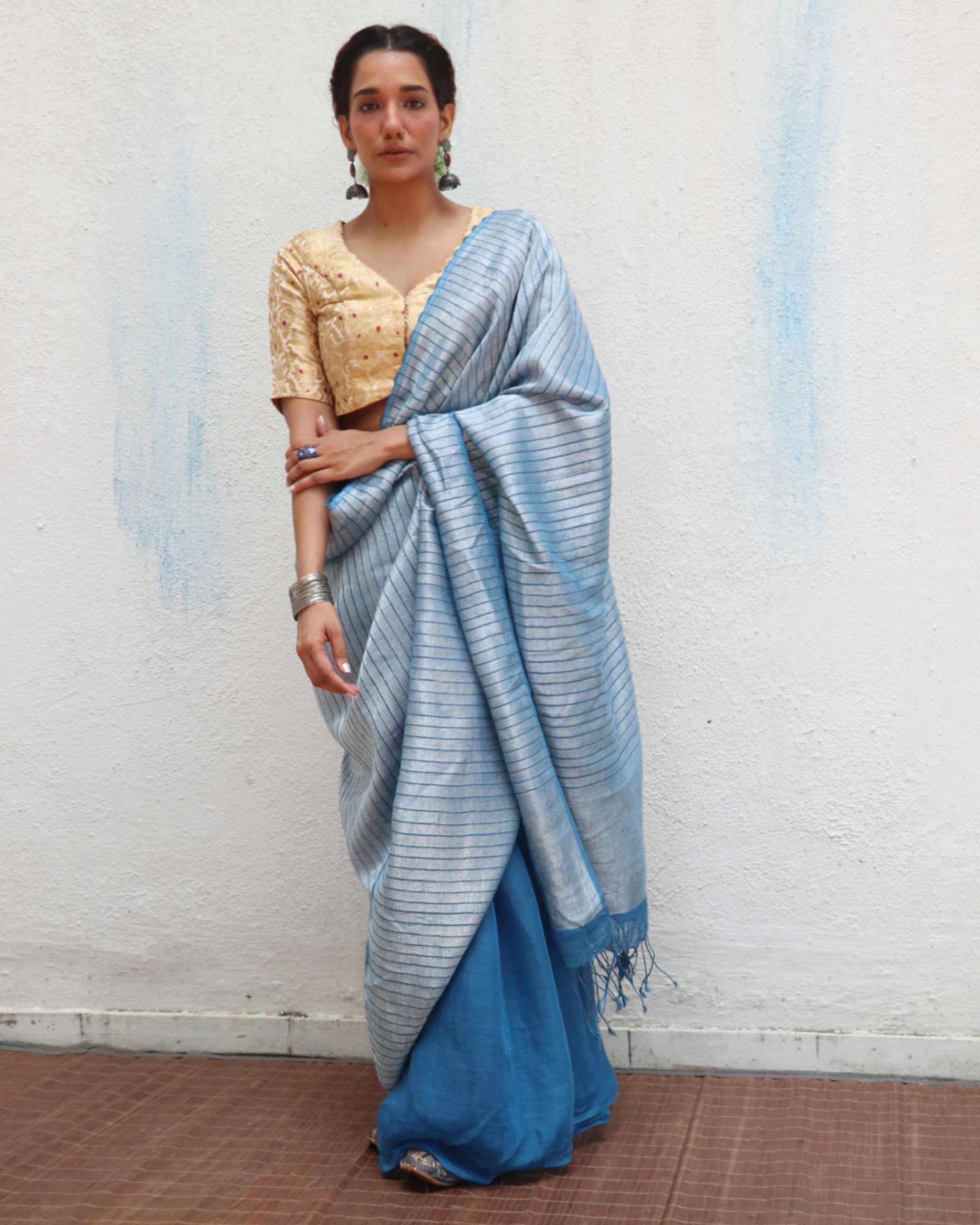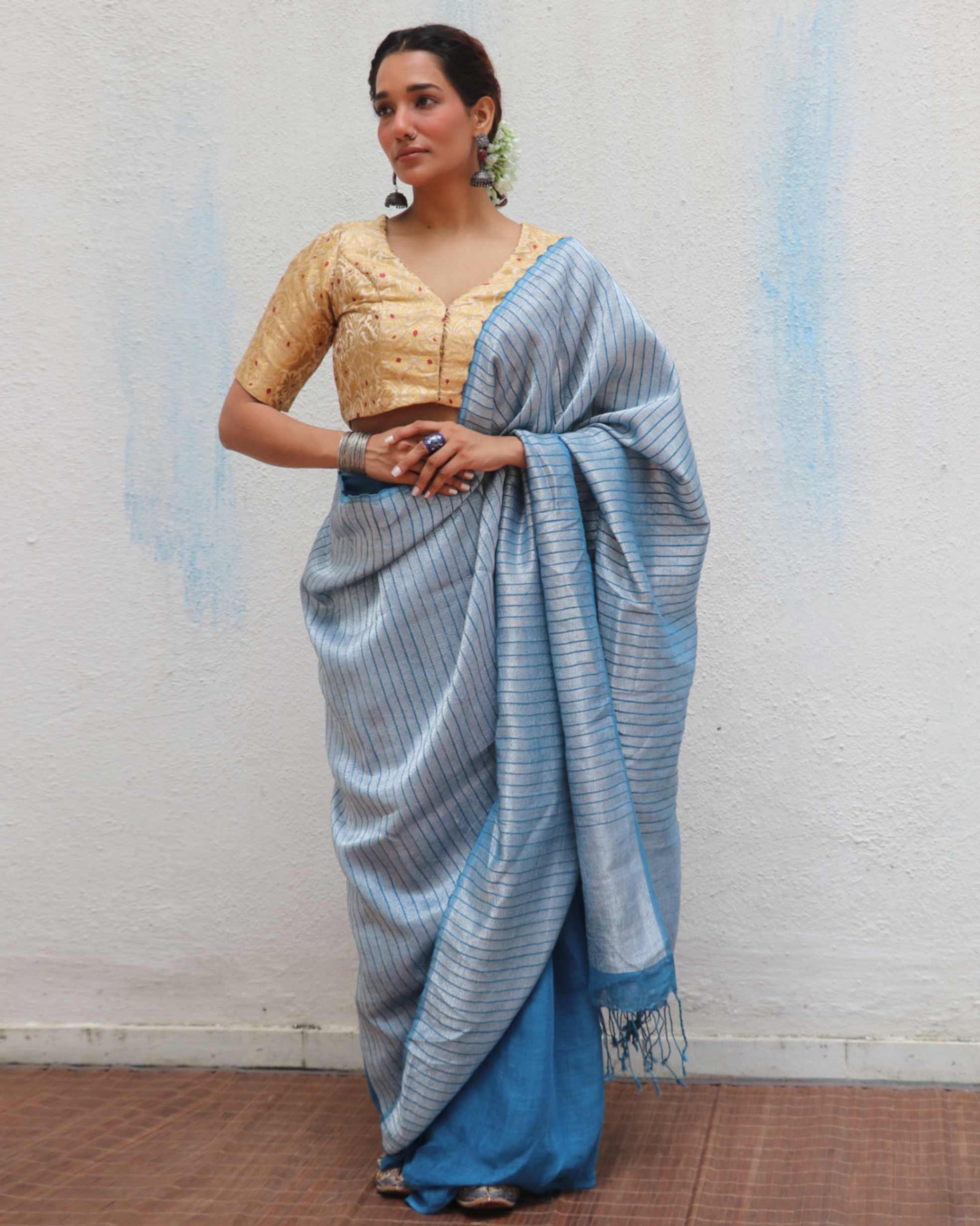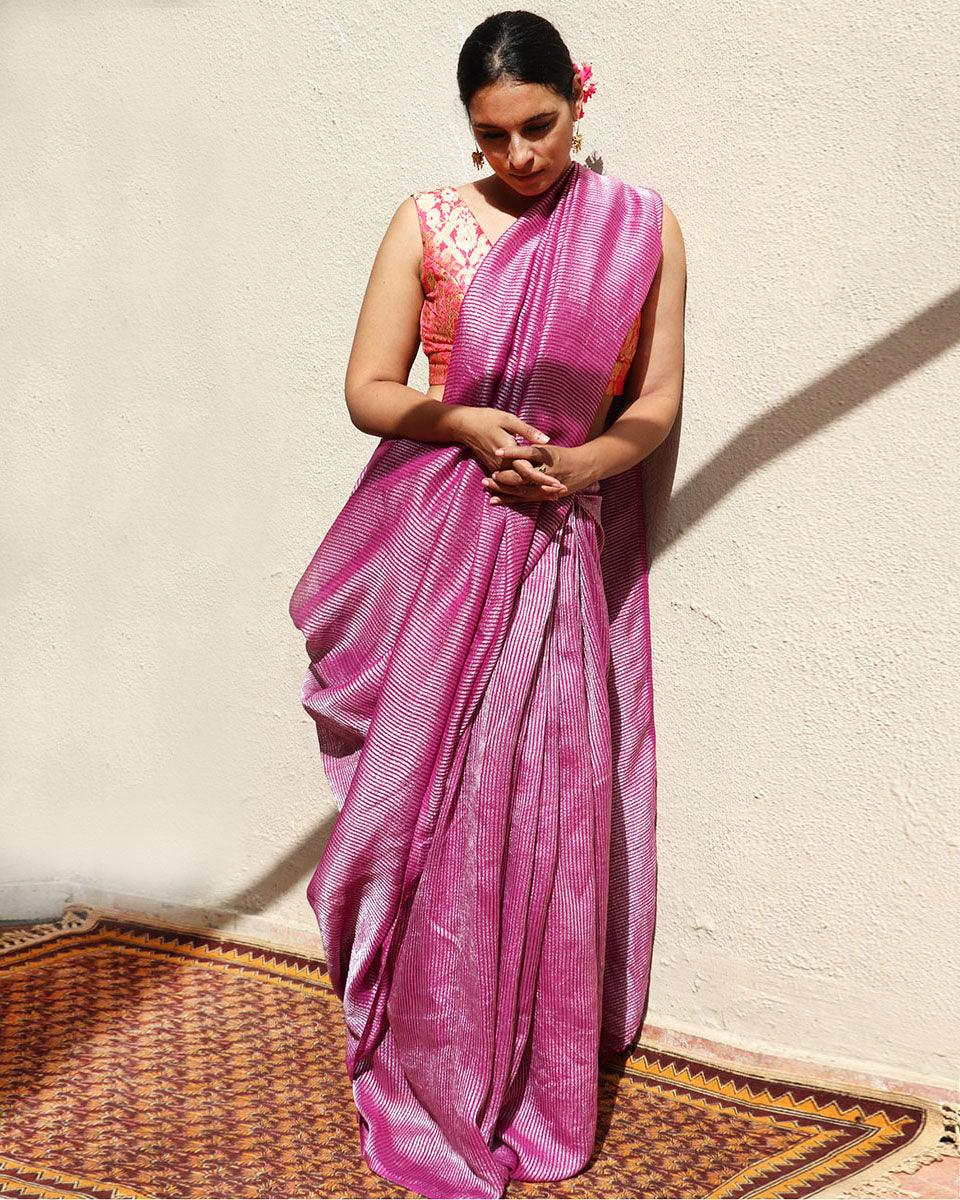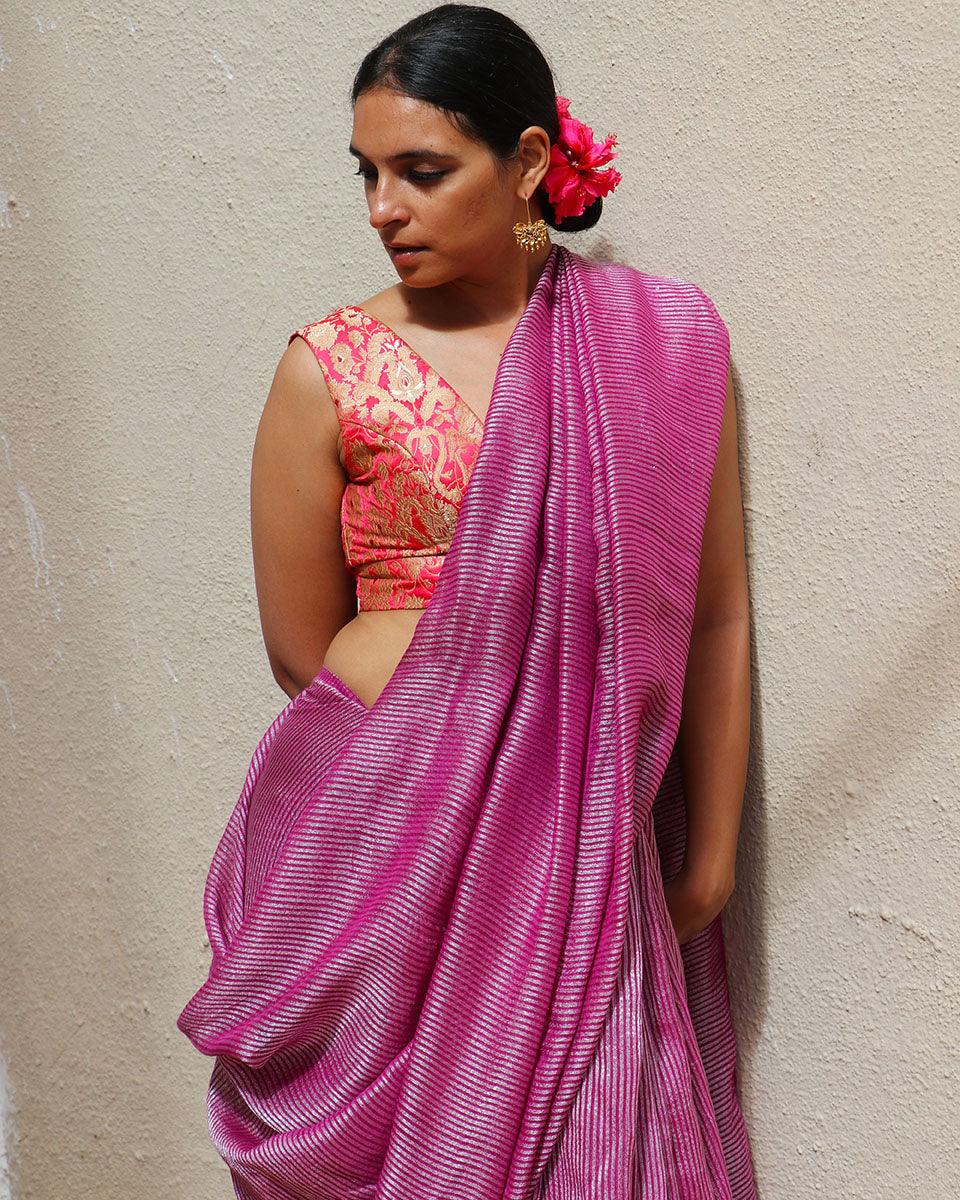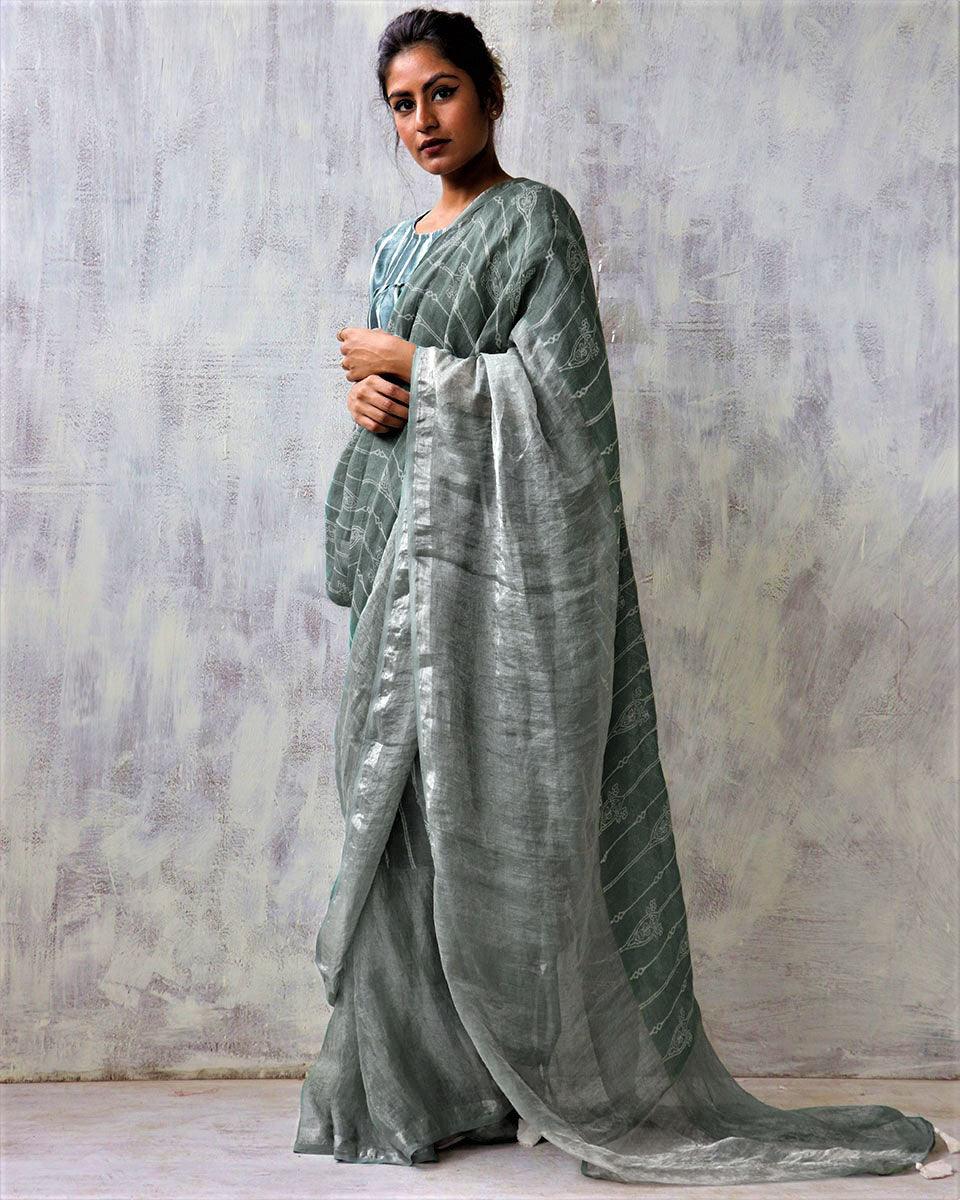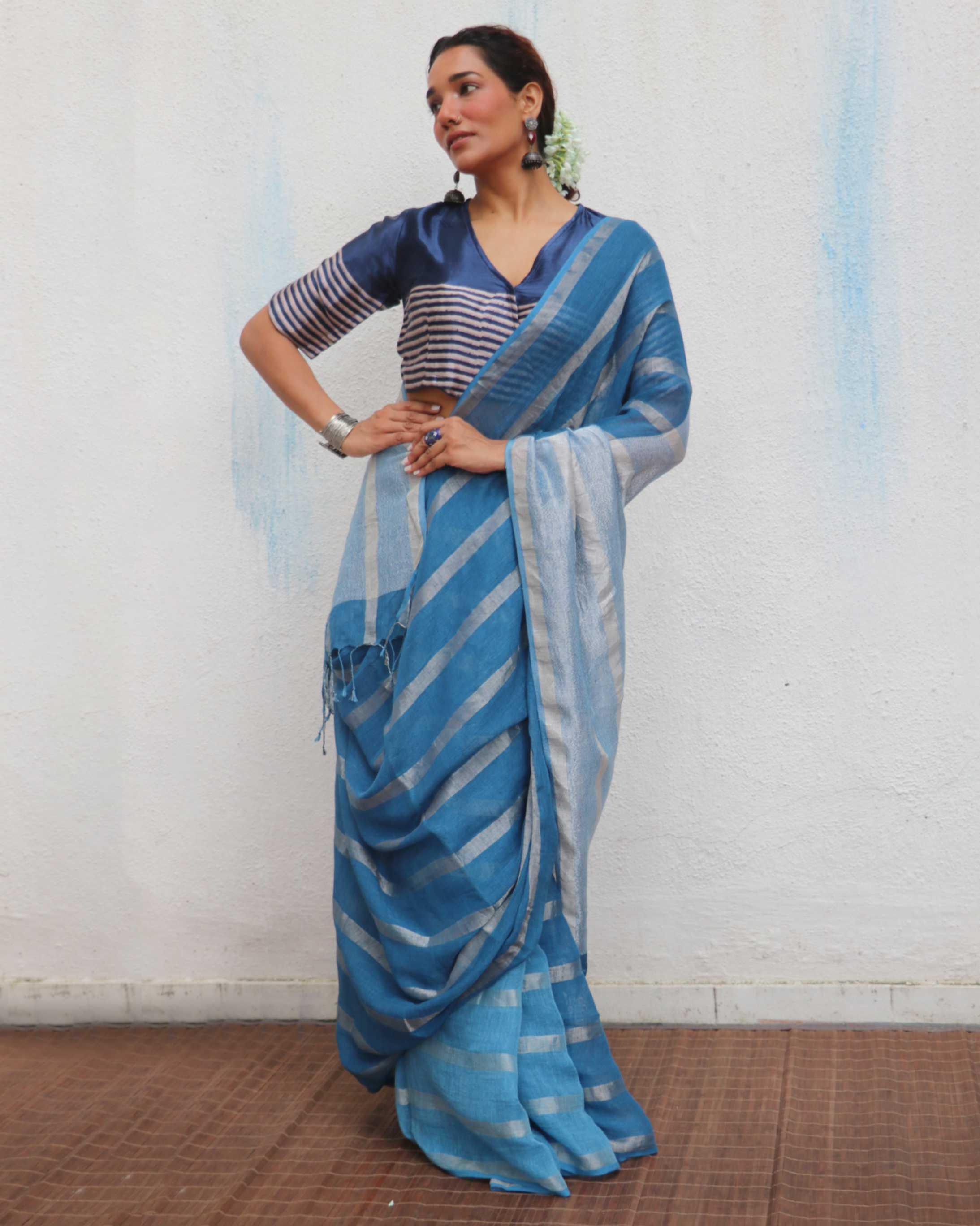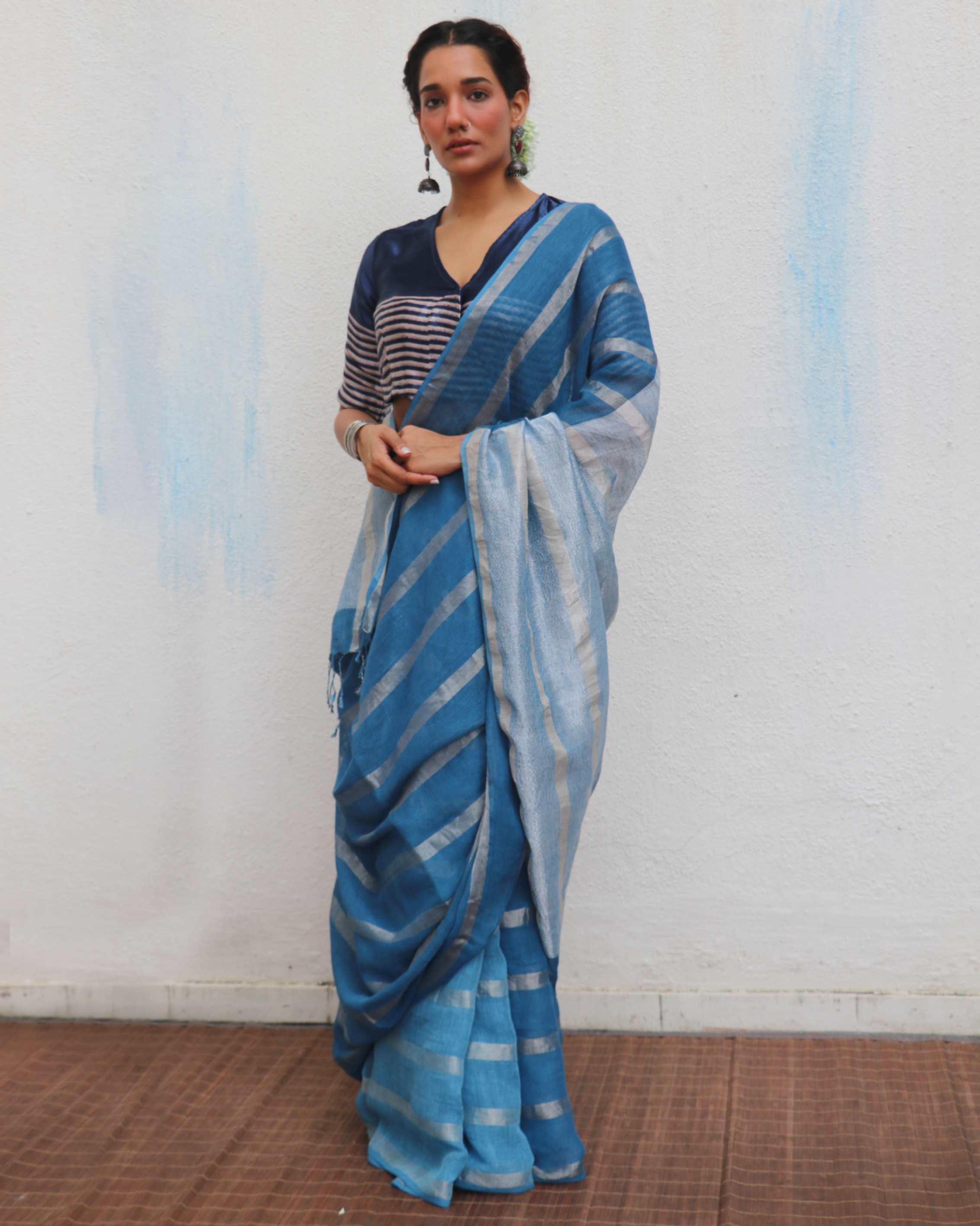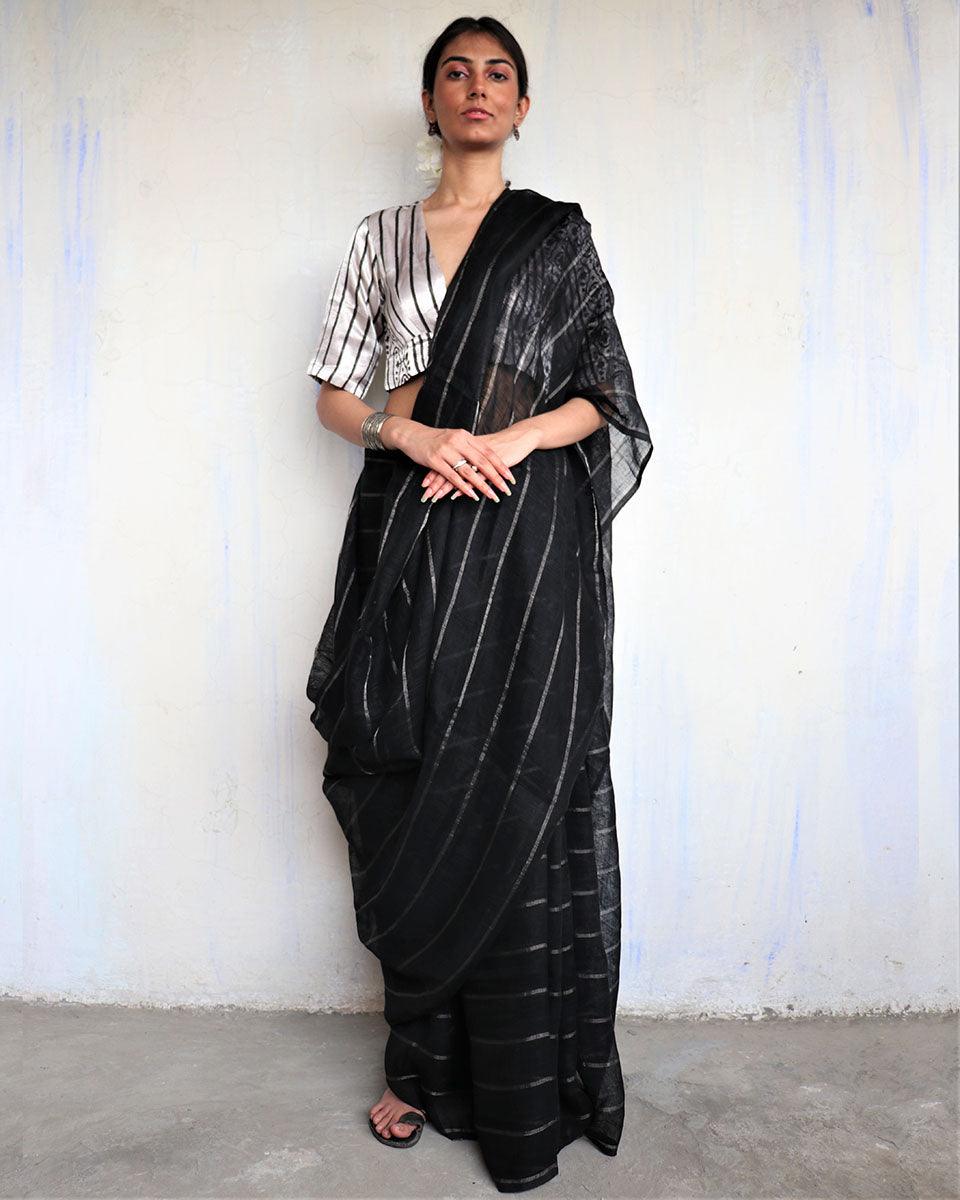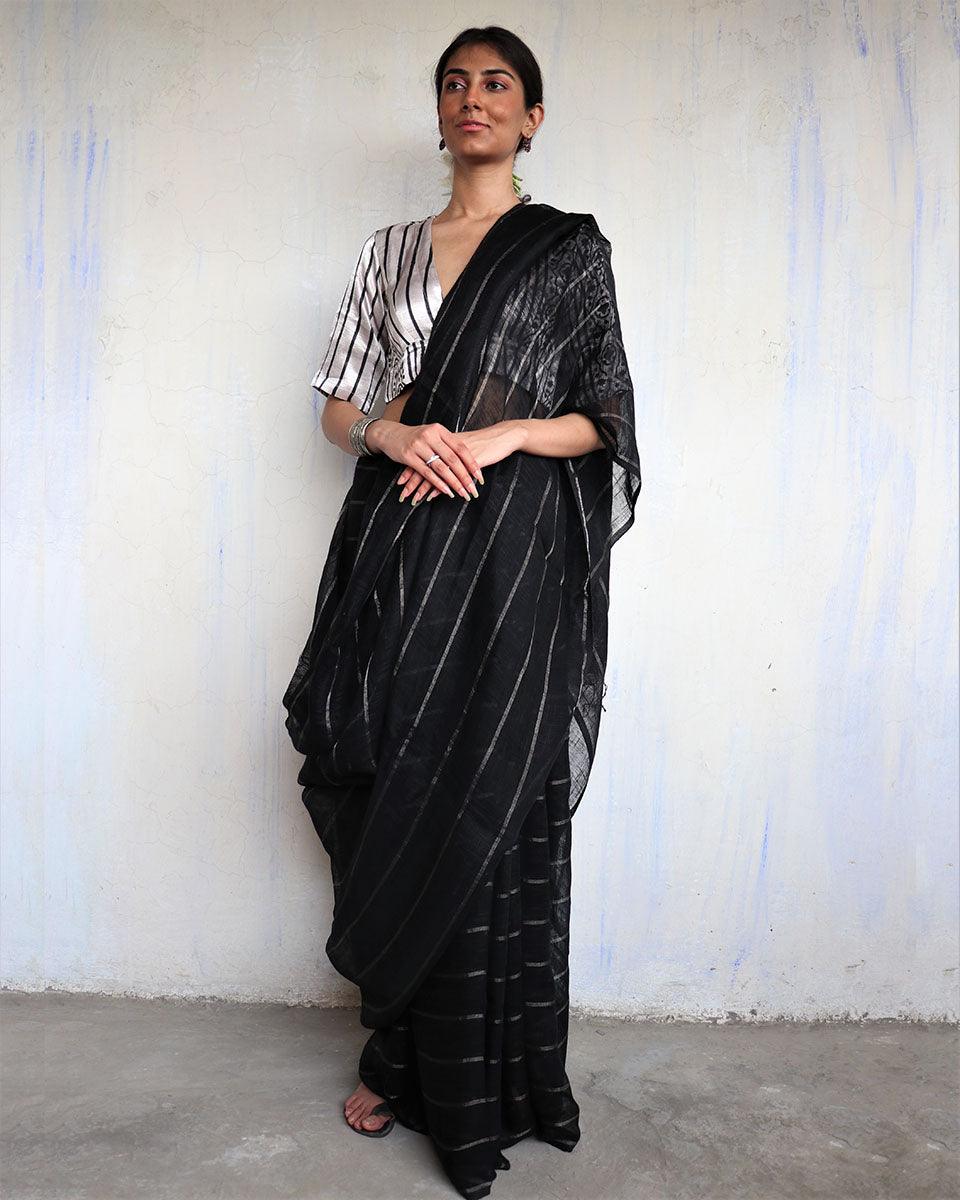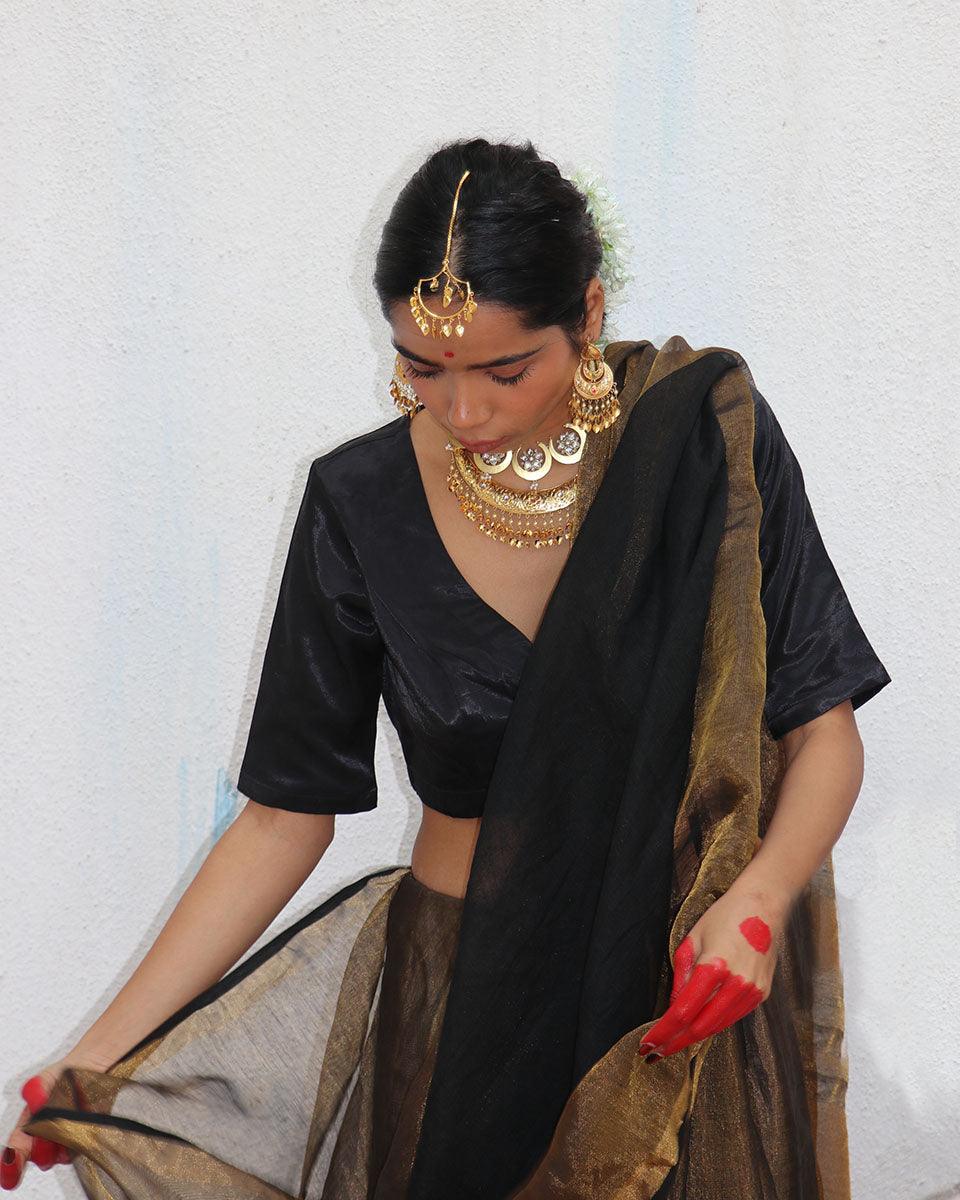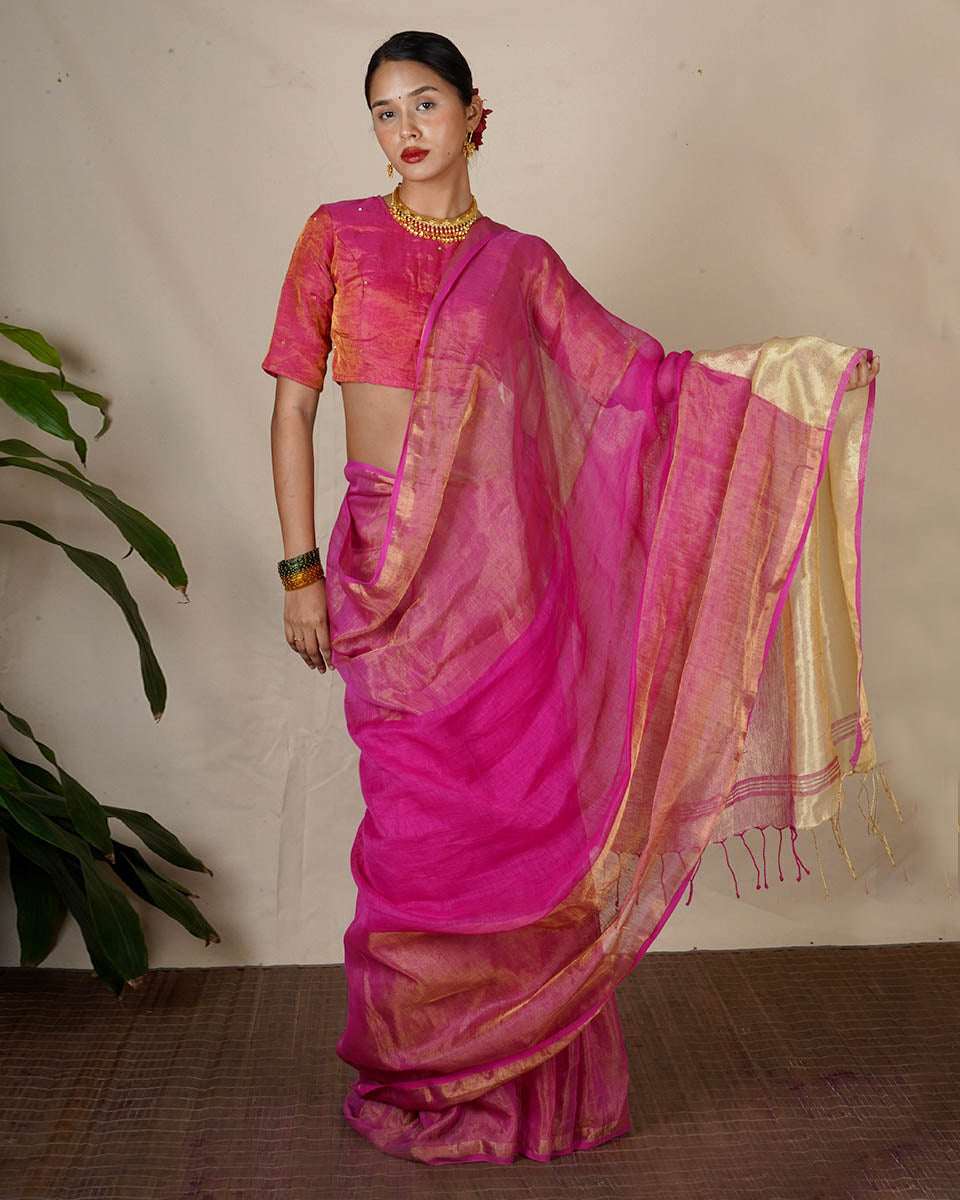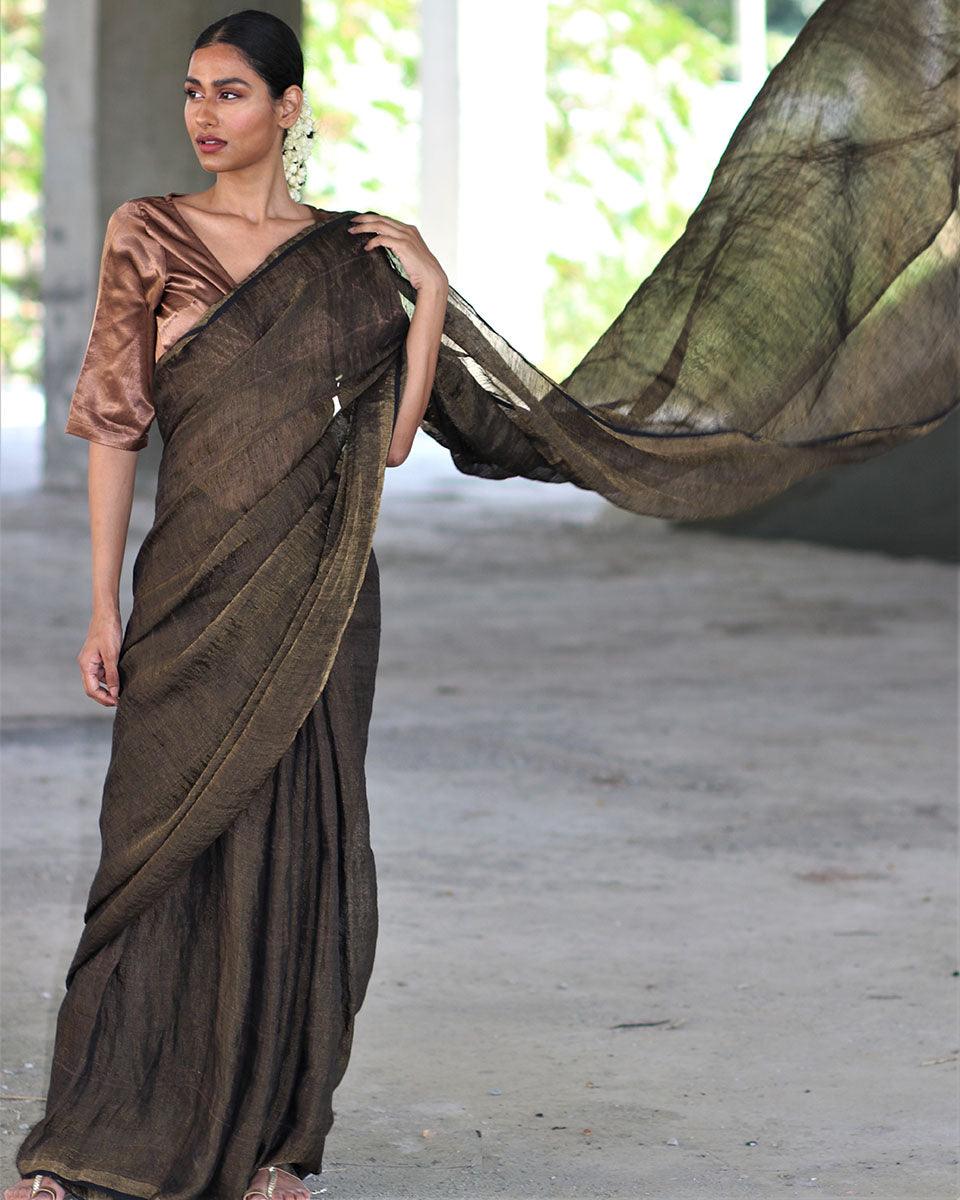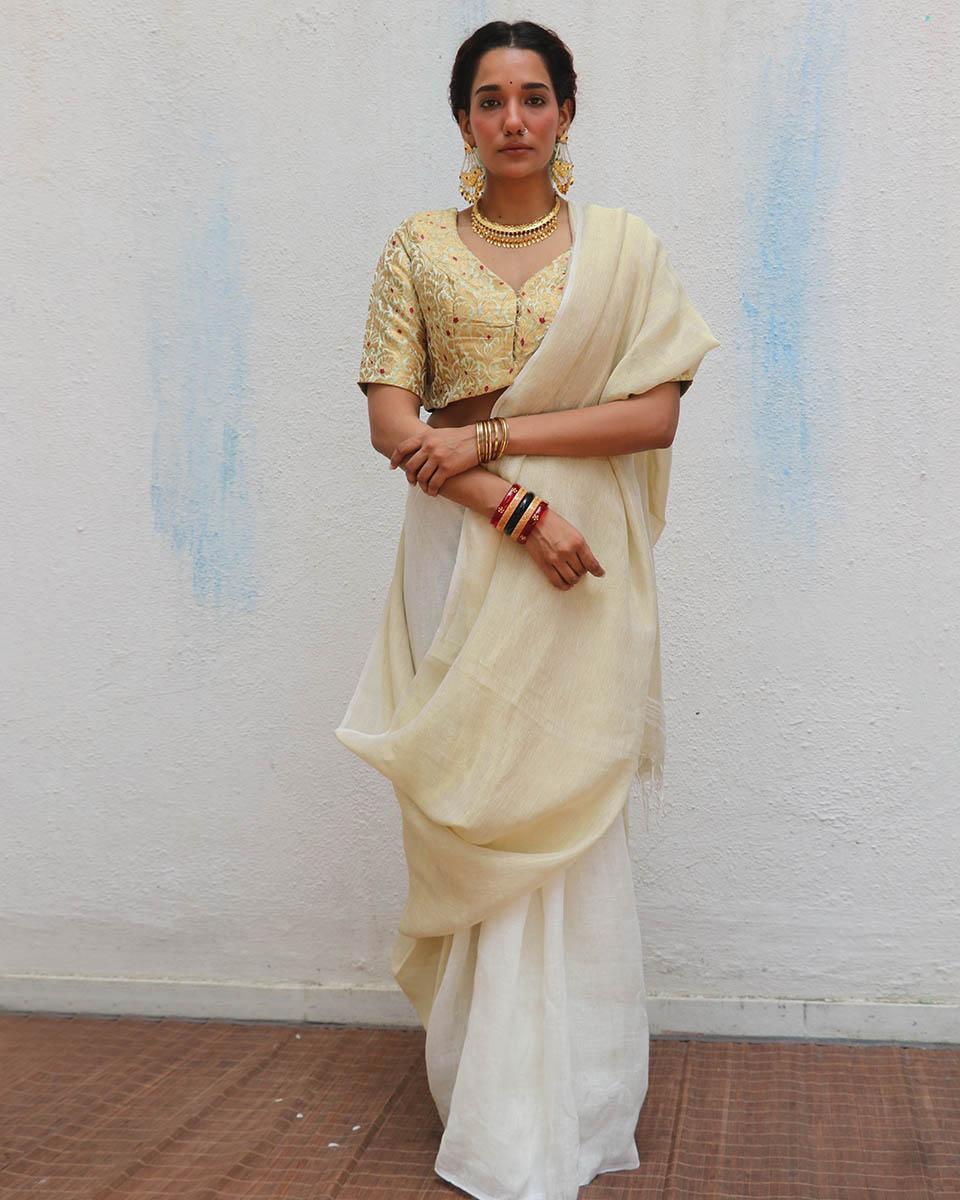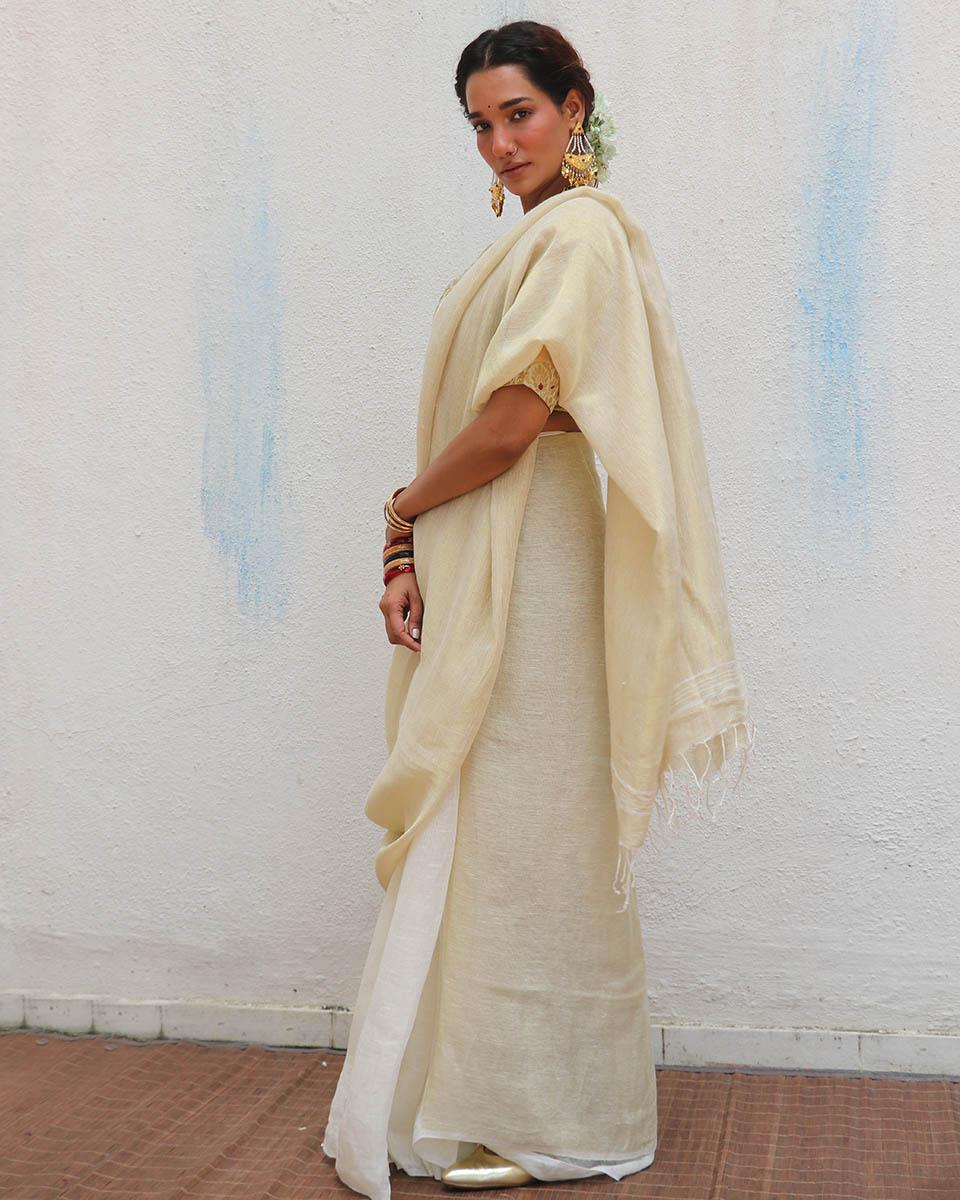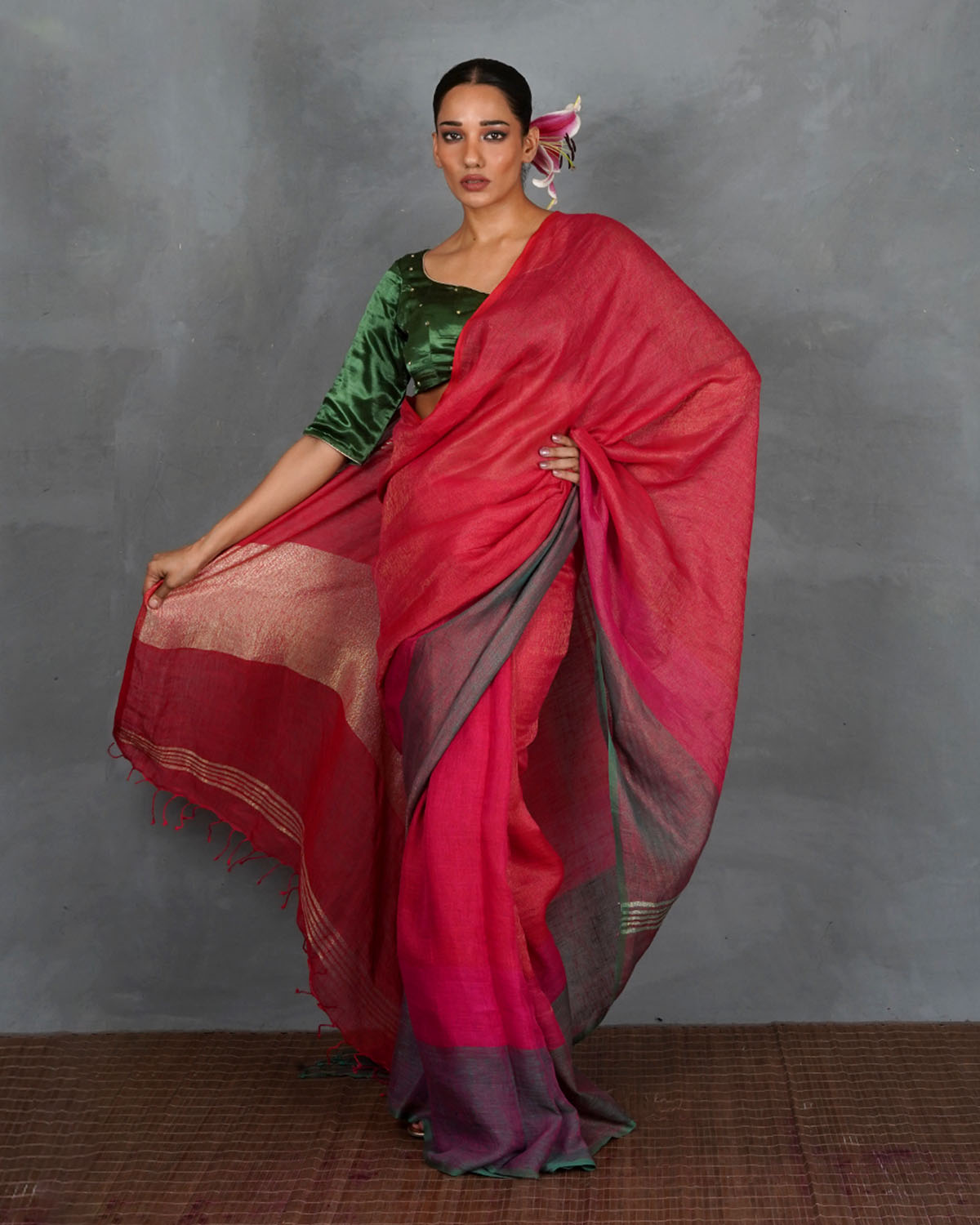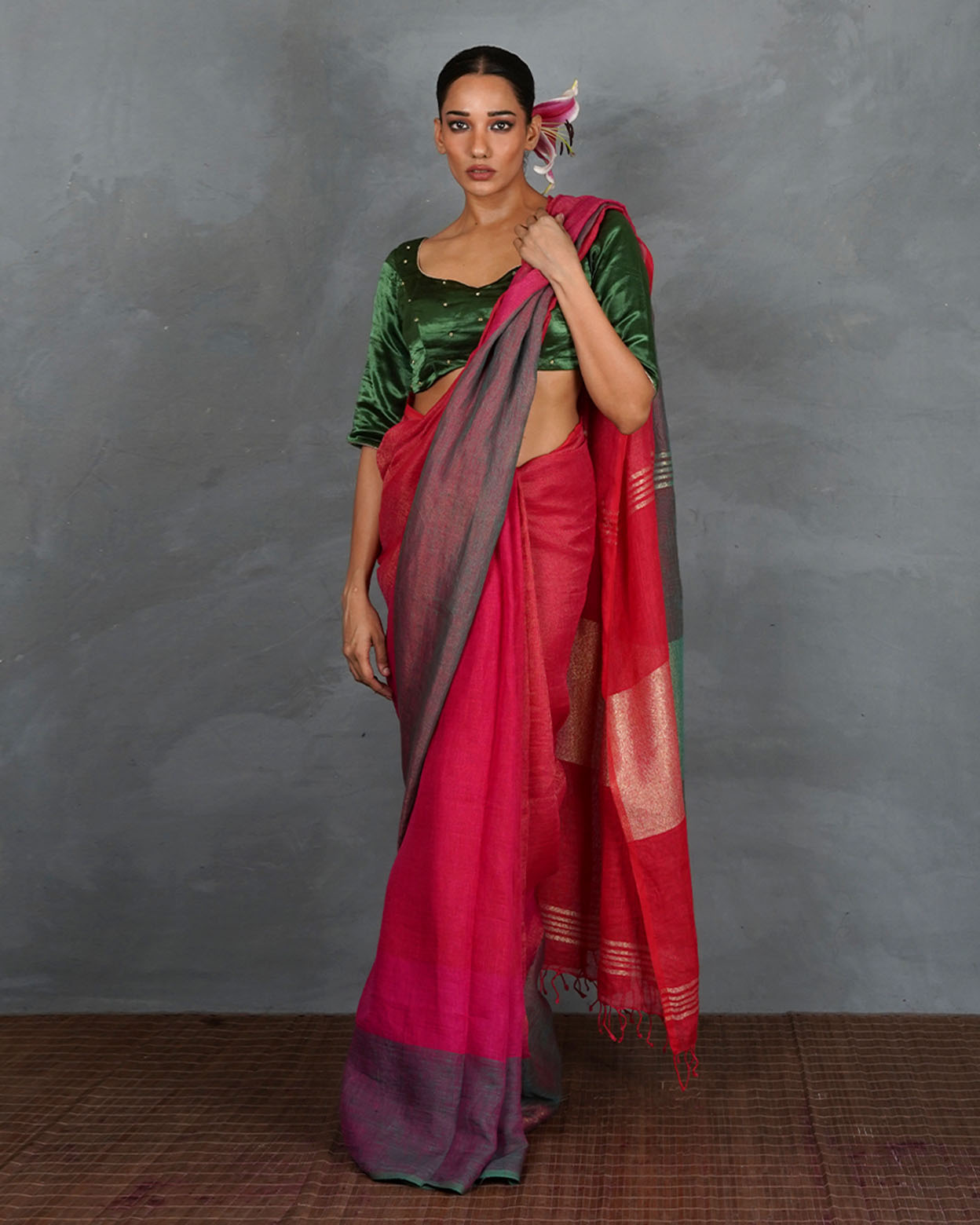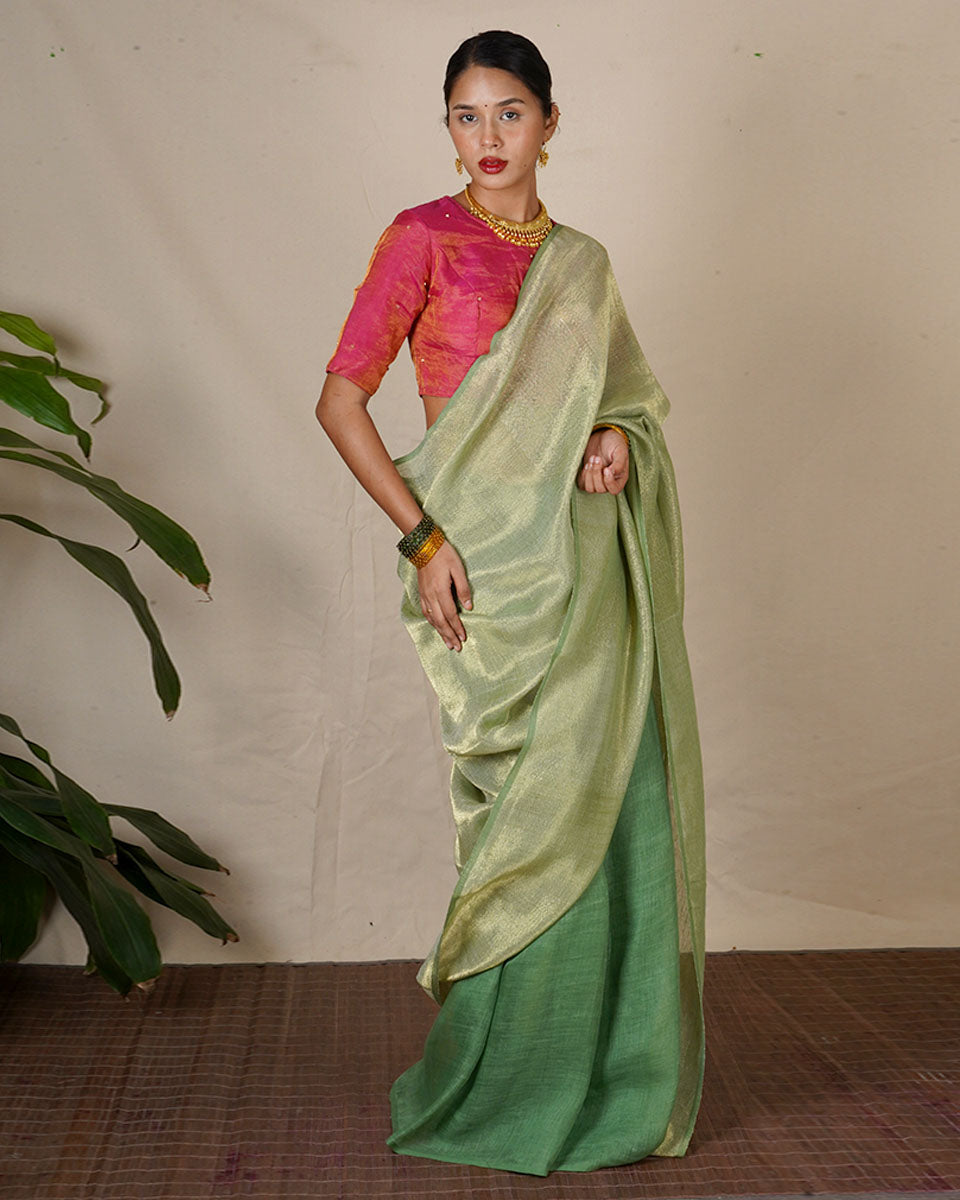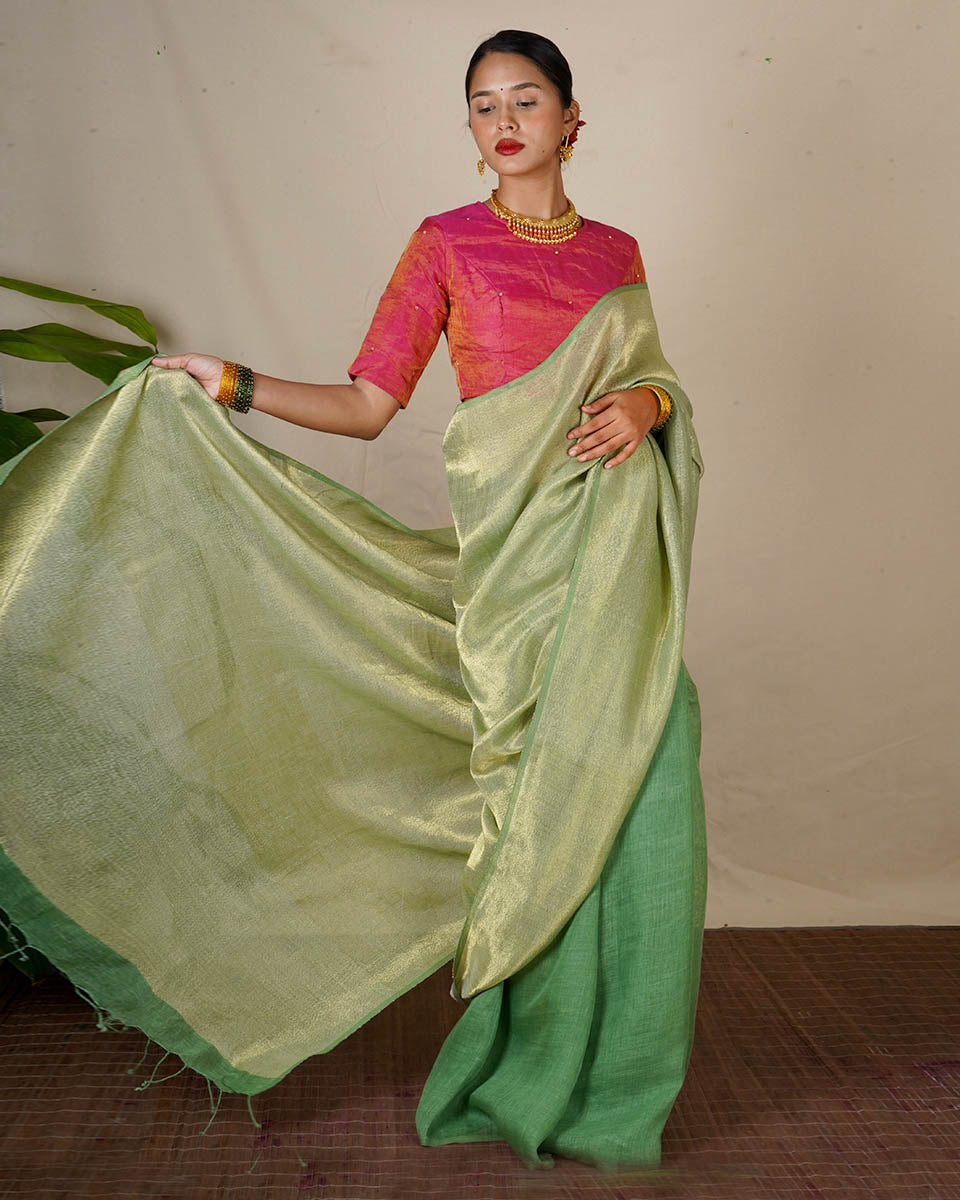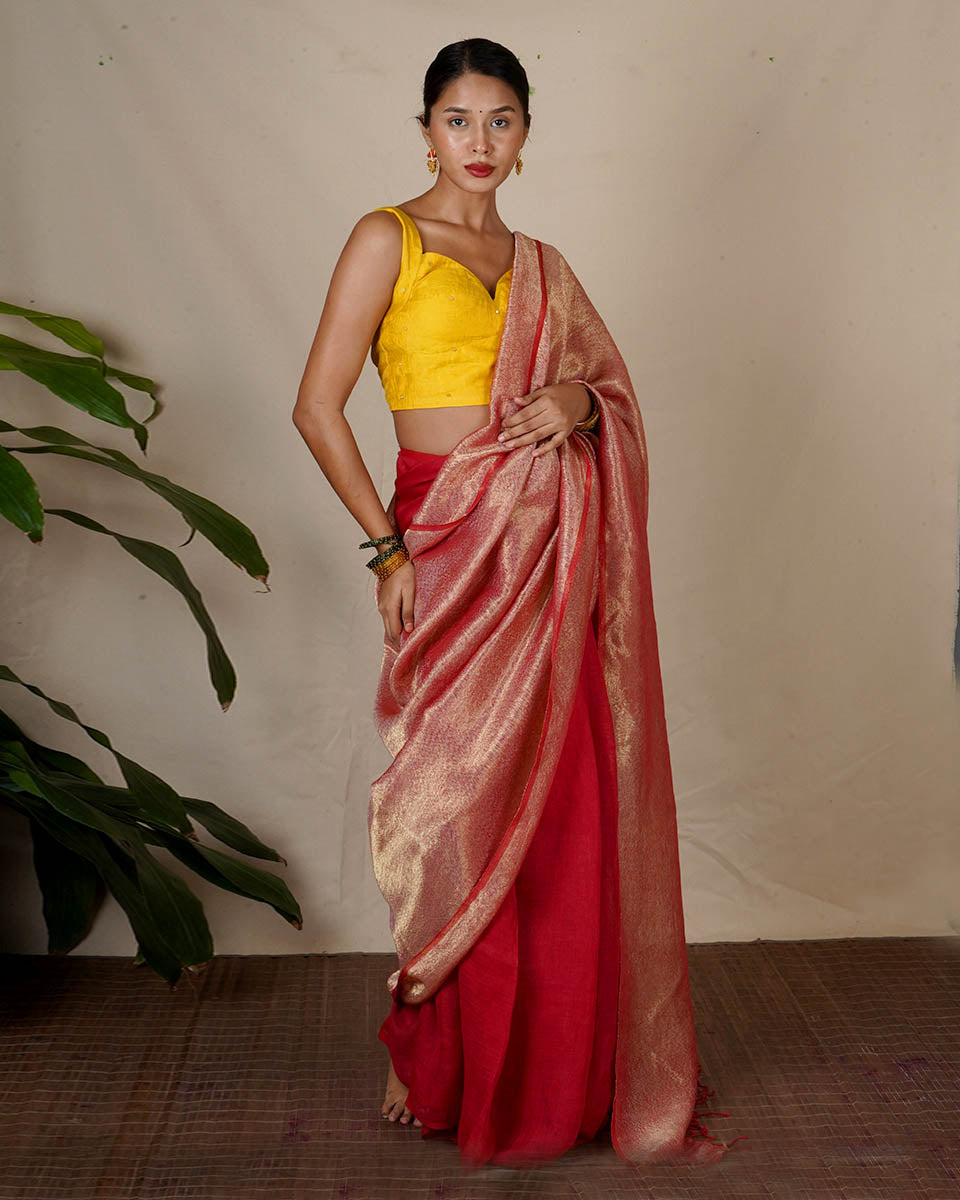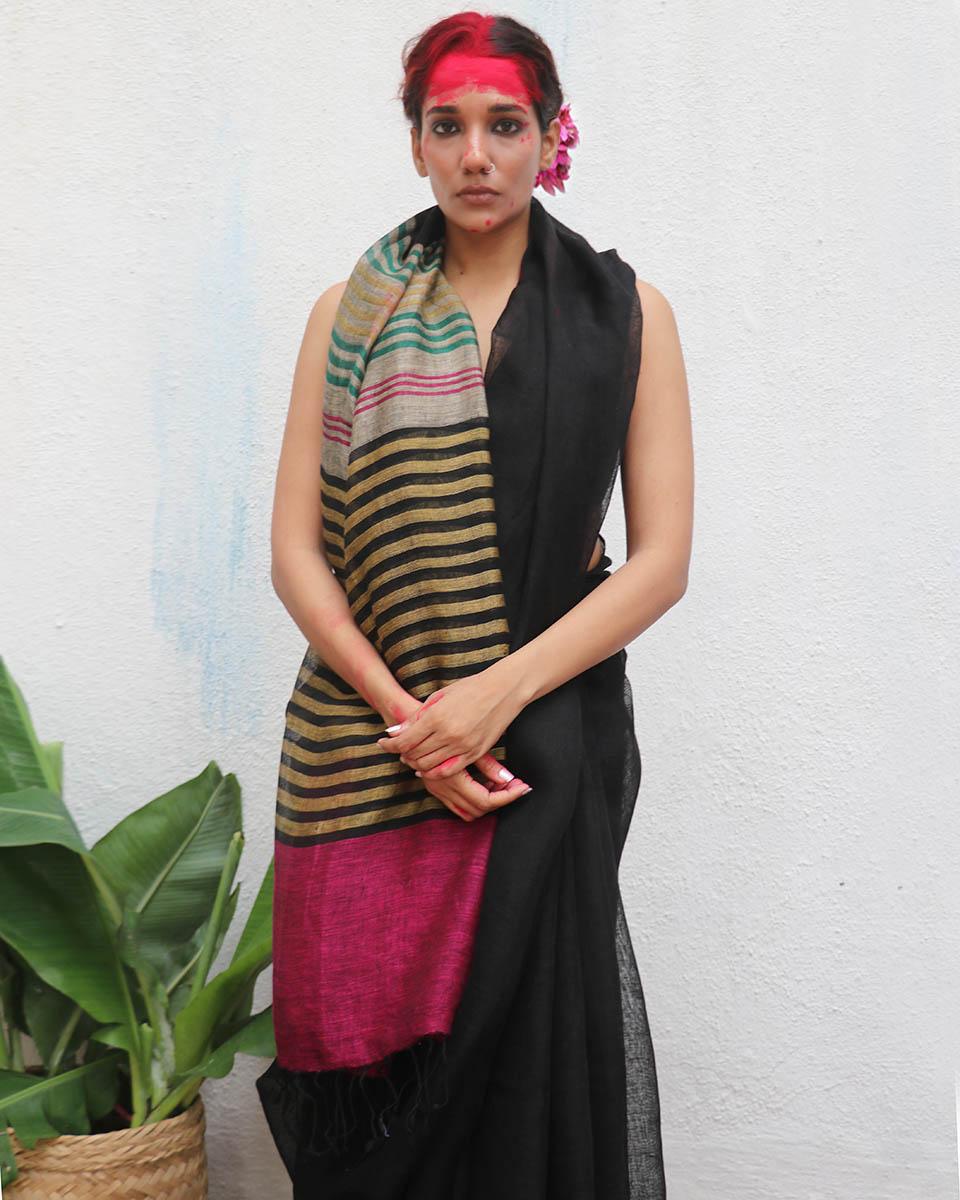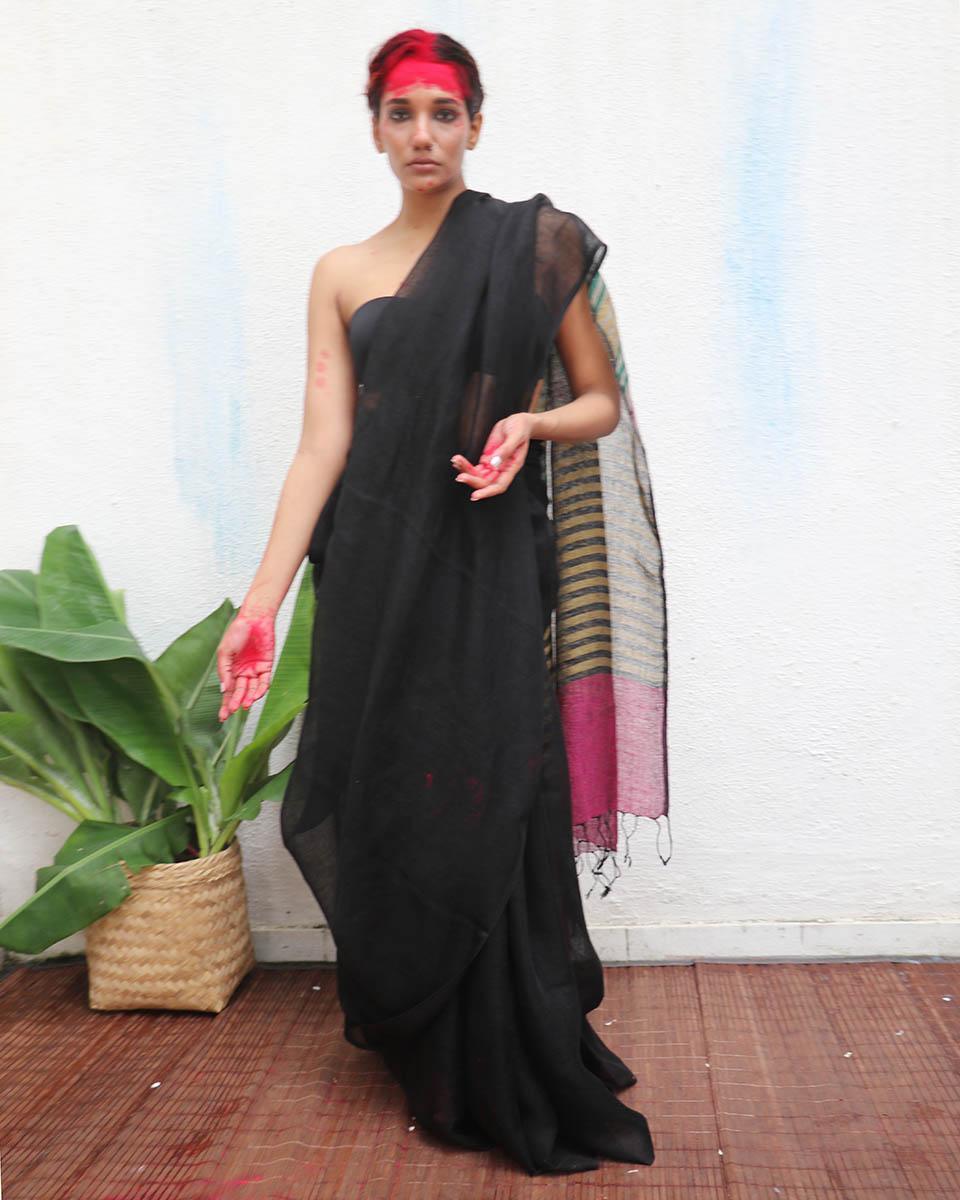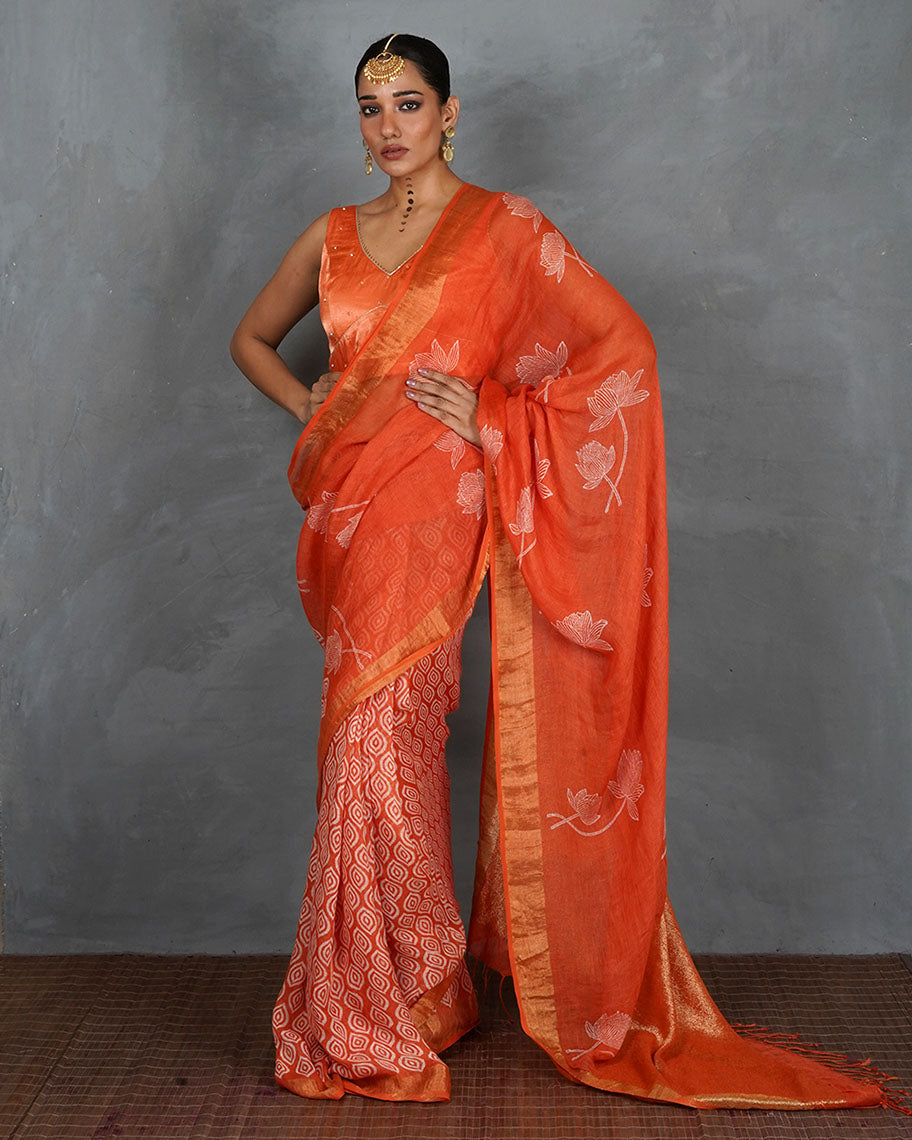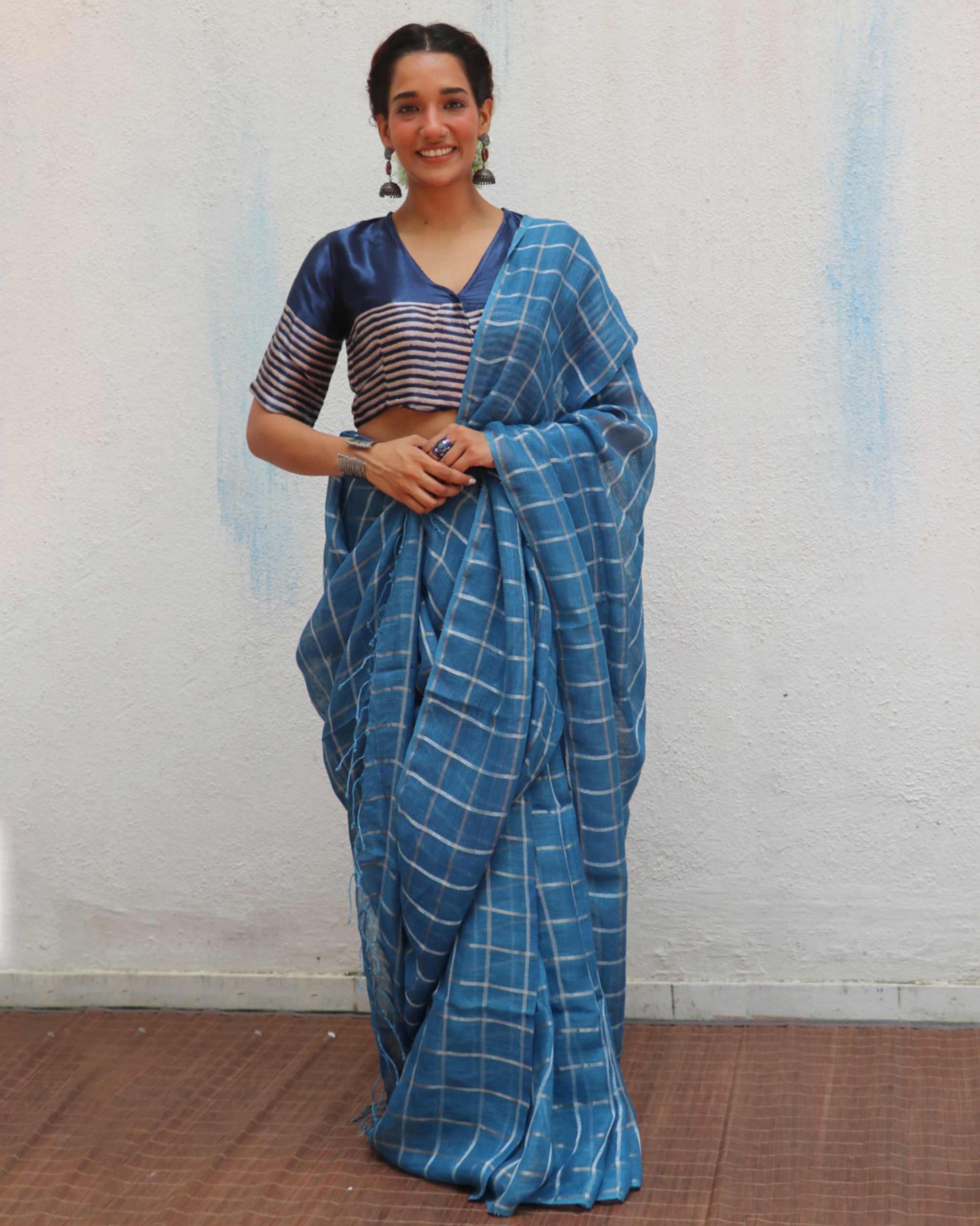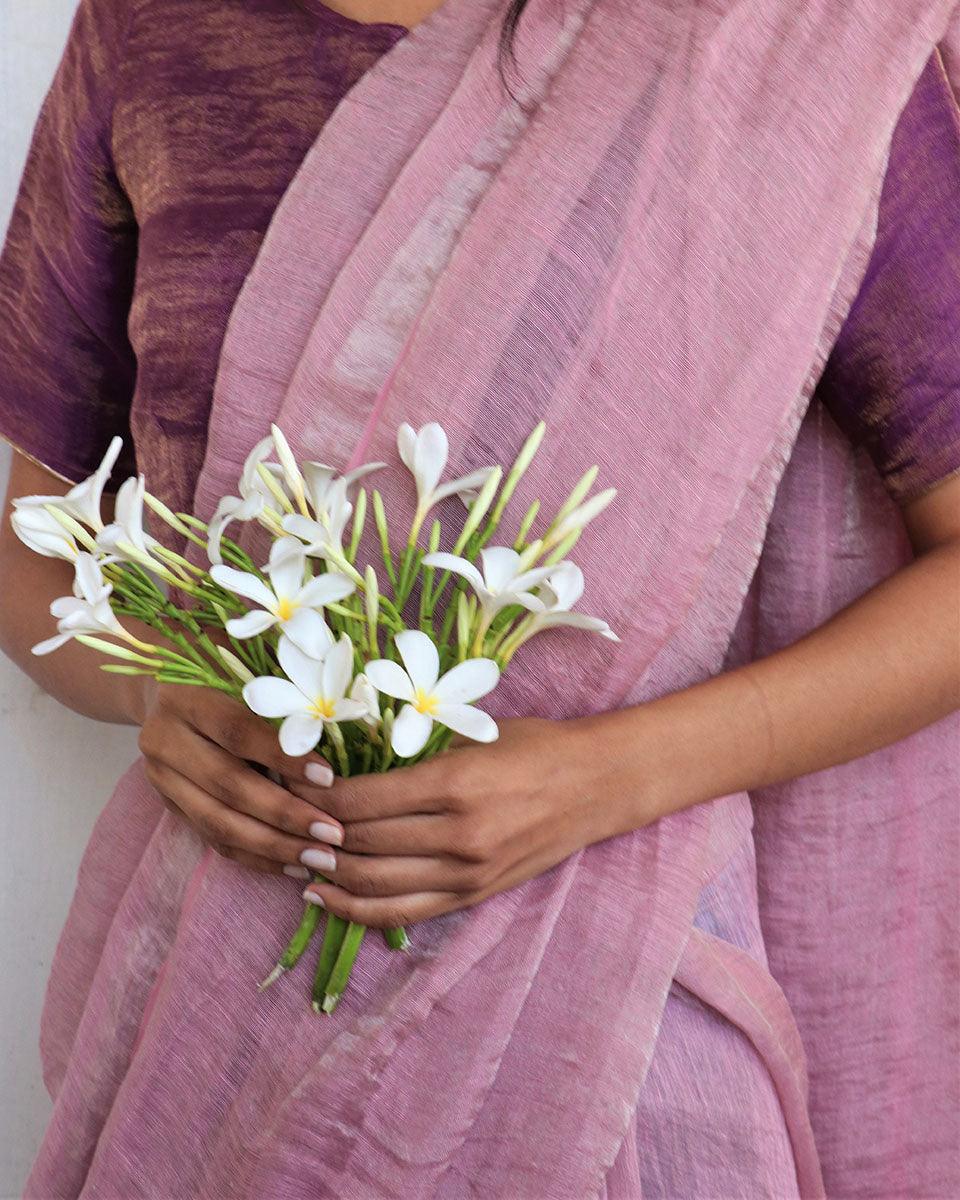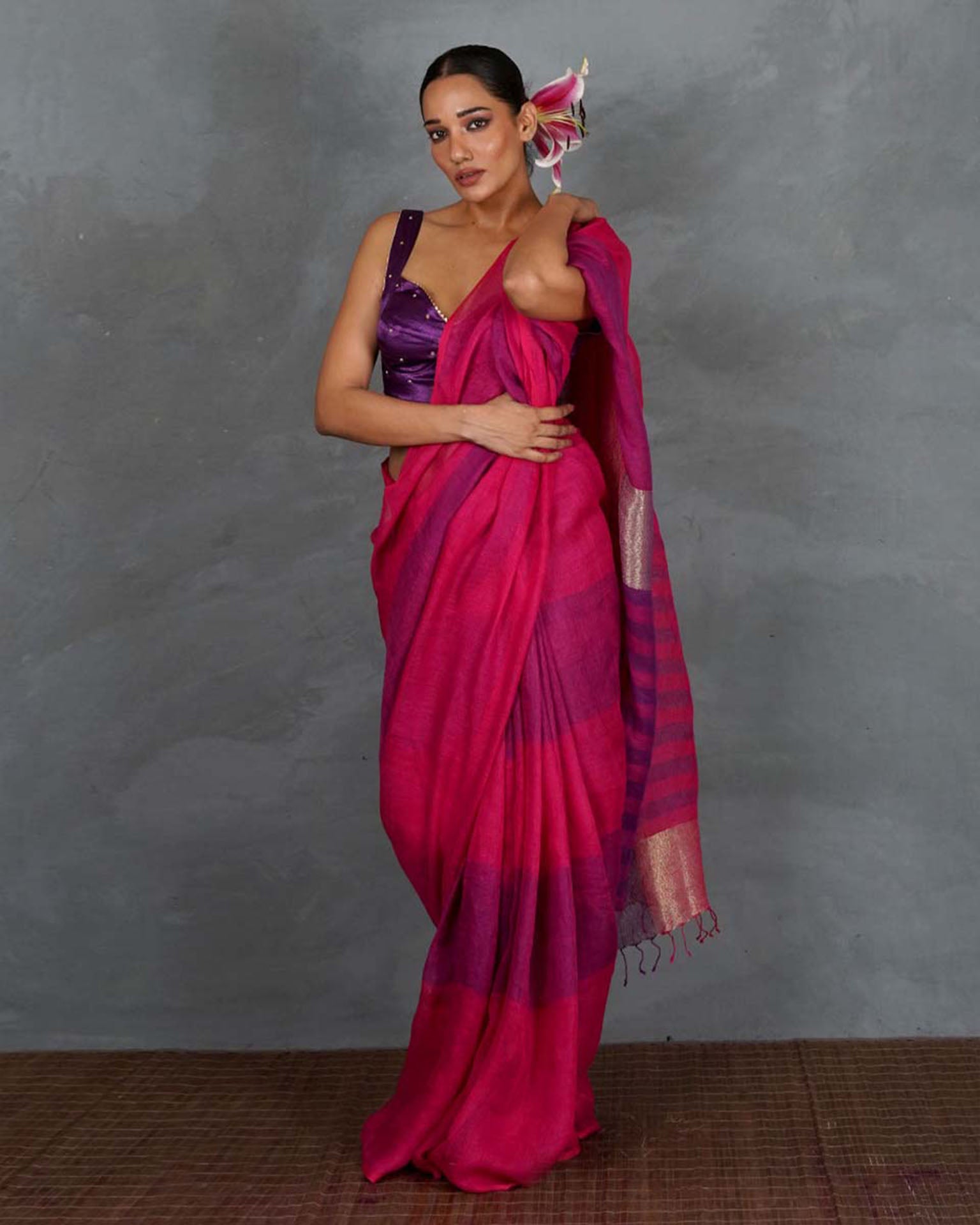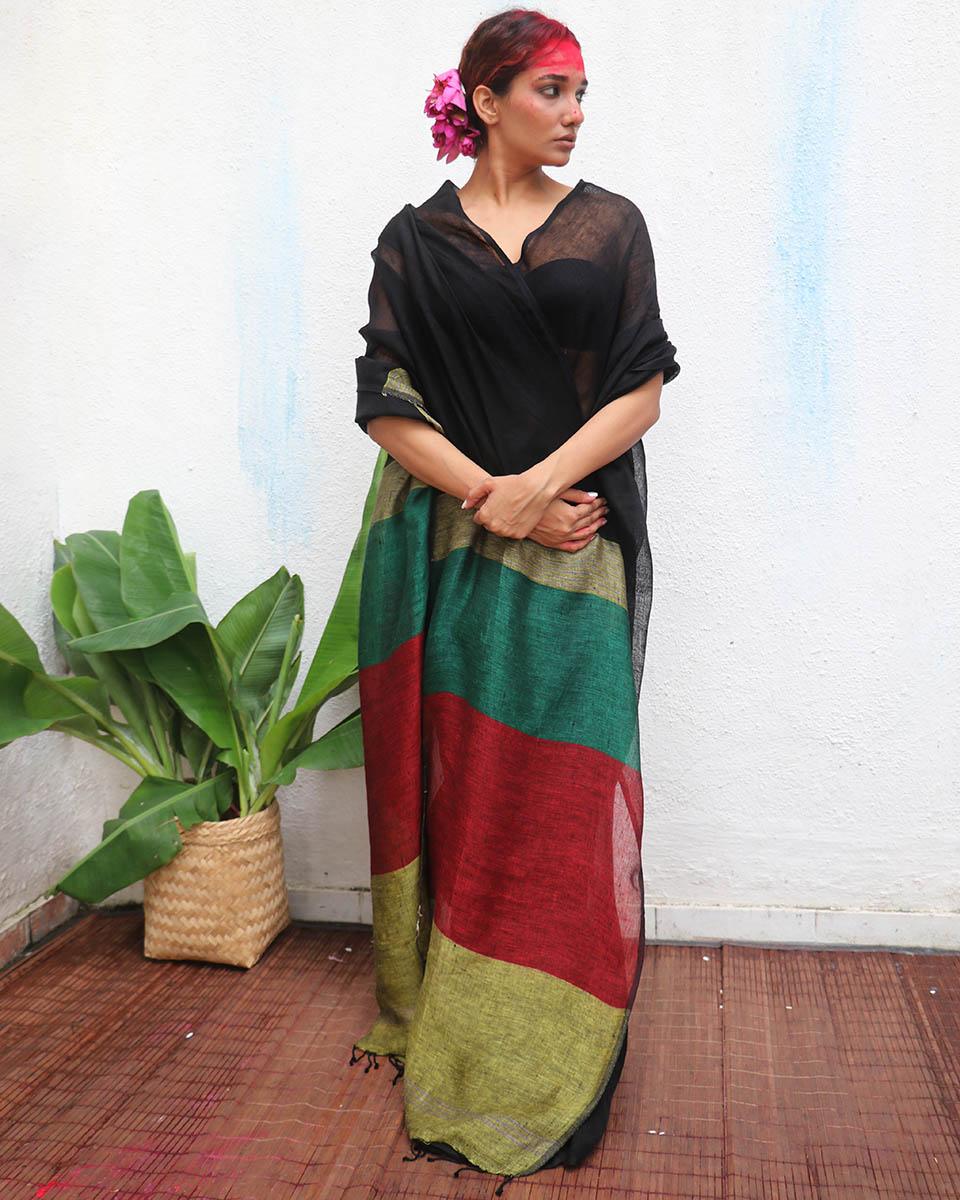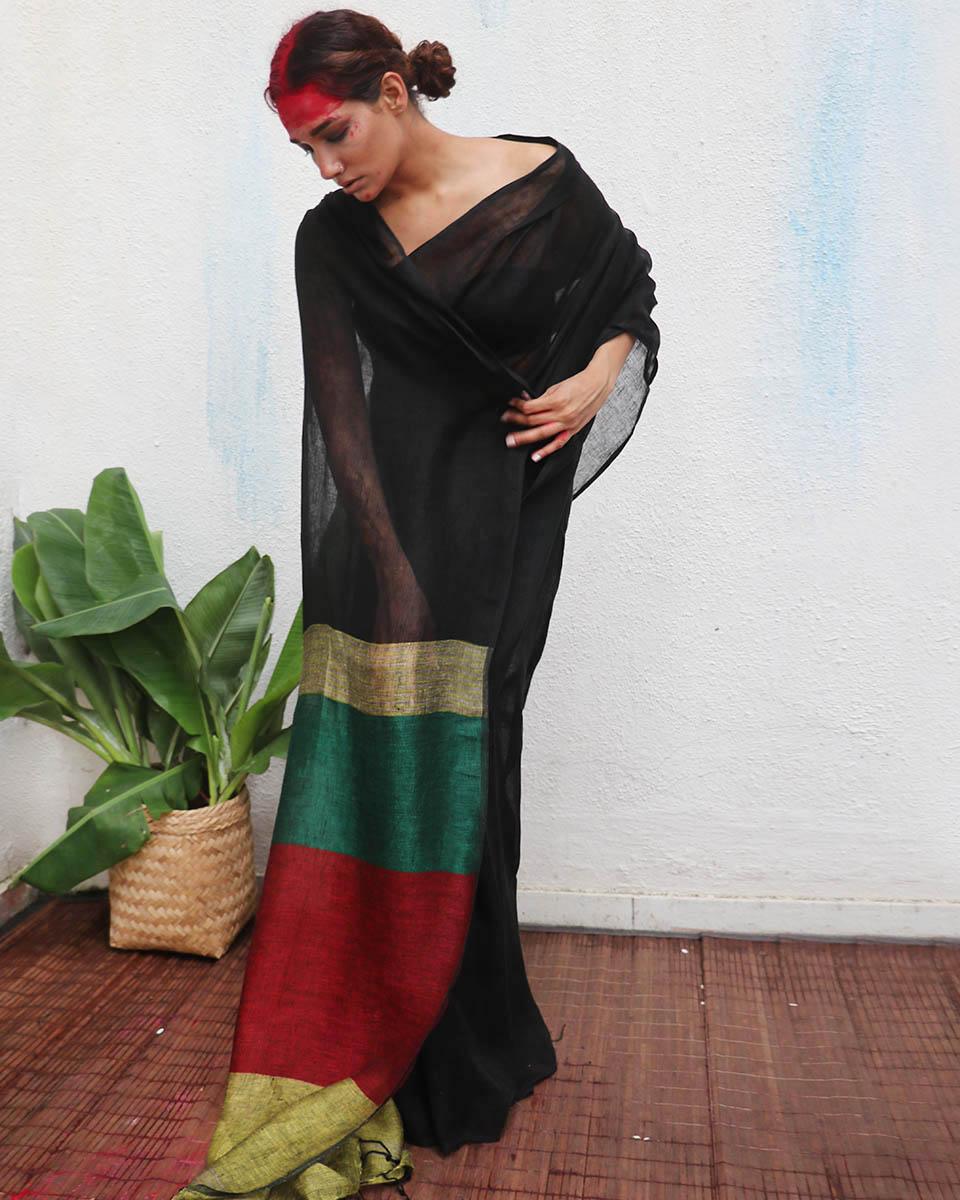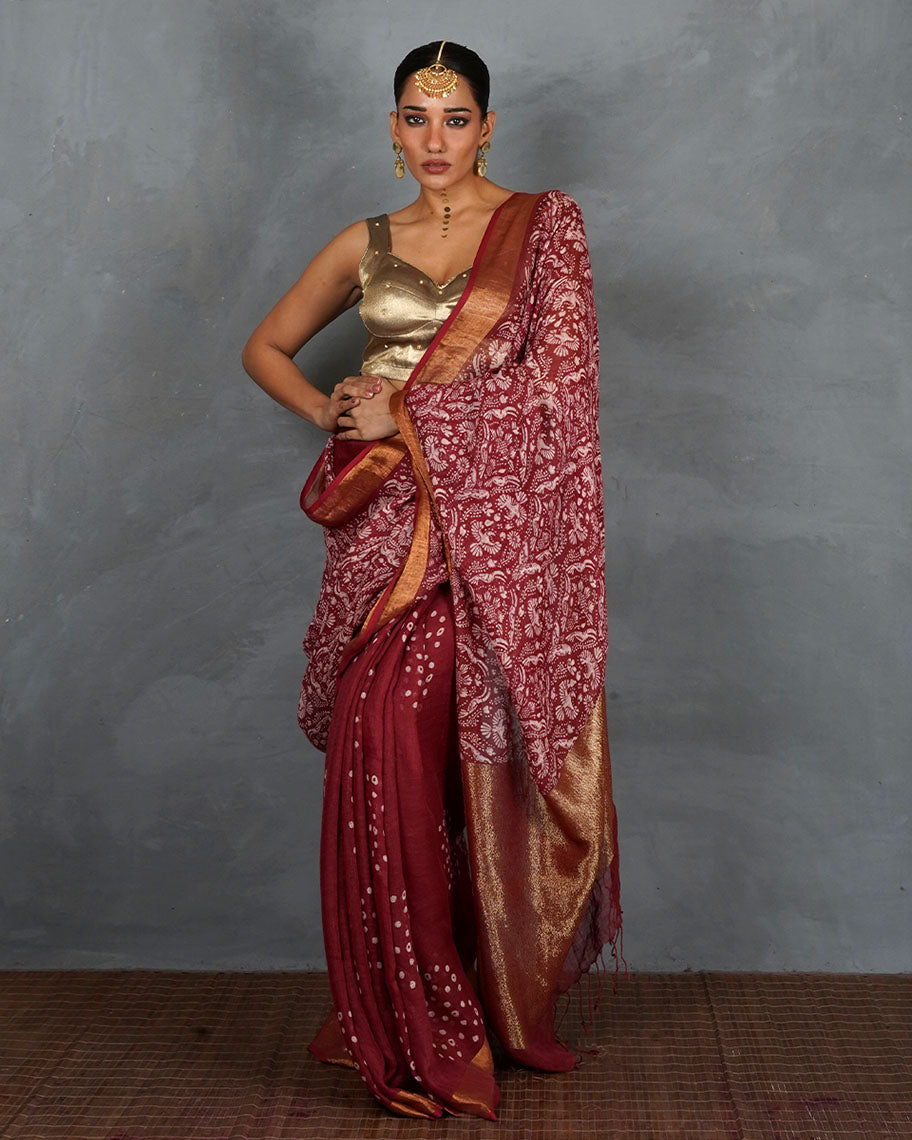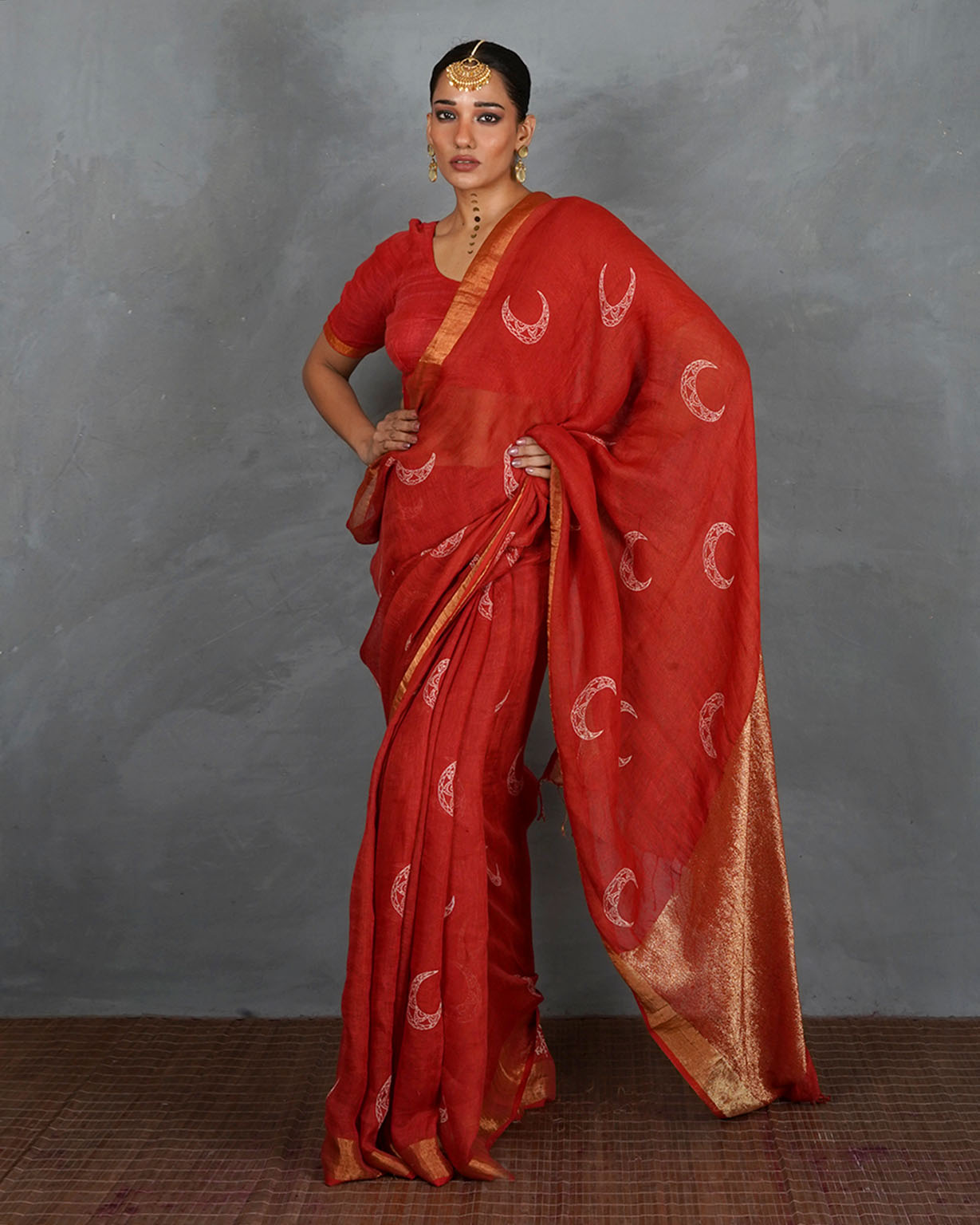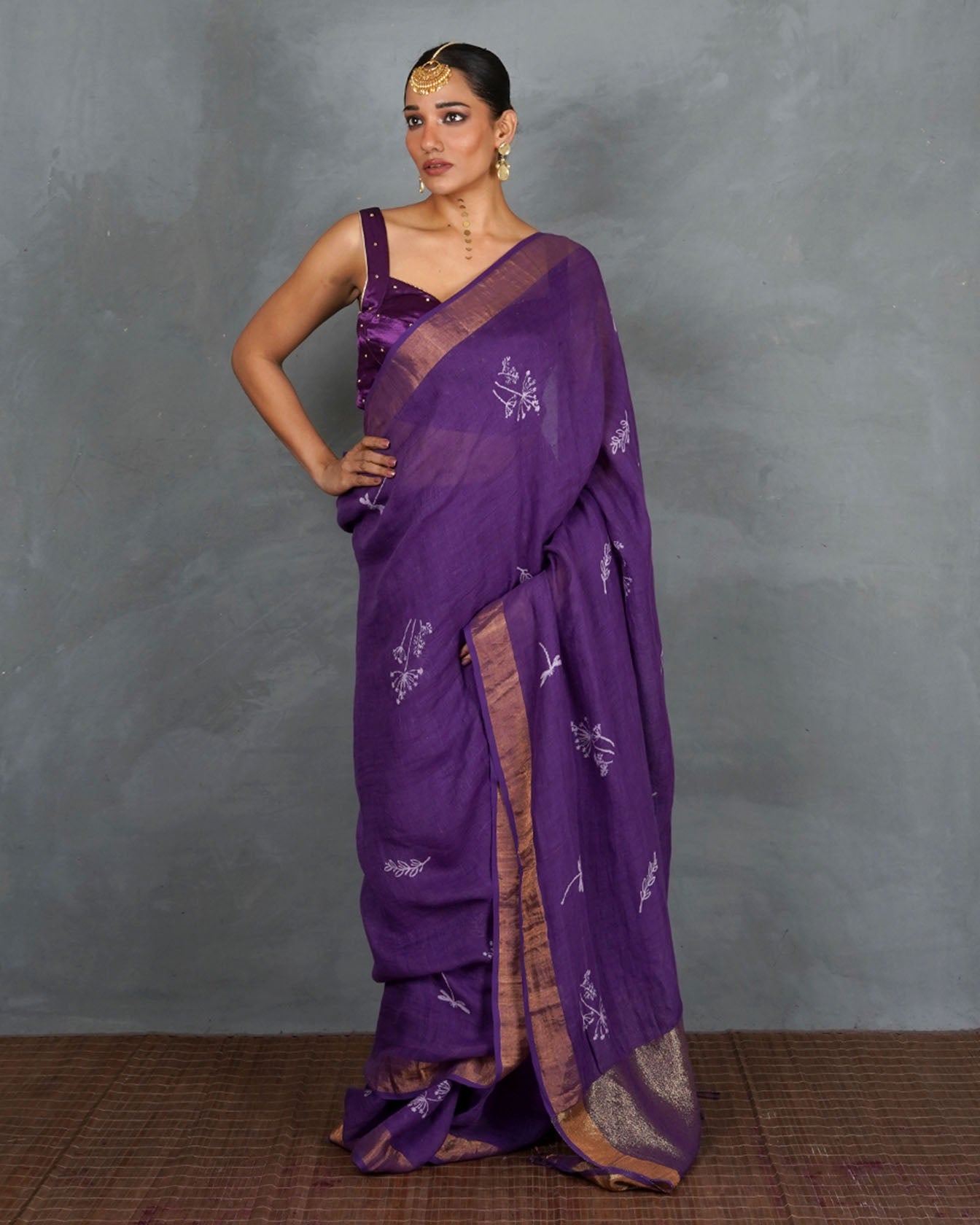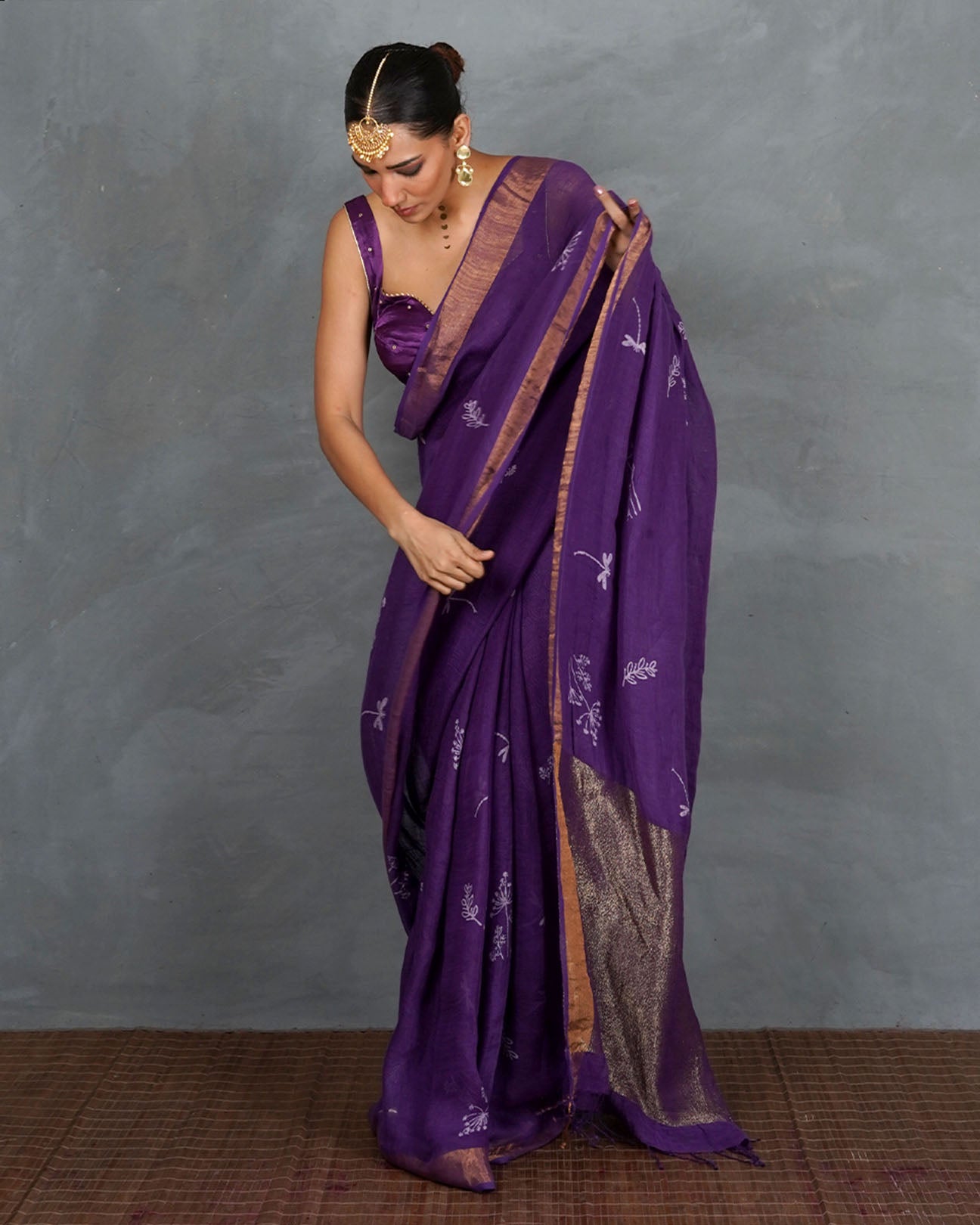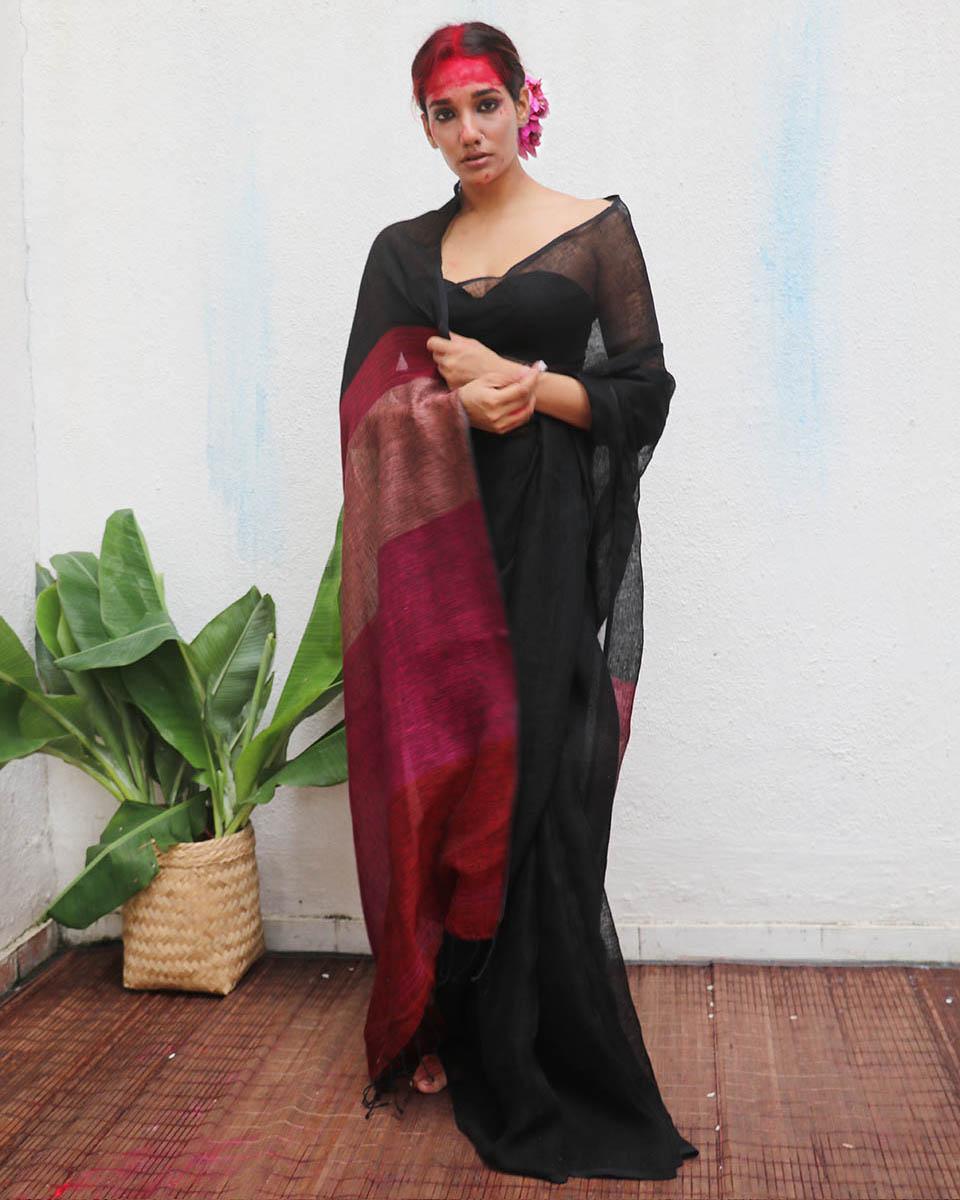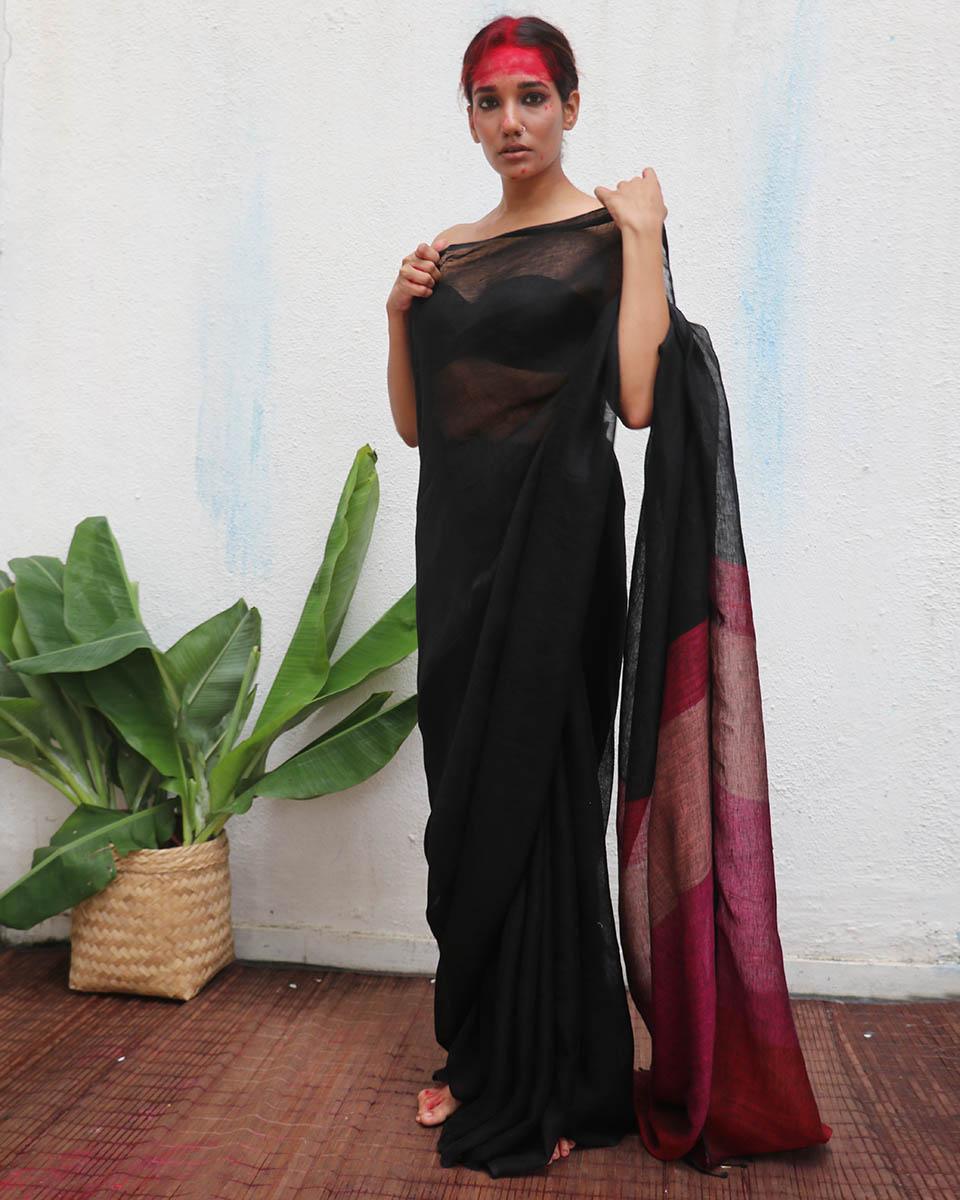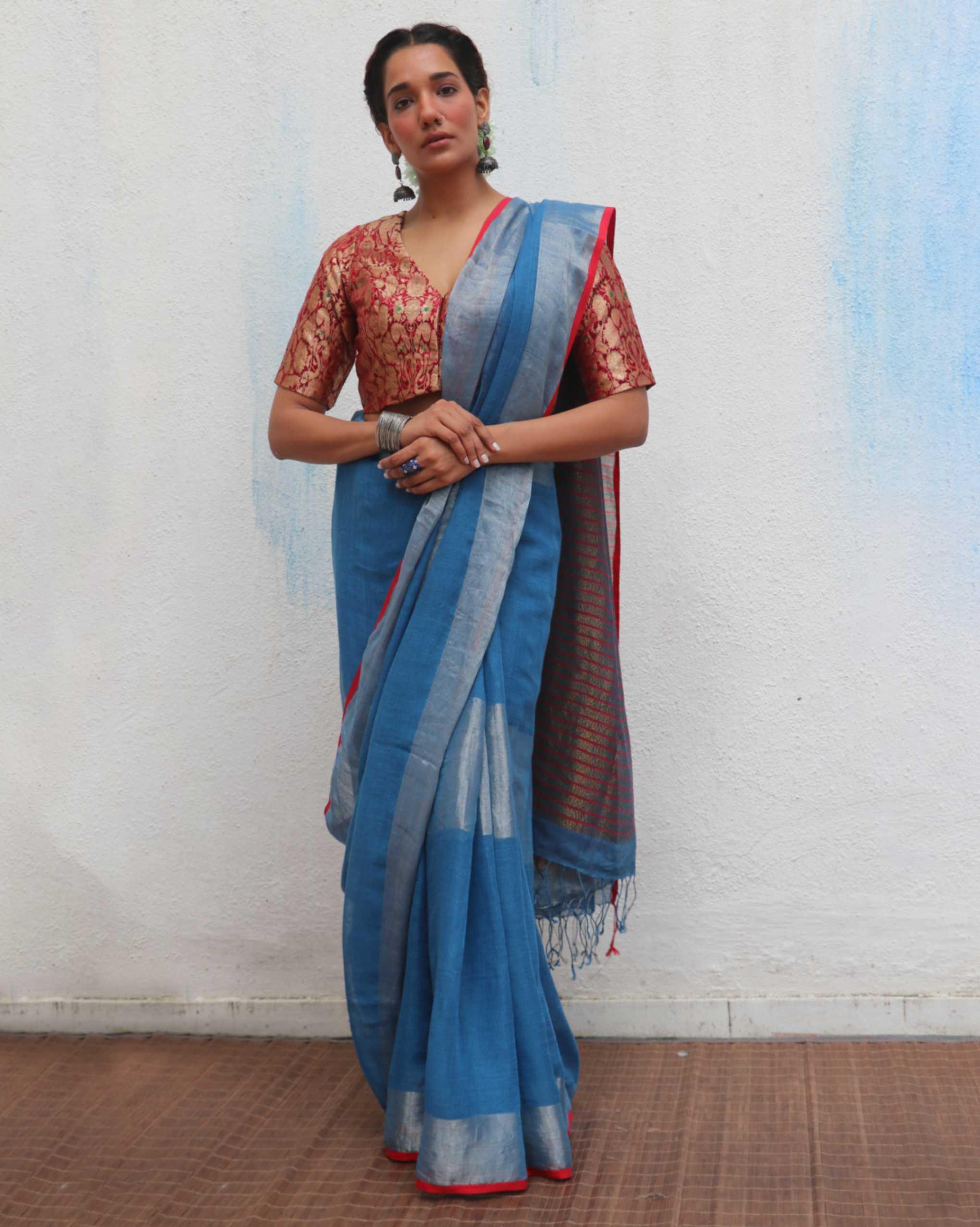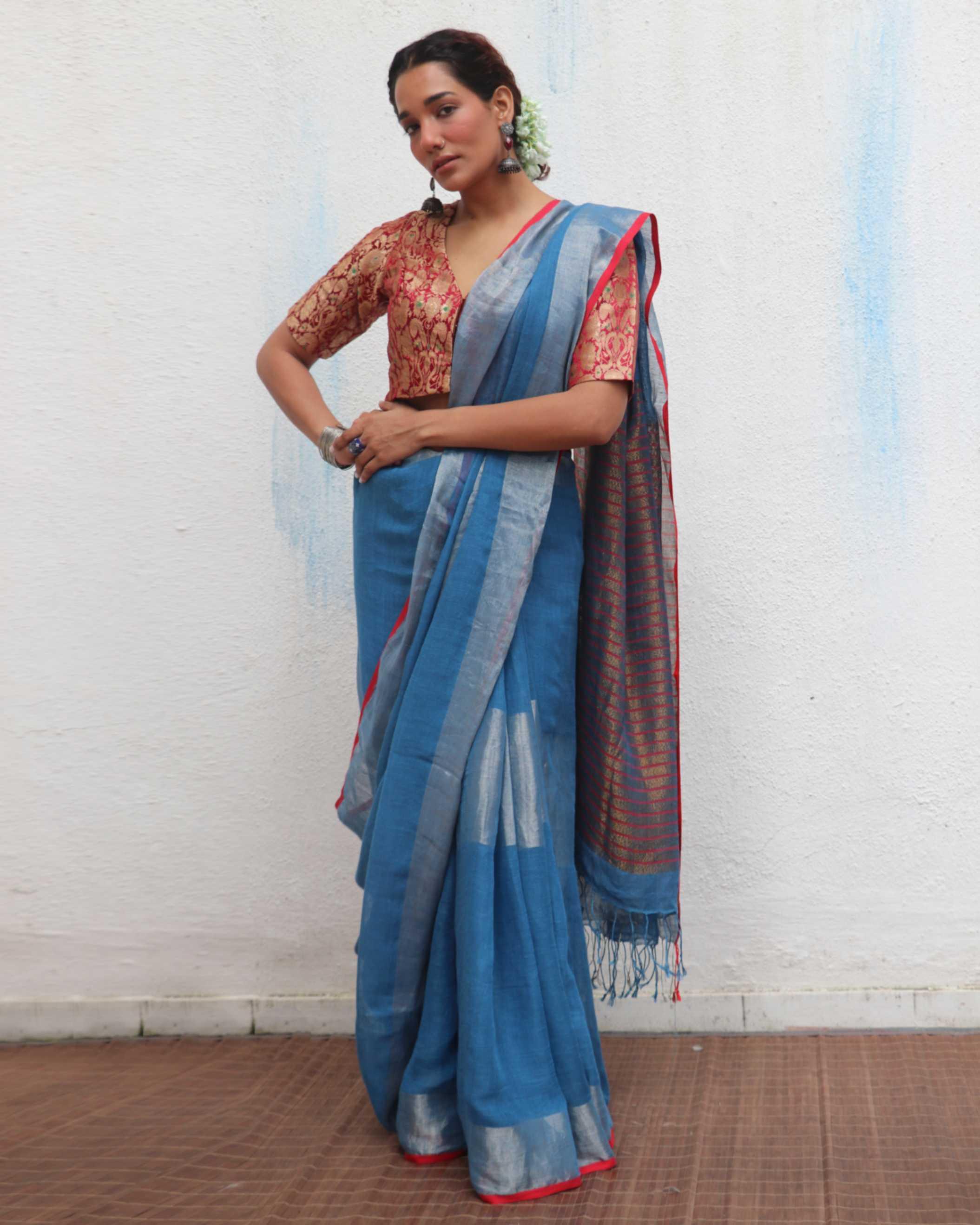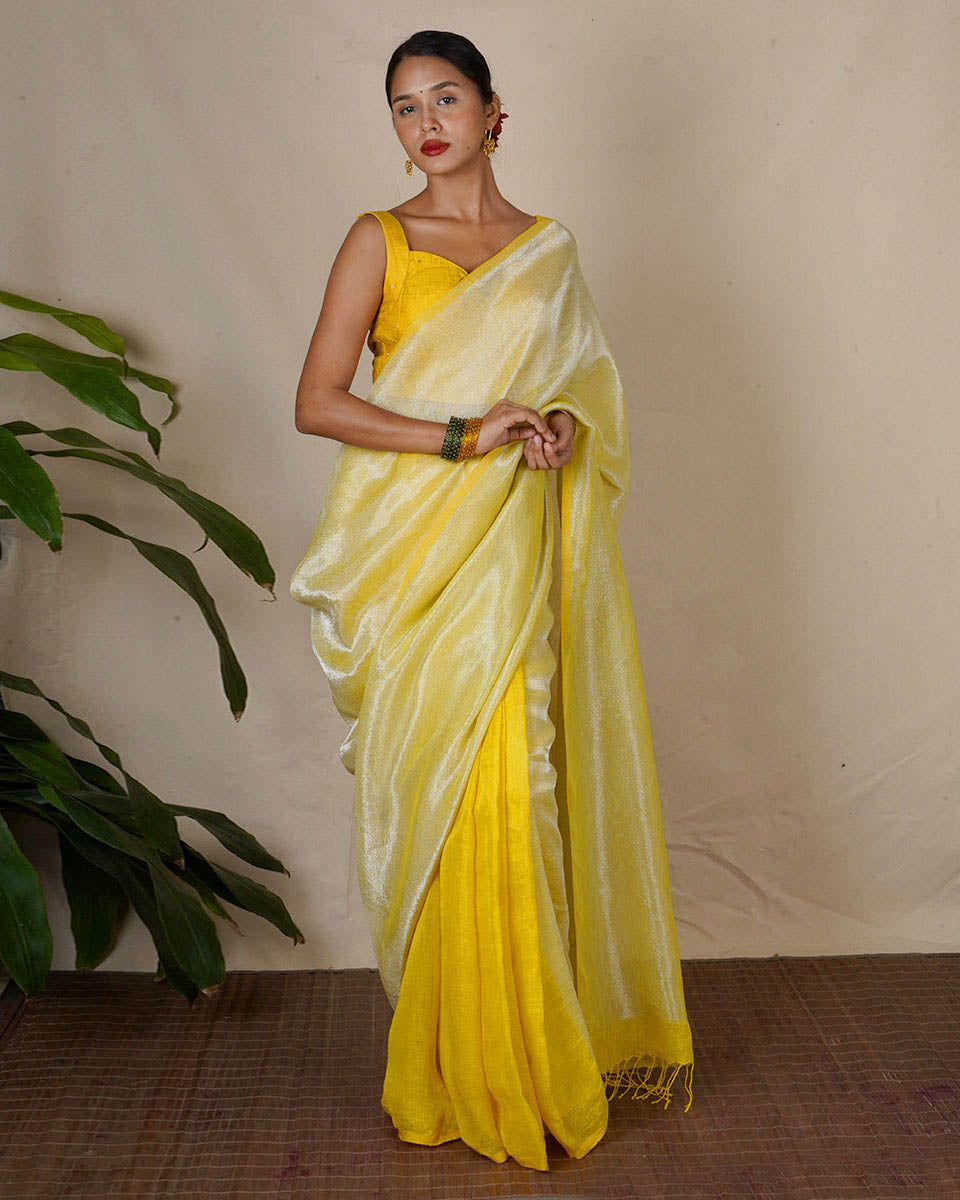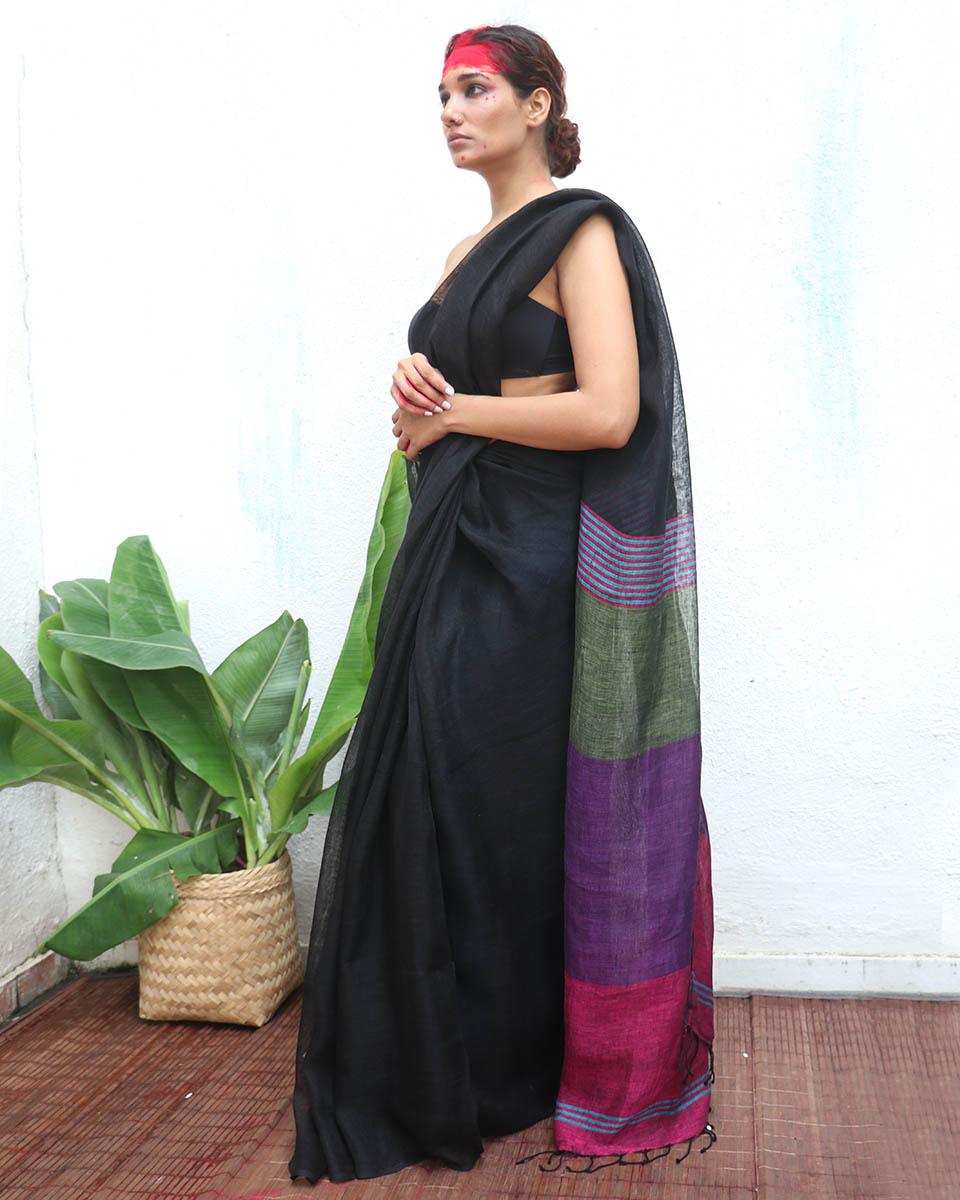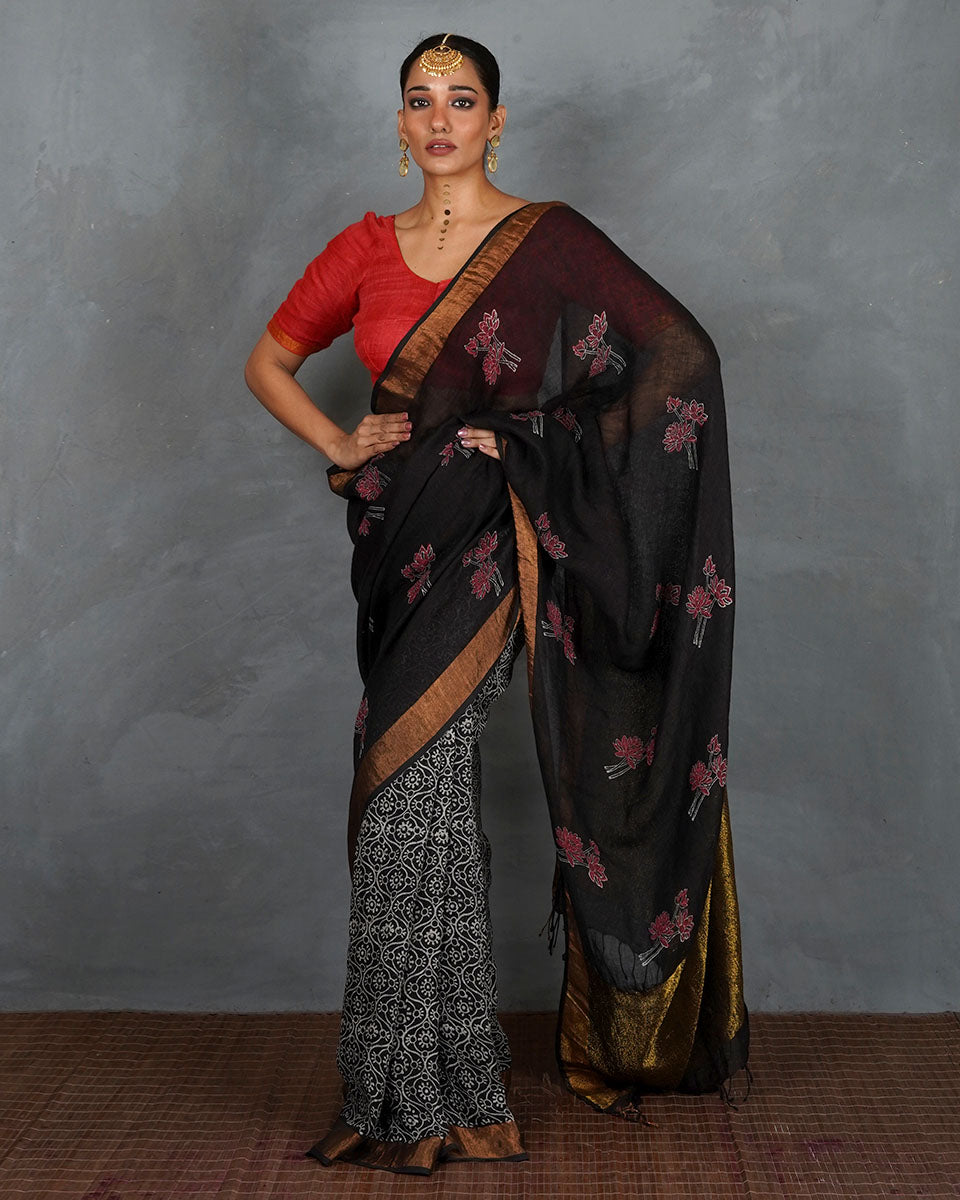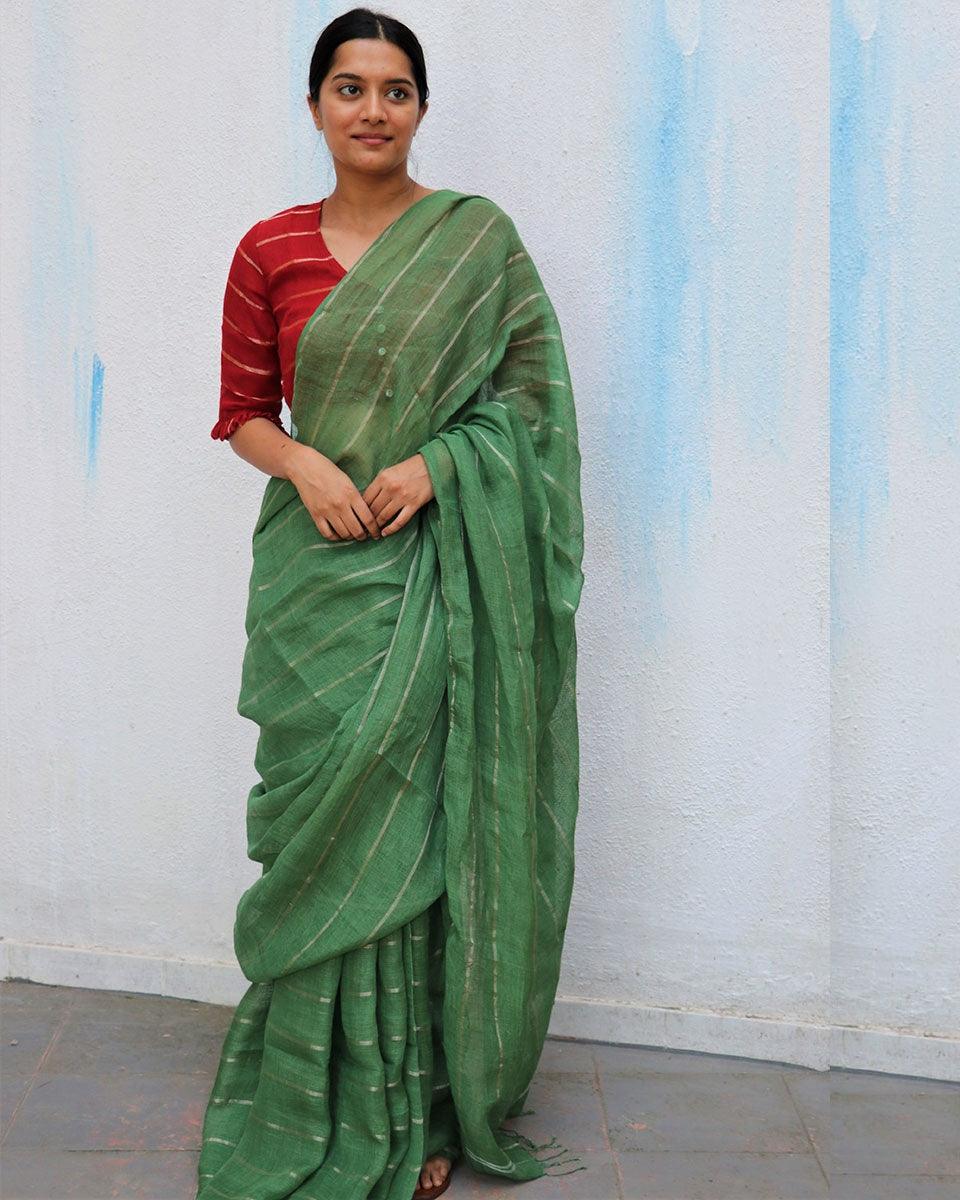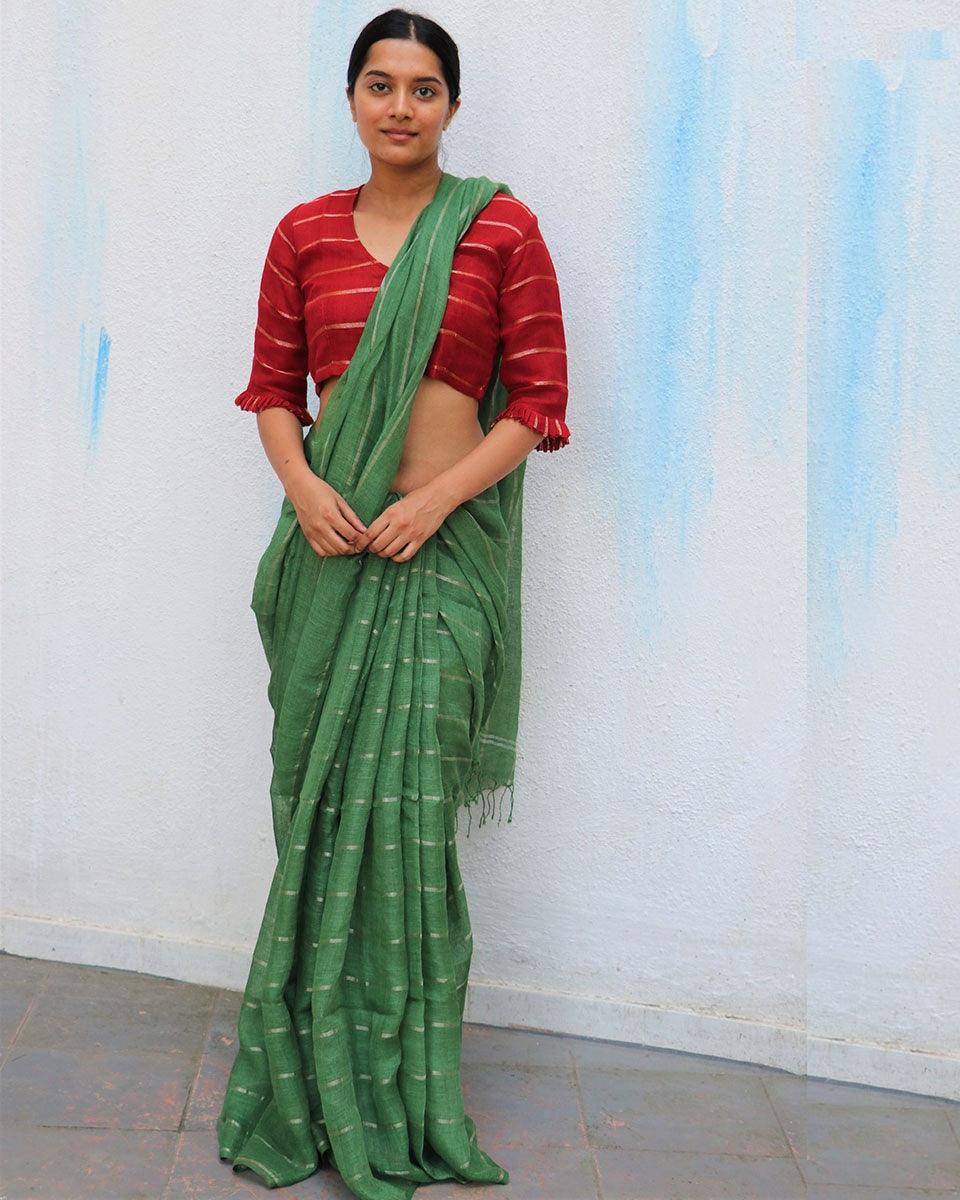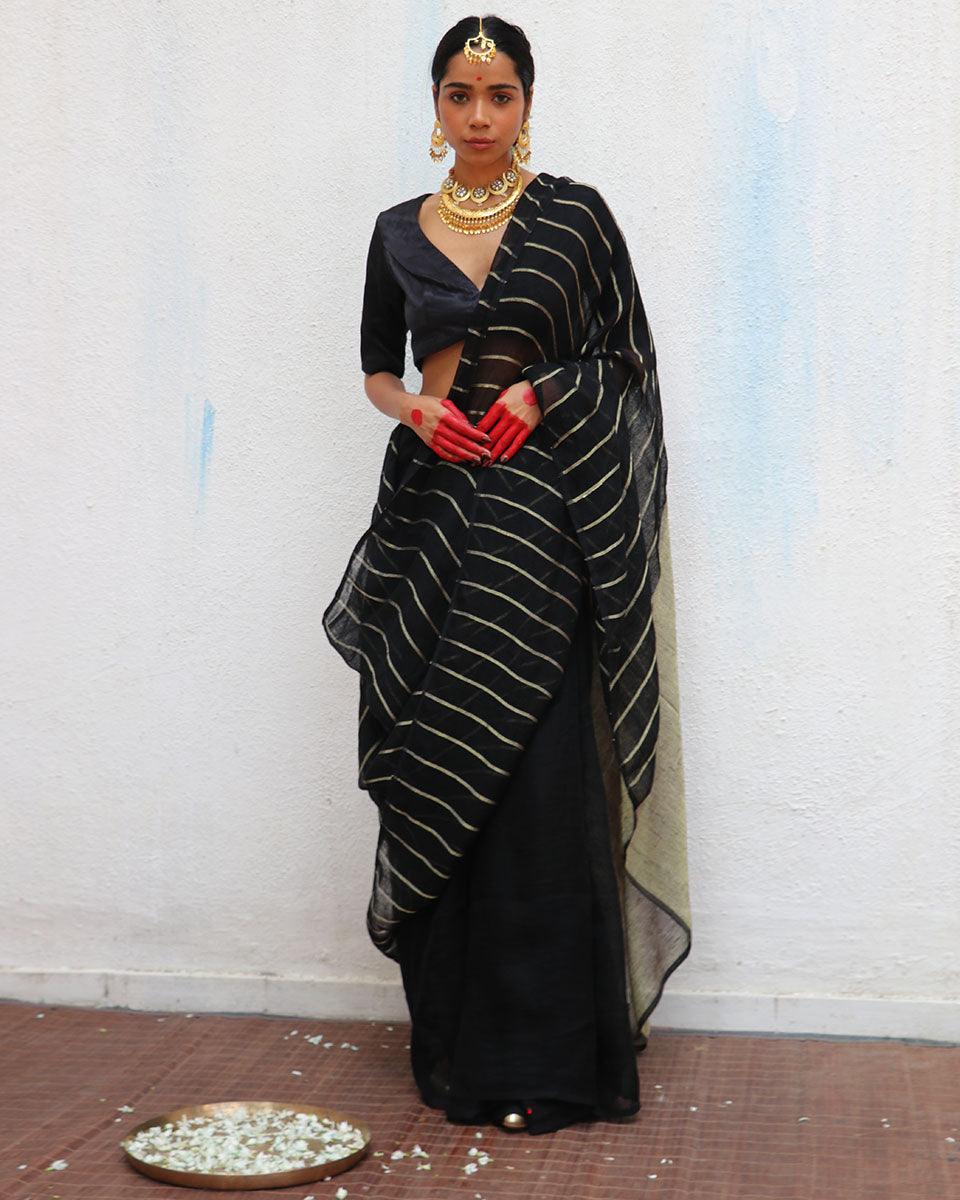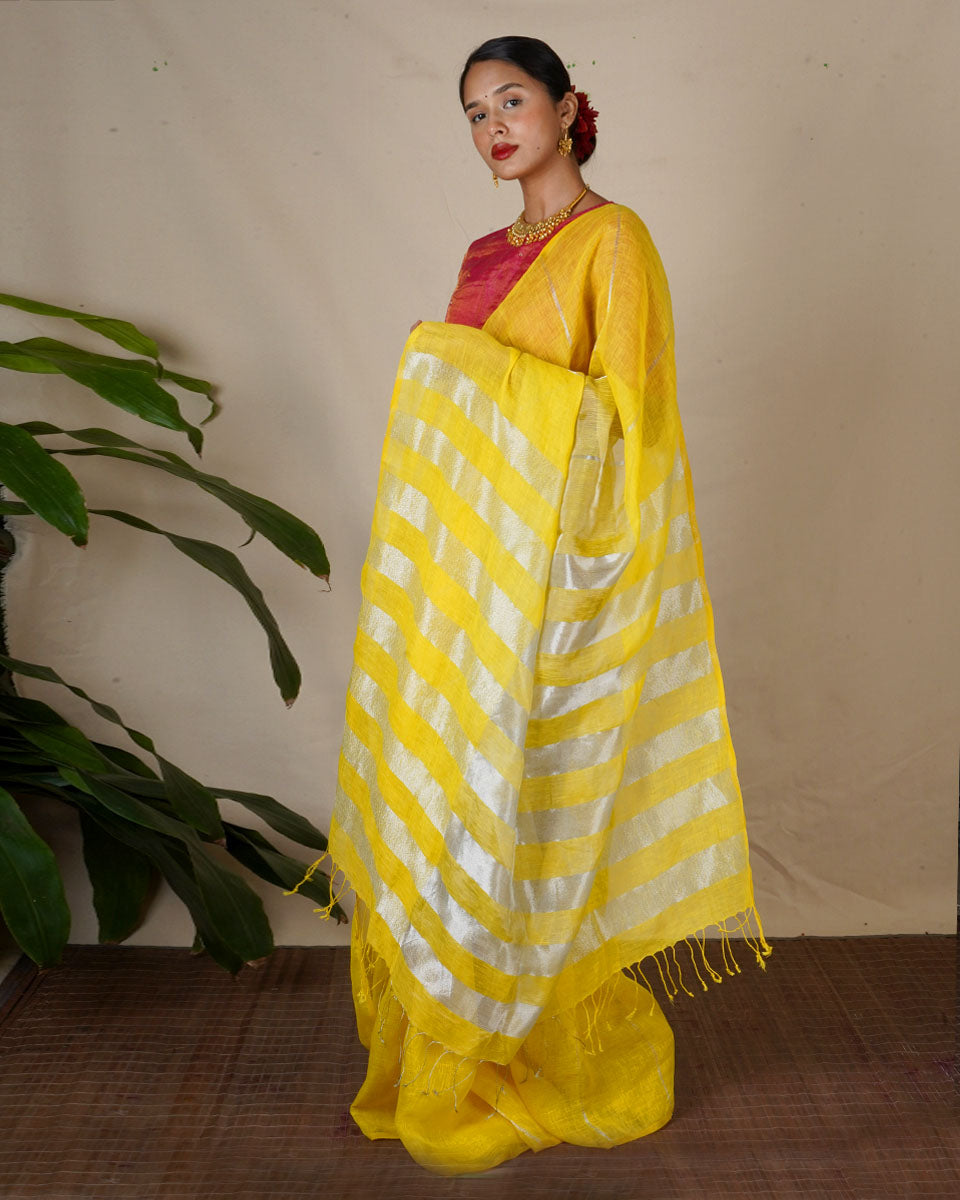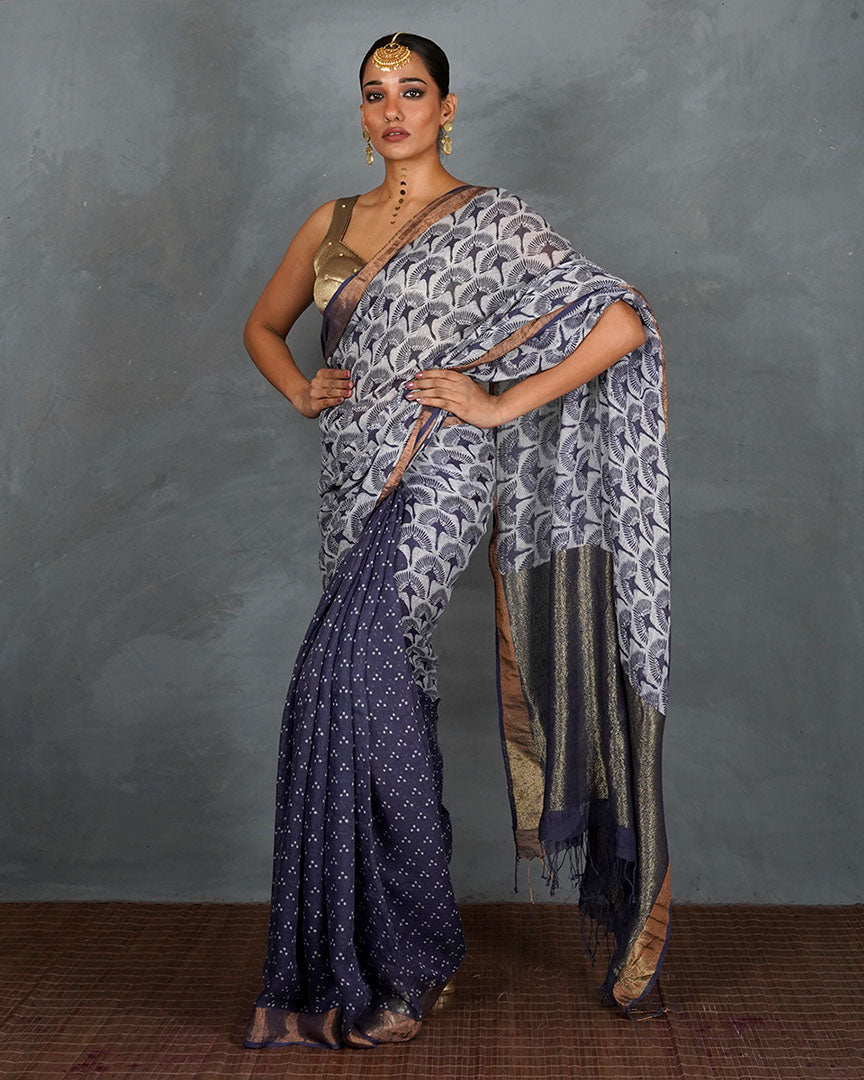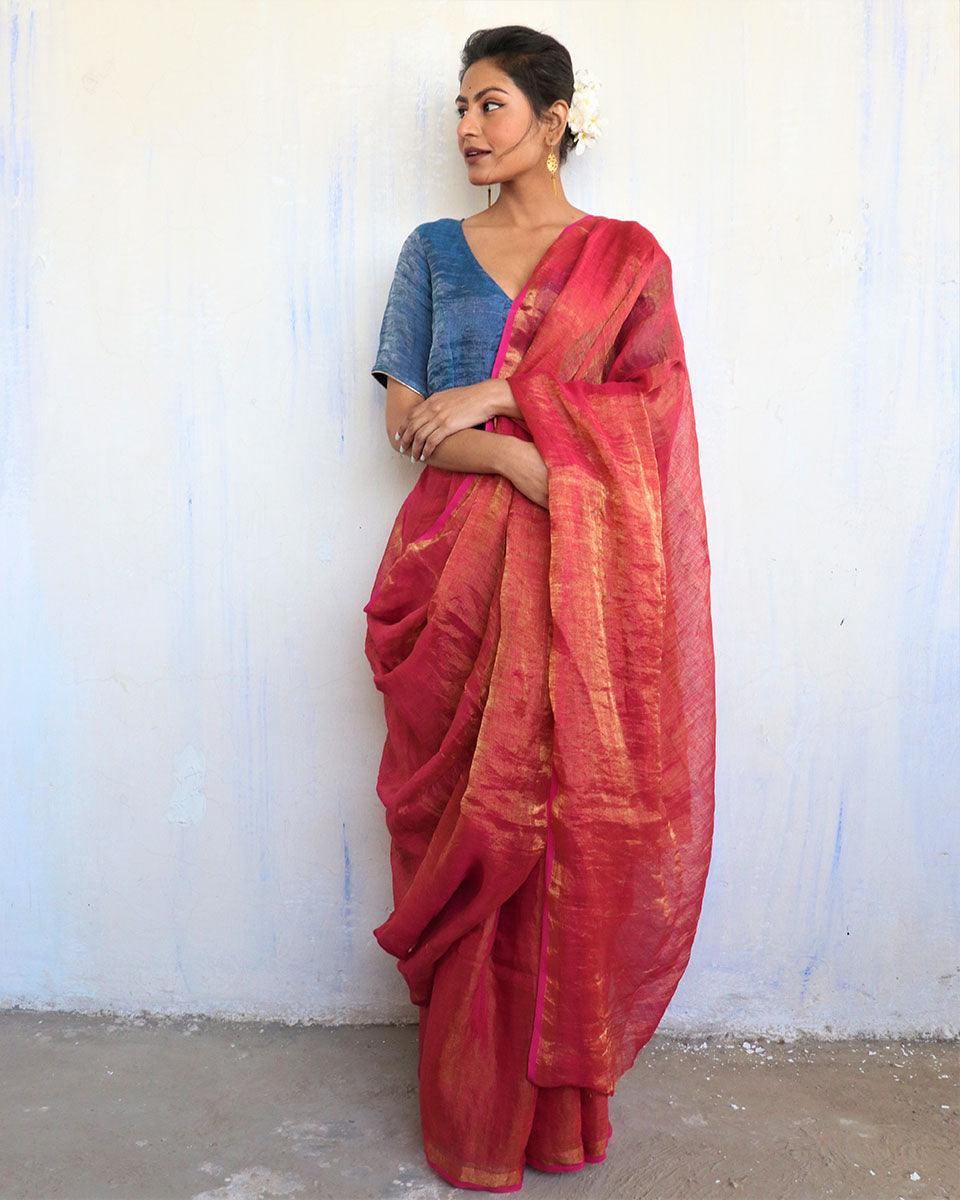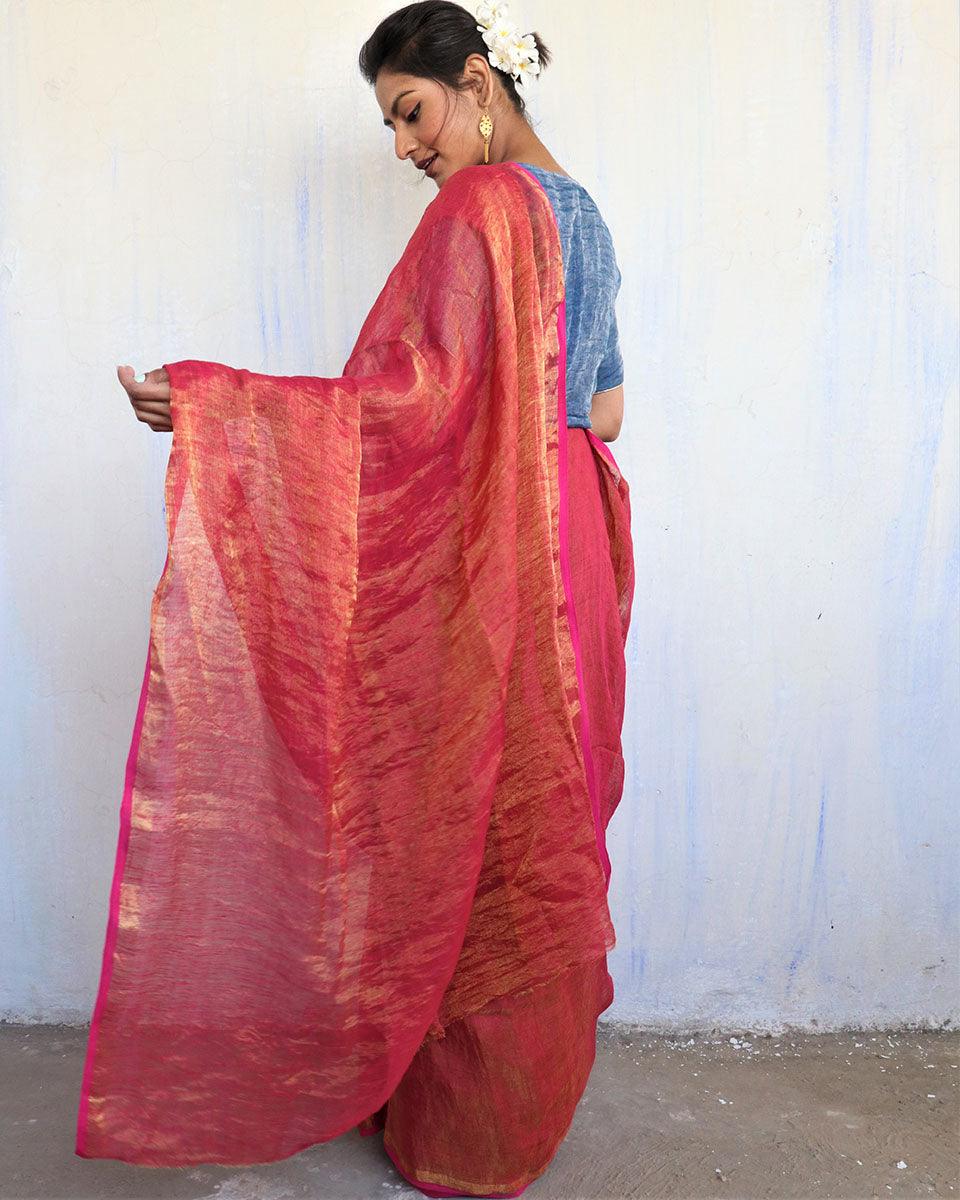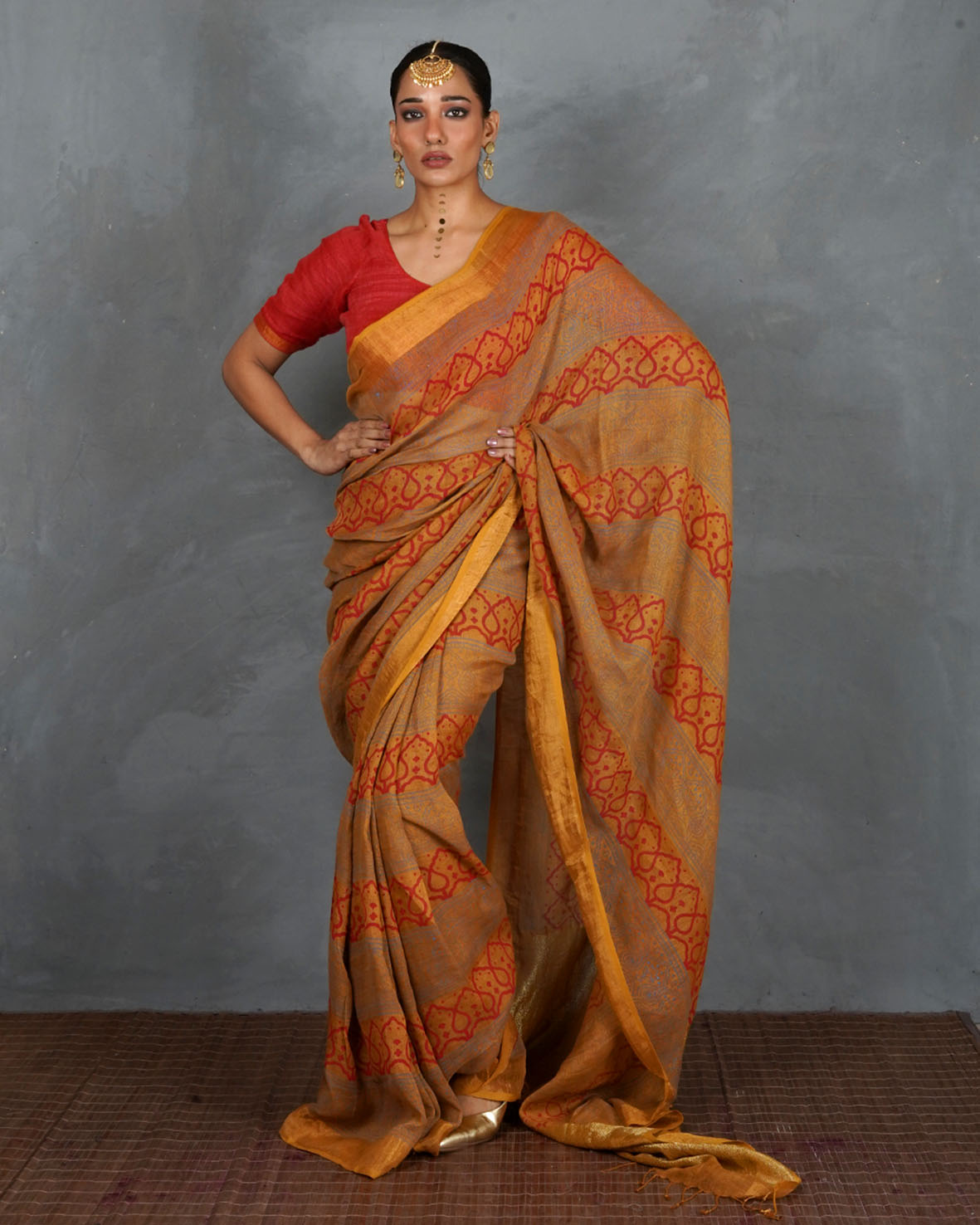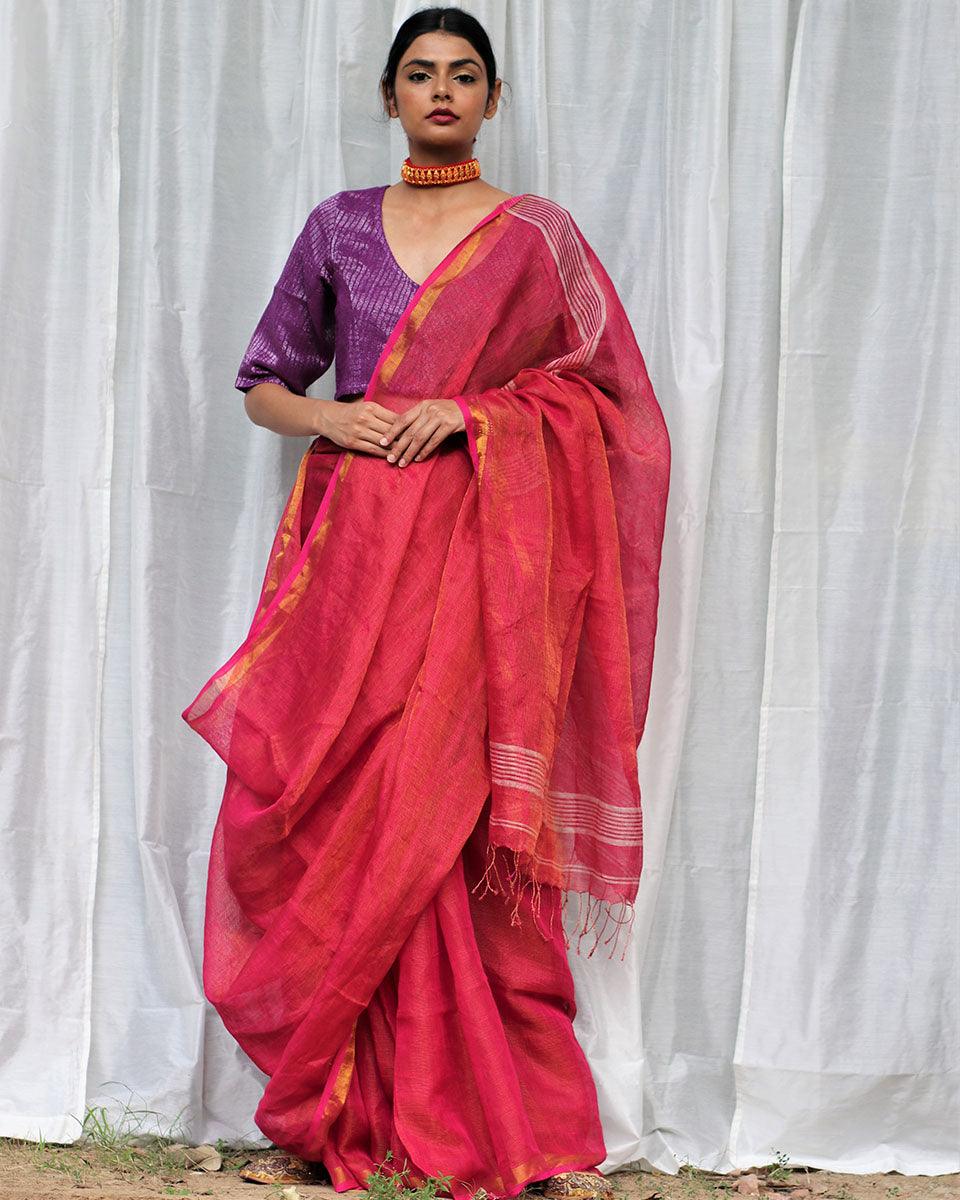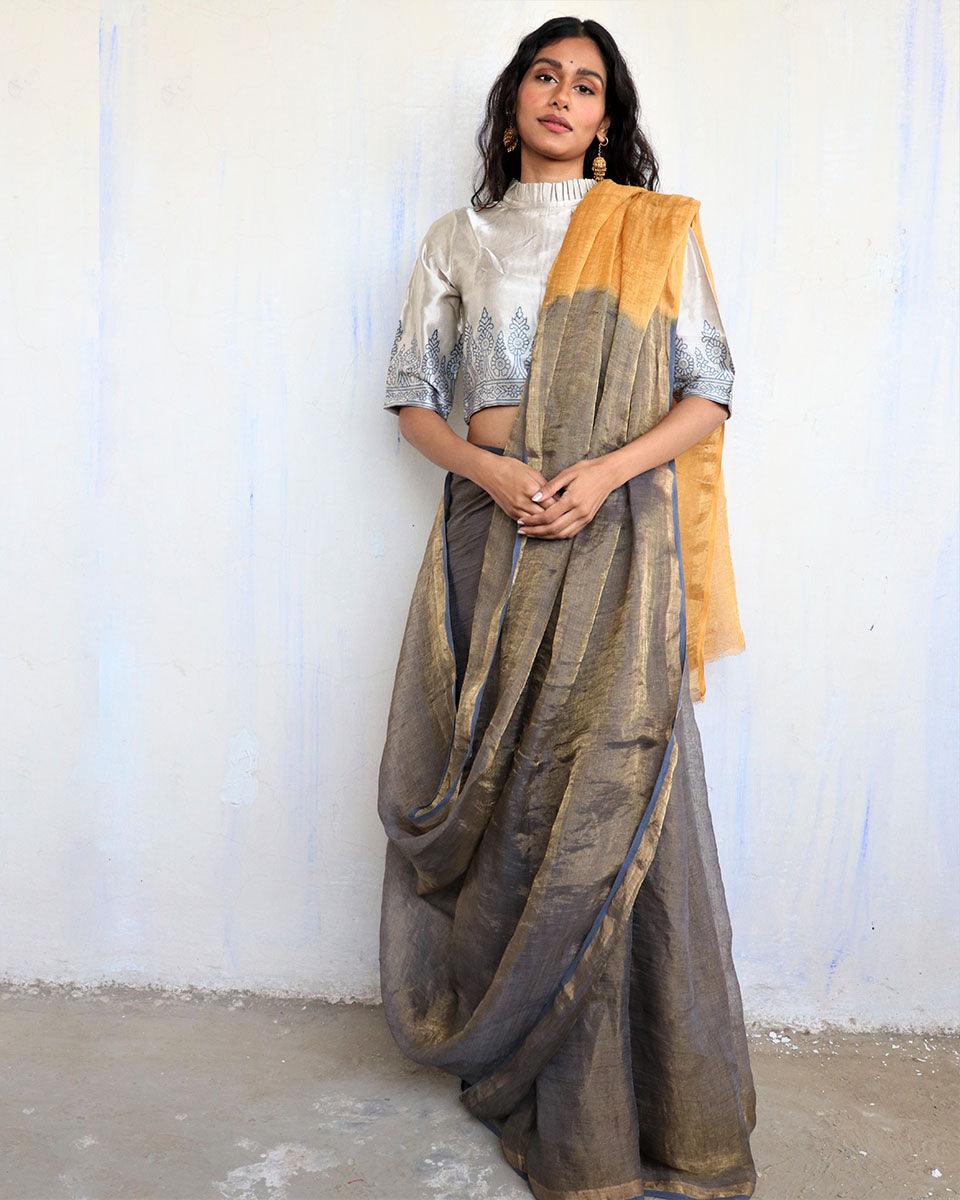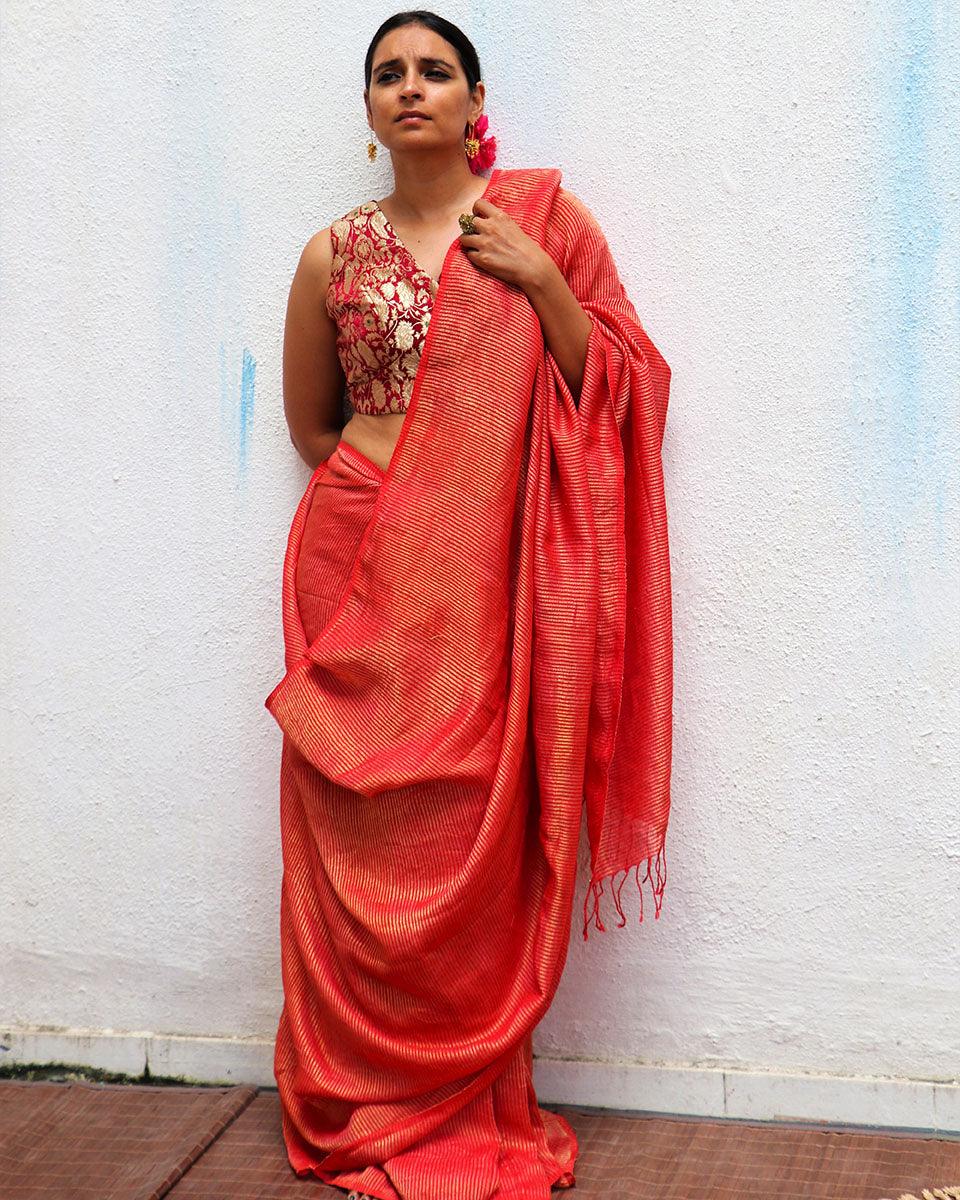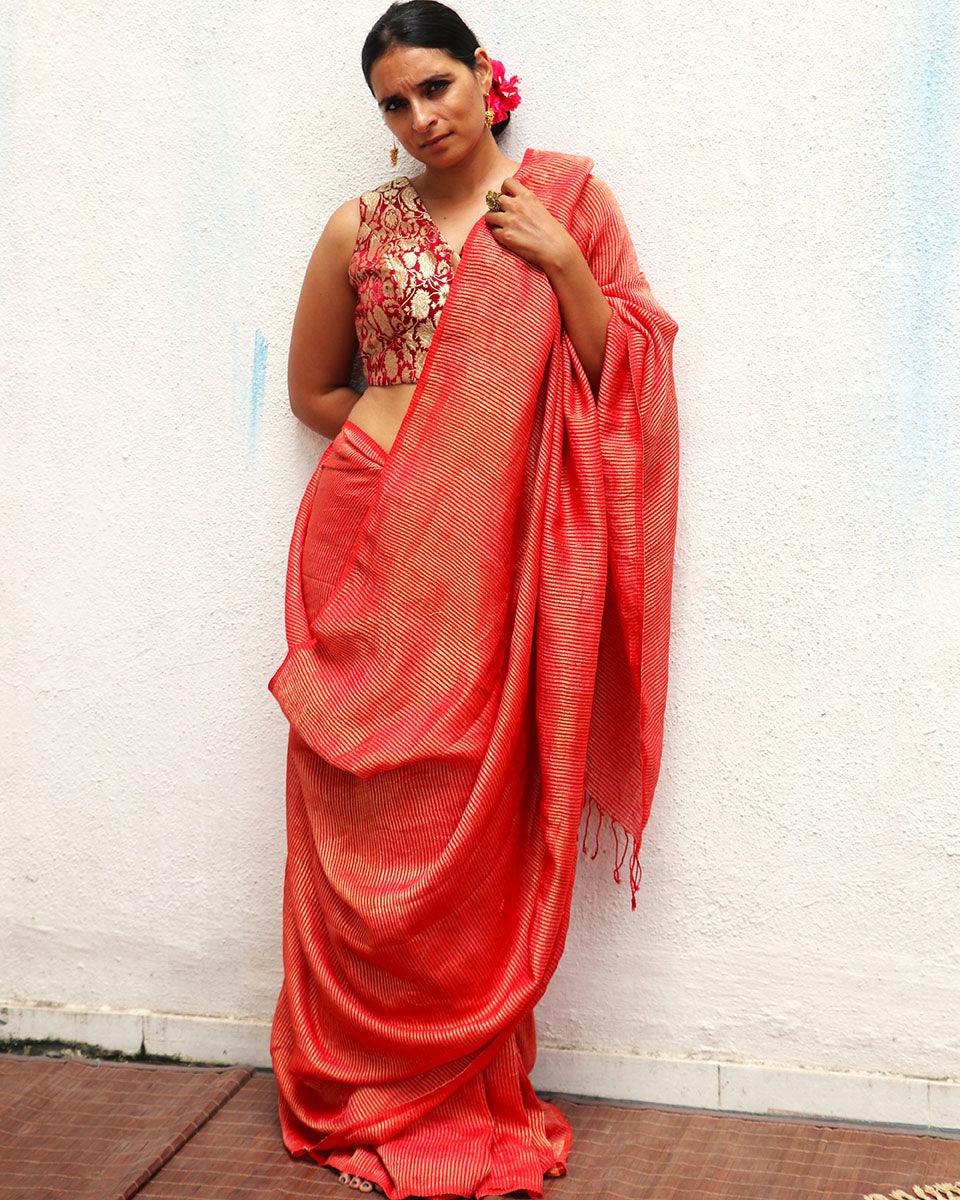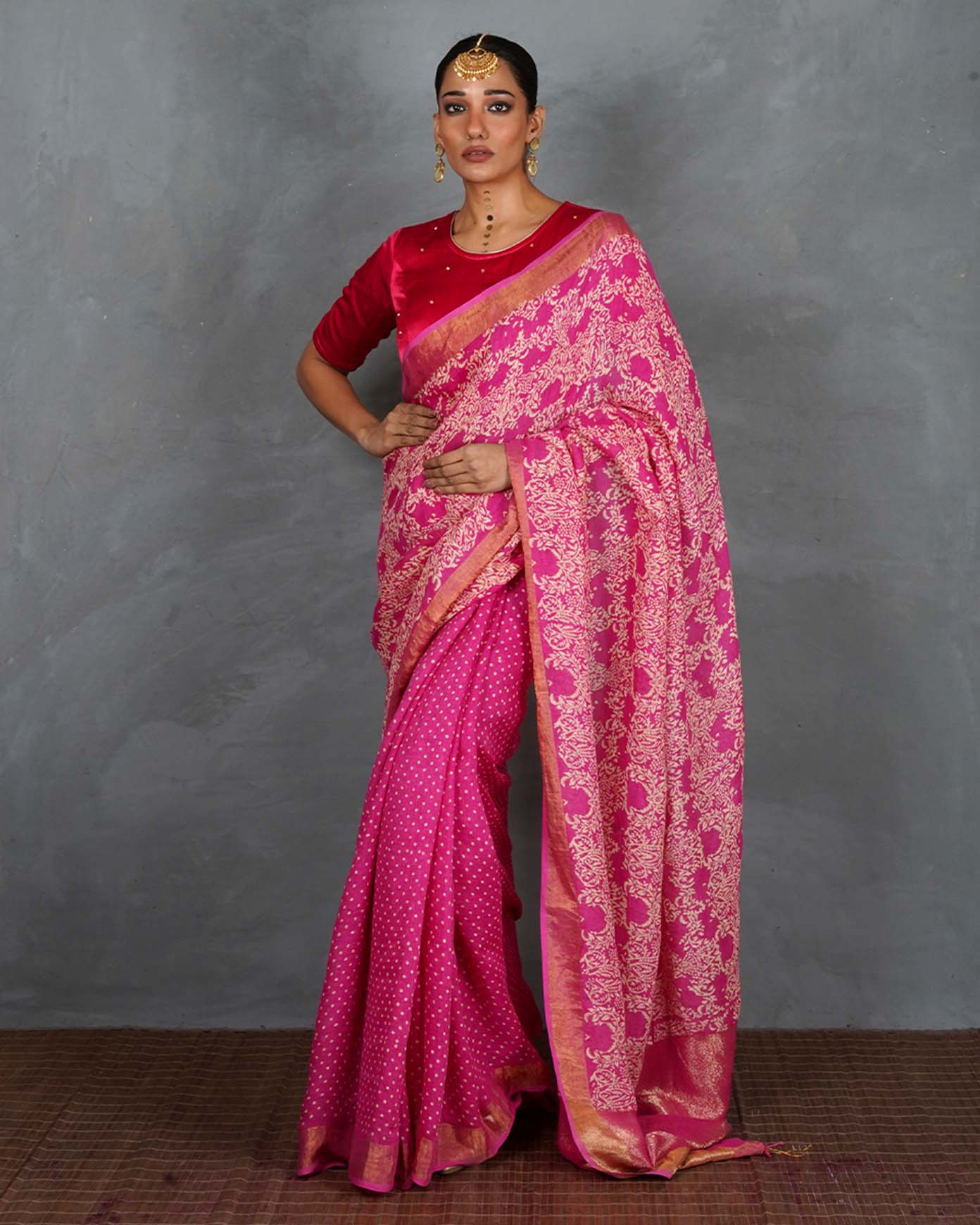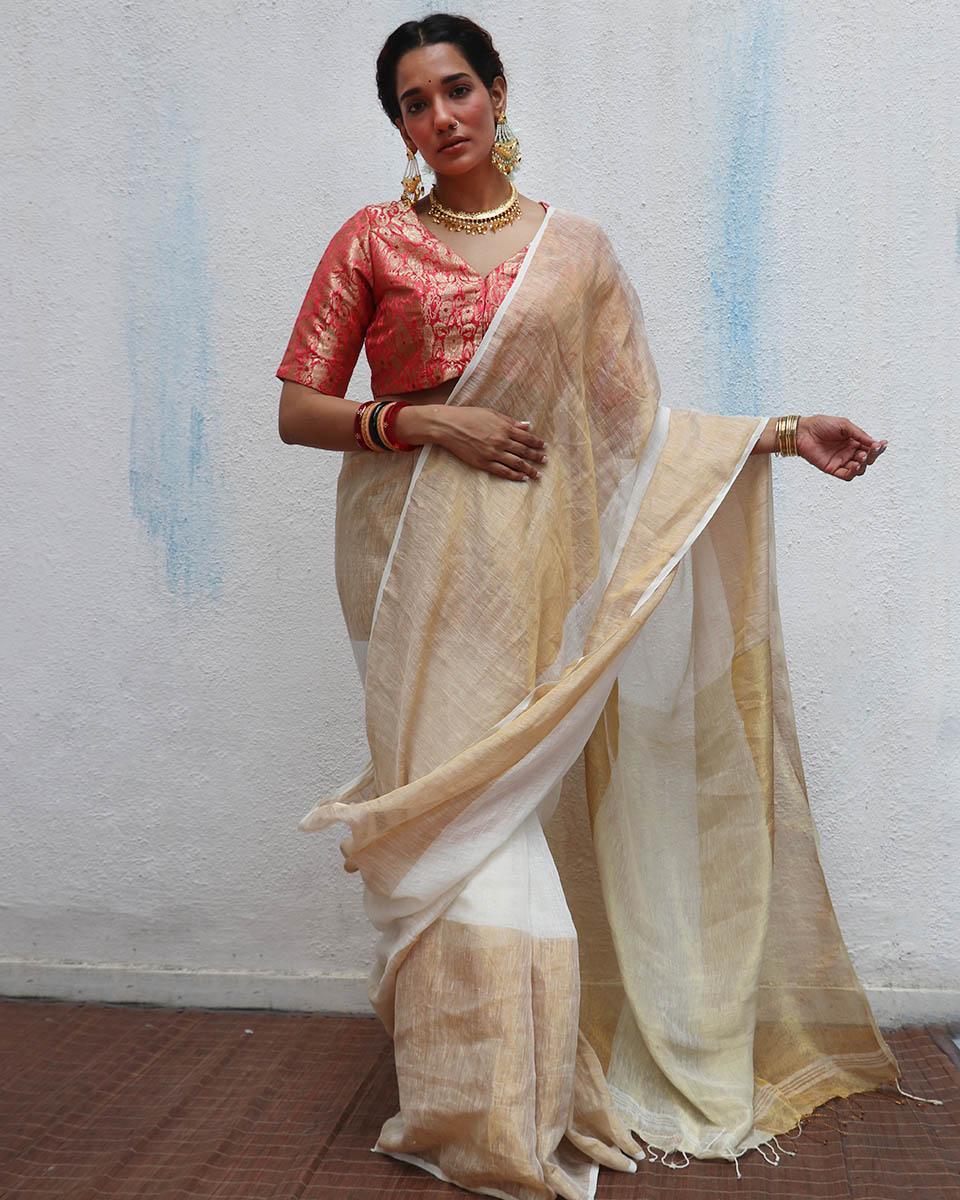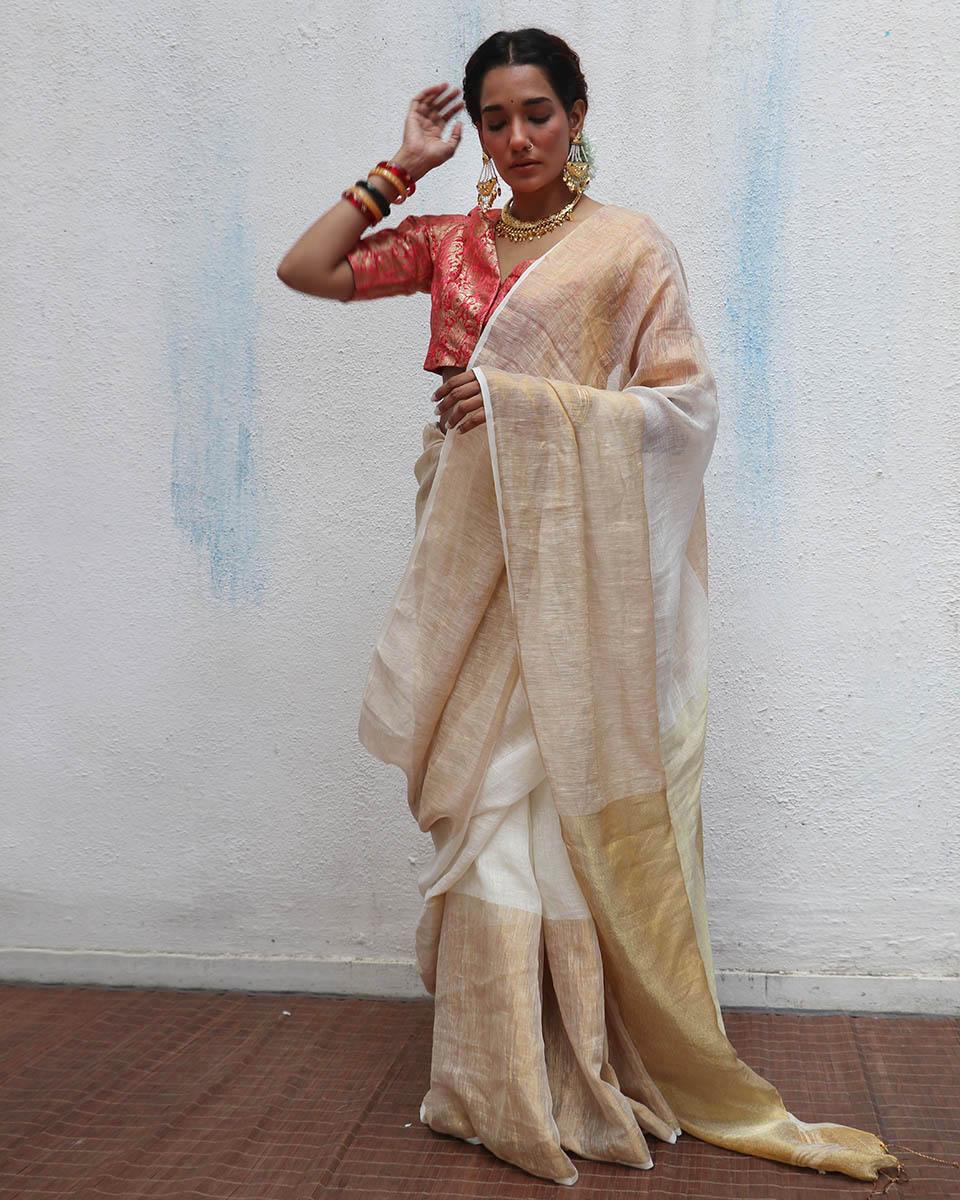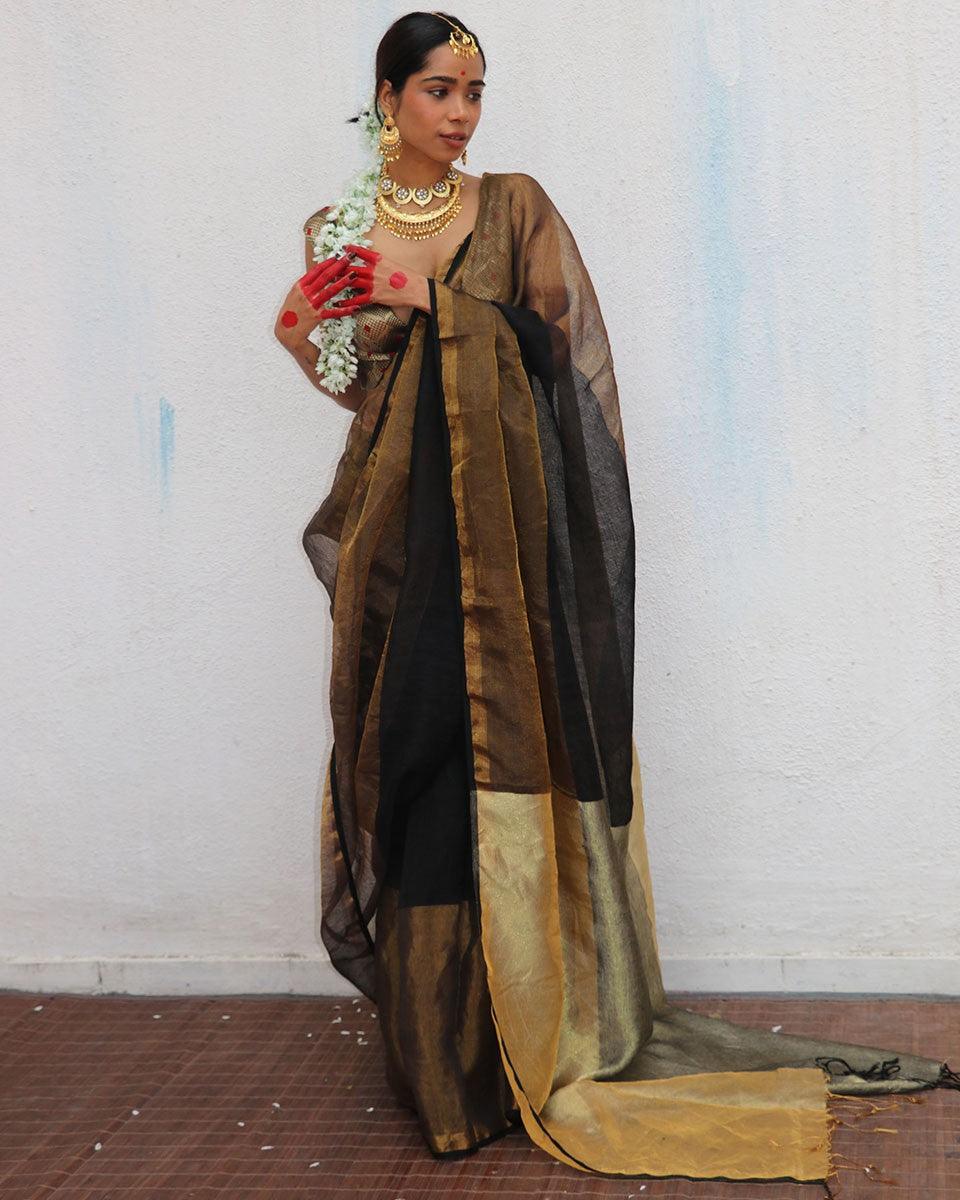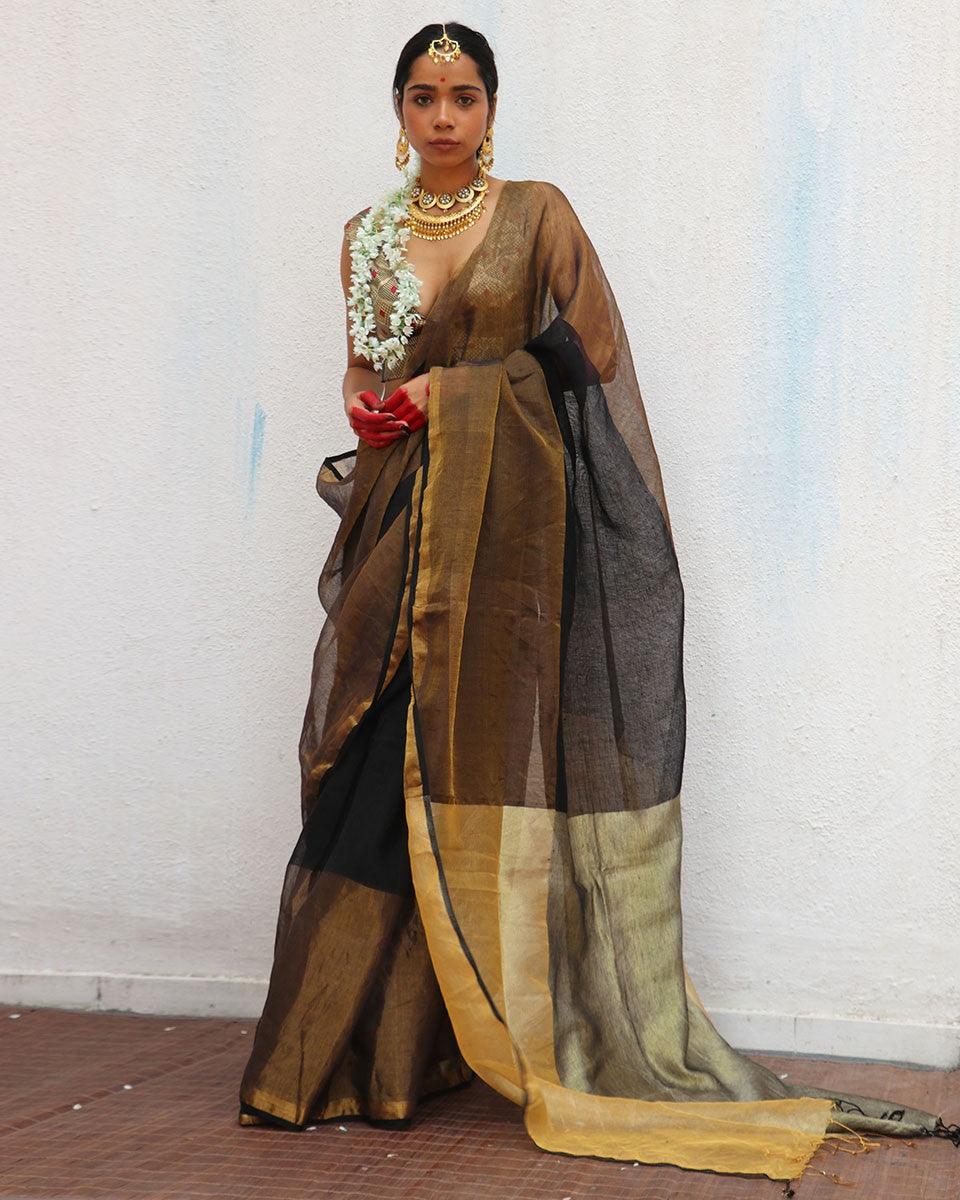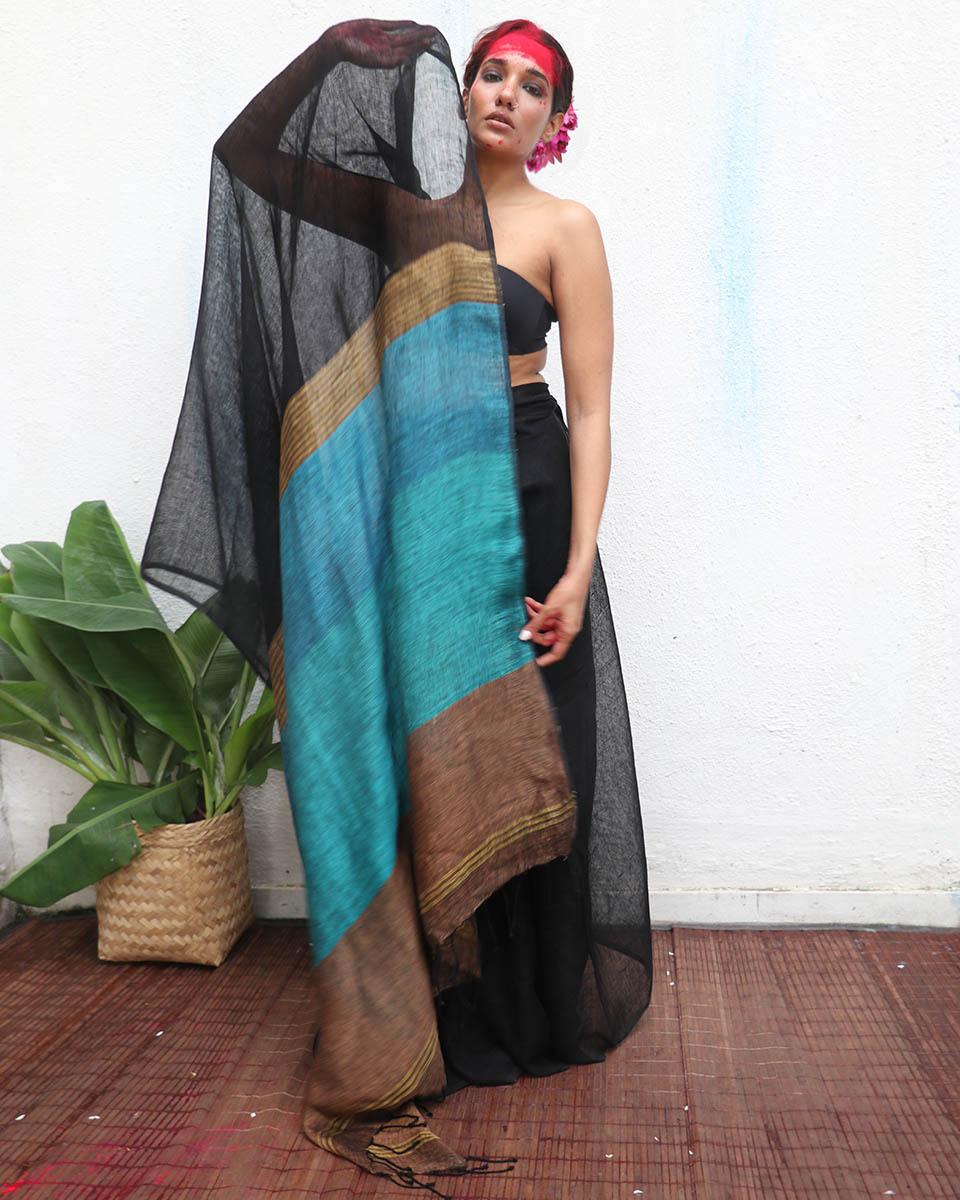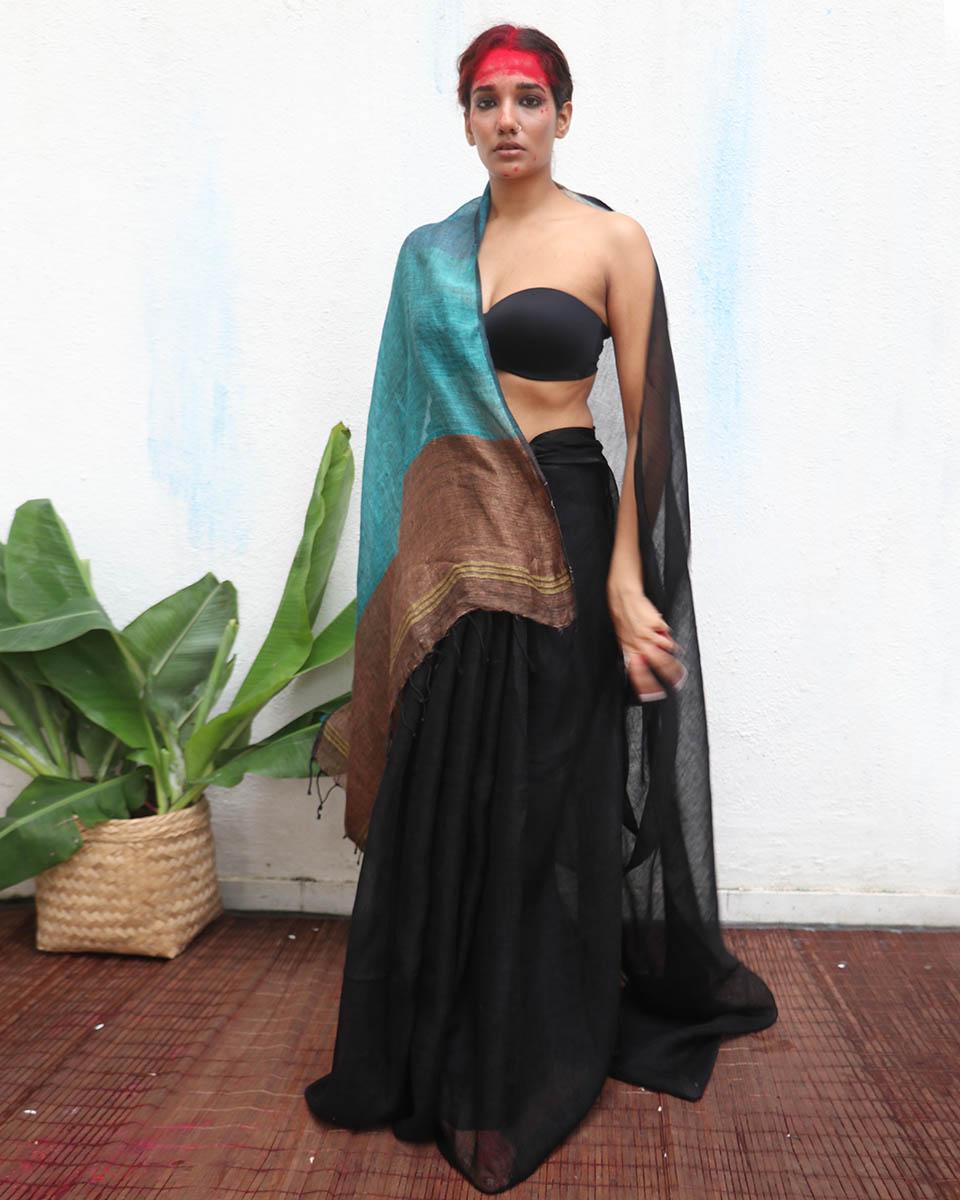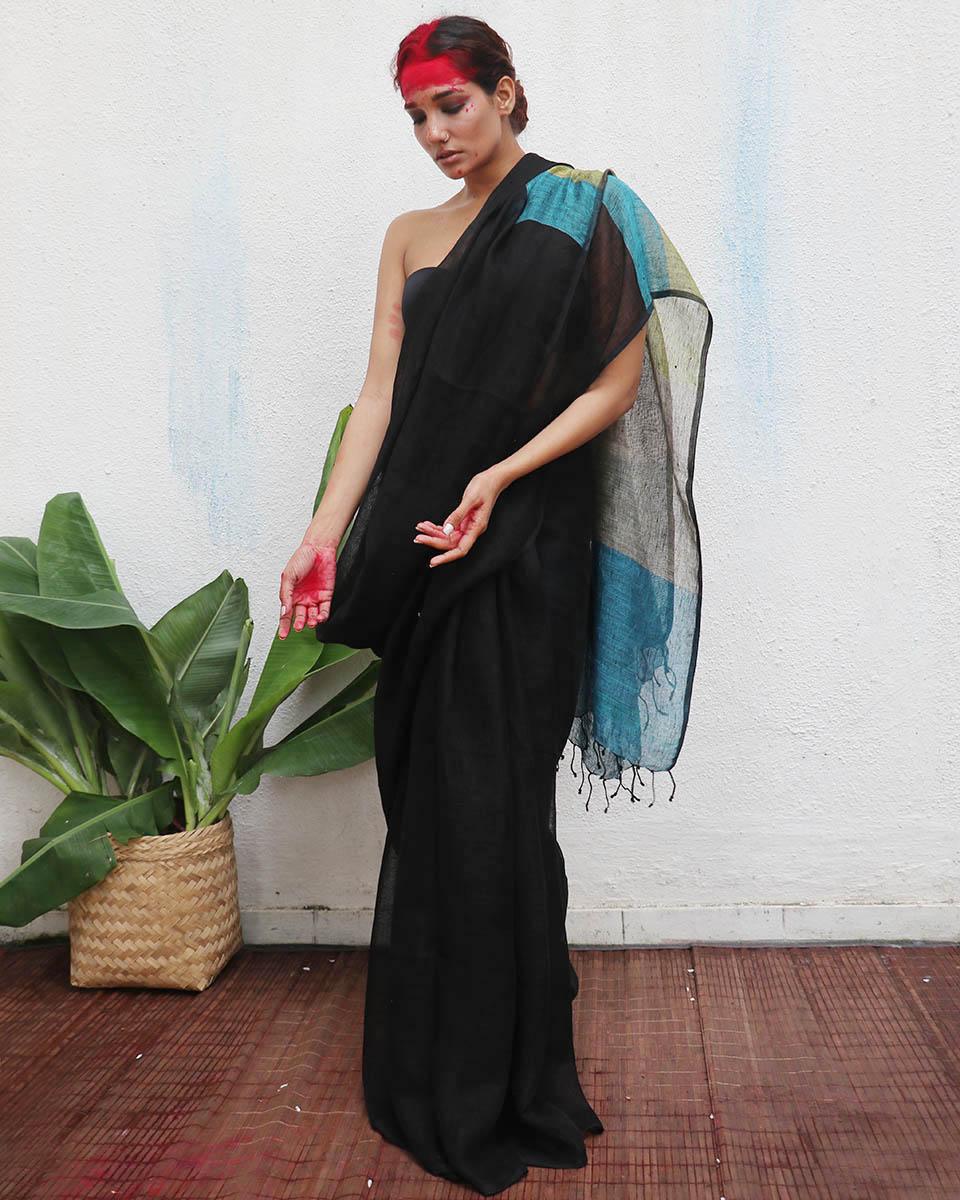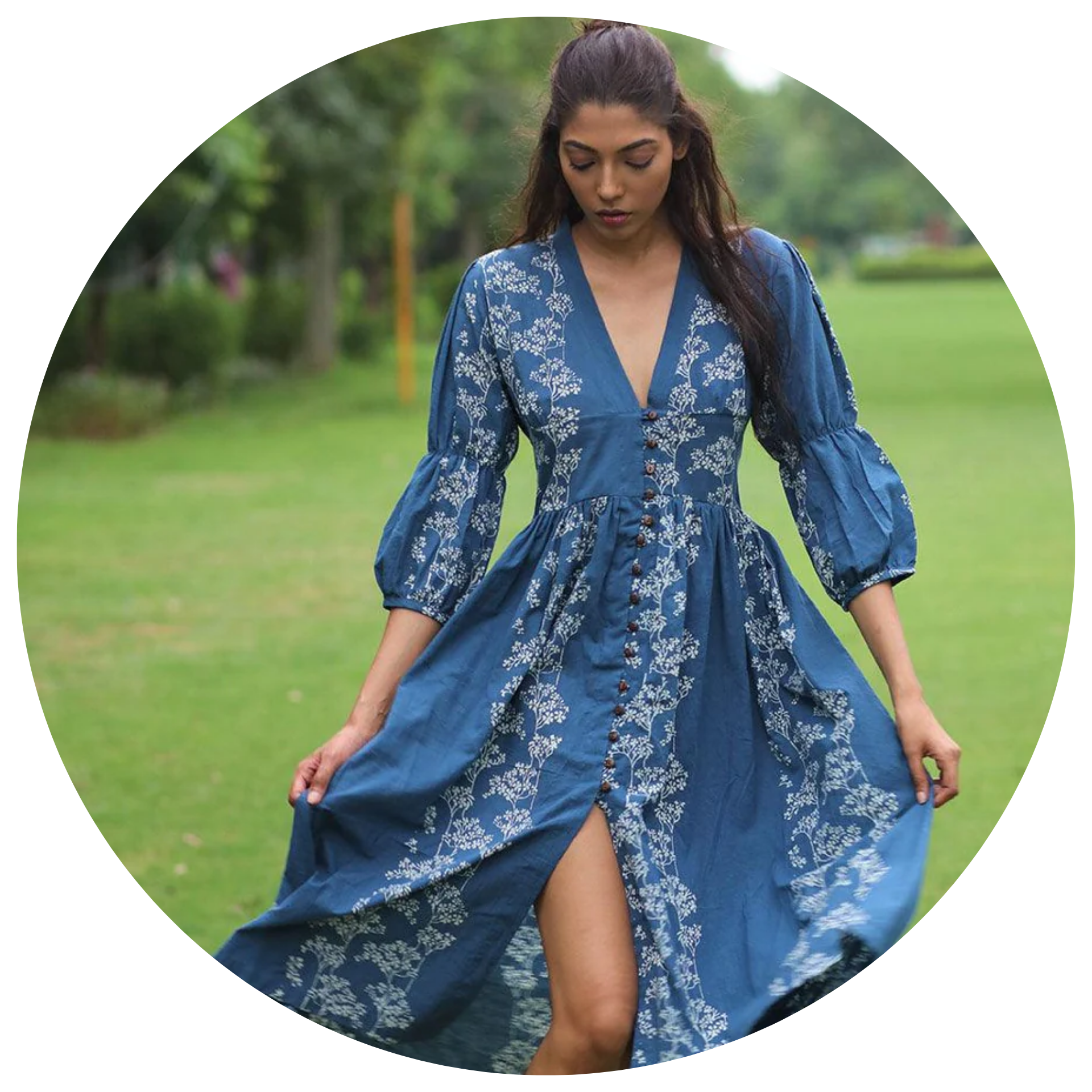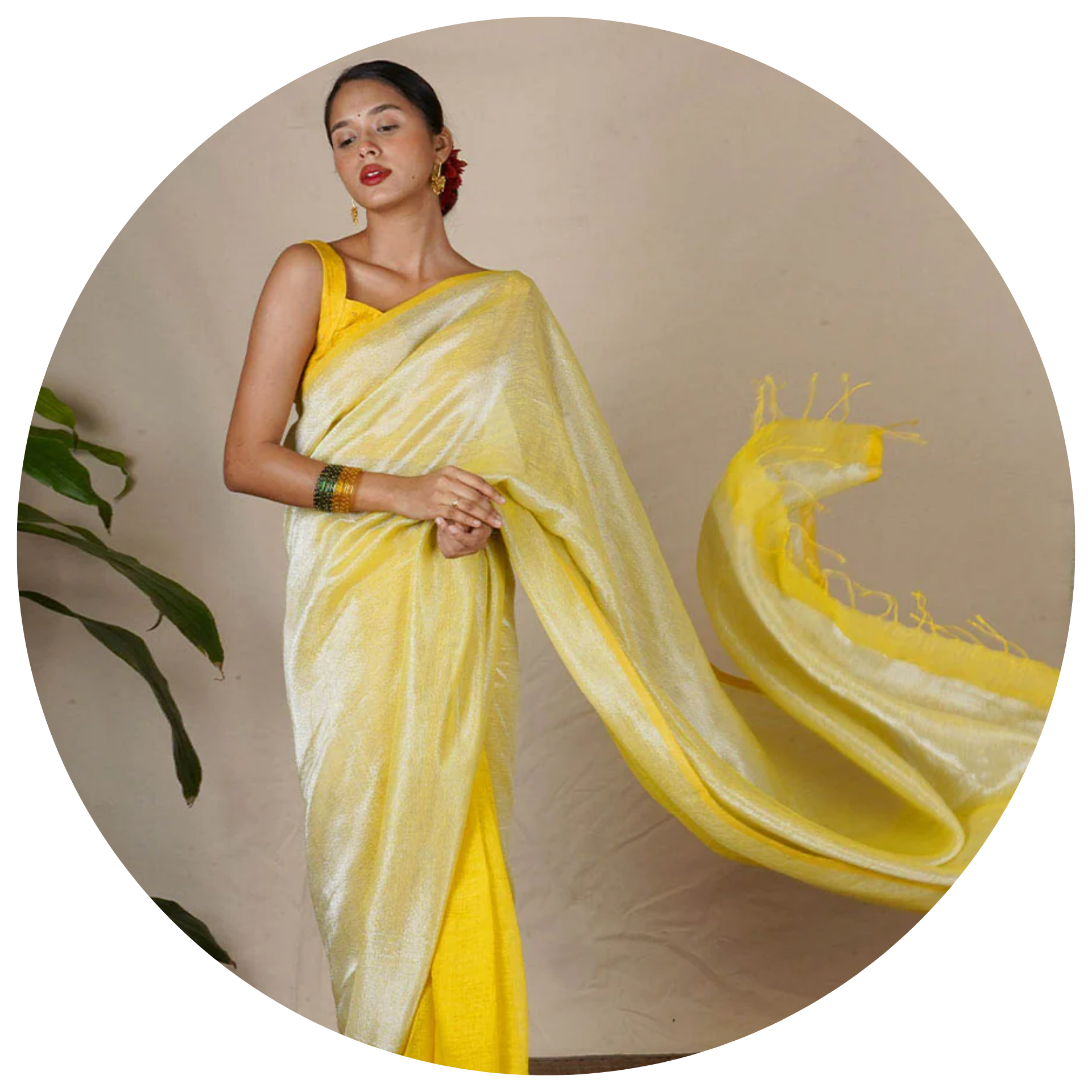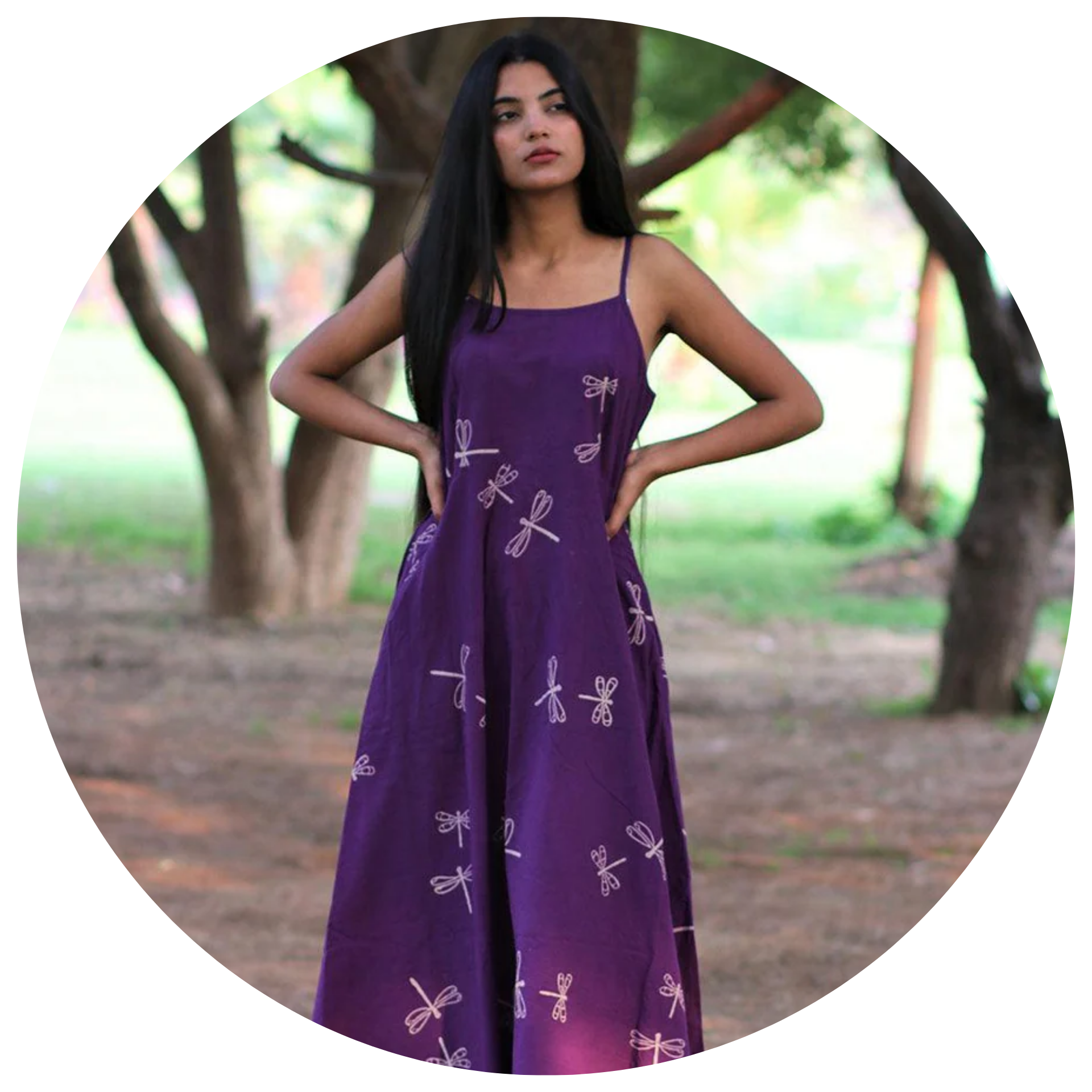Shop Handwoven Linen Sarees
In the world of fashion, where trends come and go, there's a timeless allure to certain fabrics that transcend fleeting vogue. Linen is one such fabric. Renowned for its breathability, comfort, and classic elegance, linen has stood the test of time. At Chidiyaa, we celebrate the age-old charm of linen through our Handwoven Linen Sarees collection, which includes the enchanting Linen Zari Sarees and the evergreen classic Linen Sarees. These sarees are more than just pieces of clothing; they are handwoven tales of tradition, artistry, and modern style.
Introducing Handwoven Linen Sarees Collection at Chidiyaa:
Linen Zari Sarees: Within this collection, we introduce you to the ethereal Linen Zari Sarees. These sarees are poetry in fabric, with delicate zari work interwoven into the soft linen, creating a stunning visual symphony. Each Linen Zari Saree is a celebration of grace, making it the perfect choice for special occasions. These sarees effortlessly marry tradition with contemporary aesthetics, ensuring that you look like a masterpiece in motion.
Classic Linen Elegance: For those who appreciate the uncomplicated comfort of pure linen, Chidiyaa offers a wide range of classic Linen Sarees. Crafted from high-quality linen, these sarees are more than just clothing; they are your statement of refined taste. Versatile in every sense, they effortlessly transition from casual affairs to formal gatherings, ensuring that they are a cherished addition to your wardrobe, season after season.
Weaving Stories, One Thread at a Time: At the heart of Chidiyaa's Linen Sarees lies a rich tradition of handweaving. Our dedicated weavers are not merely craftsmen; they are storytellers who weave tales of artistry and tradition into every thread. Each Linen Saree is an intricate masterpiece that pays homage to the rich heritage of Indian handlooms.
Subtle and Sophisticated: Simplicity has a voice of its own, and Chidiyaa's Linen Sarees let it speak volumes. The understated elegance of linen finds its perfect expression in the subtle designs and motifs that grace these sarees. They let you make a lasting impression with a style that whispers sophistication and confidence.
A Kaleidoscope of Colors and Patterns: Our Linen Sarees collection doesn't limit your choices. It offers a diverse palette of colors, from calming earthy tones that evoke a sense of serenity to vibrant hues that sing with life. In addition to colors, we present a myriad of patterns, ranging from traditional motifs to contemporary designs, ensuring you find a Linen Saree that resonates with your unique style and personal preferences.
Seamless Shopping Experience: Chidiyaa understands the importance of convenience in today's fast-paced world. Our online platform has been designed to provide a seamless shopping experience. It empowers you to explore our Handwoven Linen Sarees collection from the comfort of your home, choose your favorites, place your order, and have them delivered directly to your doorstep.
Why Chidiyaa for Handwoven Linen Sarees?
Quality Beyond Compare: At Chidiyaa, we are unwavering in our commitment to quality. Our Linen Sarees meet the most stringent quality standards, ensuring that every piece you receive is a work of art.
Designs That Stand the Test of Time: Our Linen Sarees are not just fashionable; they are timeless classics. They defy the ephemeral nature of fashion trends, emerging as timeless pieces of art that you'll cherish for years to come.
Customer-Centric Approach: Chidiyaa places your satisfaction above all else. Our responsive customer support team is available to address any queries or concerns you may have. We believe in making your shopping experience as delightful as wearing our sarees.
Hassle-Free Returns and Exchanges: Customer satisfaction is paramount. We offer a straightforward return and exchange policy, ensuring that you are entirely content with your Linen Saree purchase.
Chidiyaa invites you to embrace the sheer elegance and comfort of Handwoven Linen Sarees. Whether you are enchanted by the regal charm of Linen Zari Sarees or prefer the simplicity and versatility of classic Linen Sarees, our collection provides a diverse range of options to suit your preferences. With Chidiyaa, you can celebrate the beauty of handwoven tradition and contemporary style in a single drape. Explore our collection online today and experience the epitome of grace and craftsmanship in every thread

